Categories
Subjects
Authors
Artists
Venues
Locations
Calendar
Filter
Done
March 20, 2024 – Review
Saskia Noor van Imhoff’s “Mineral Lick”
Tom Jeffreys
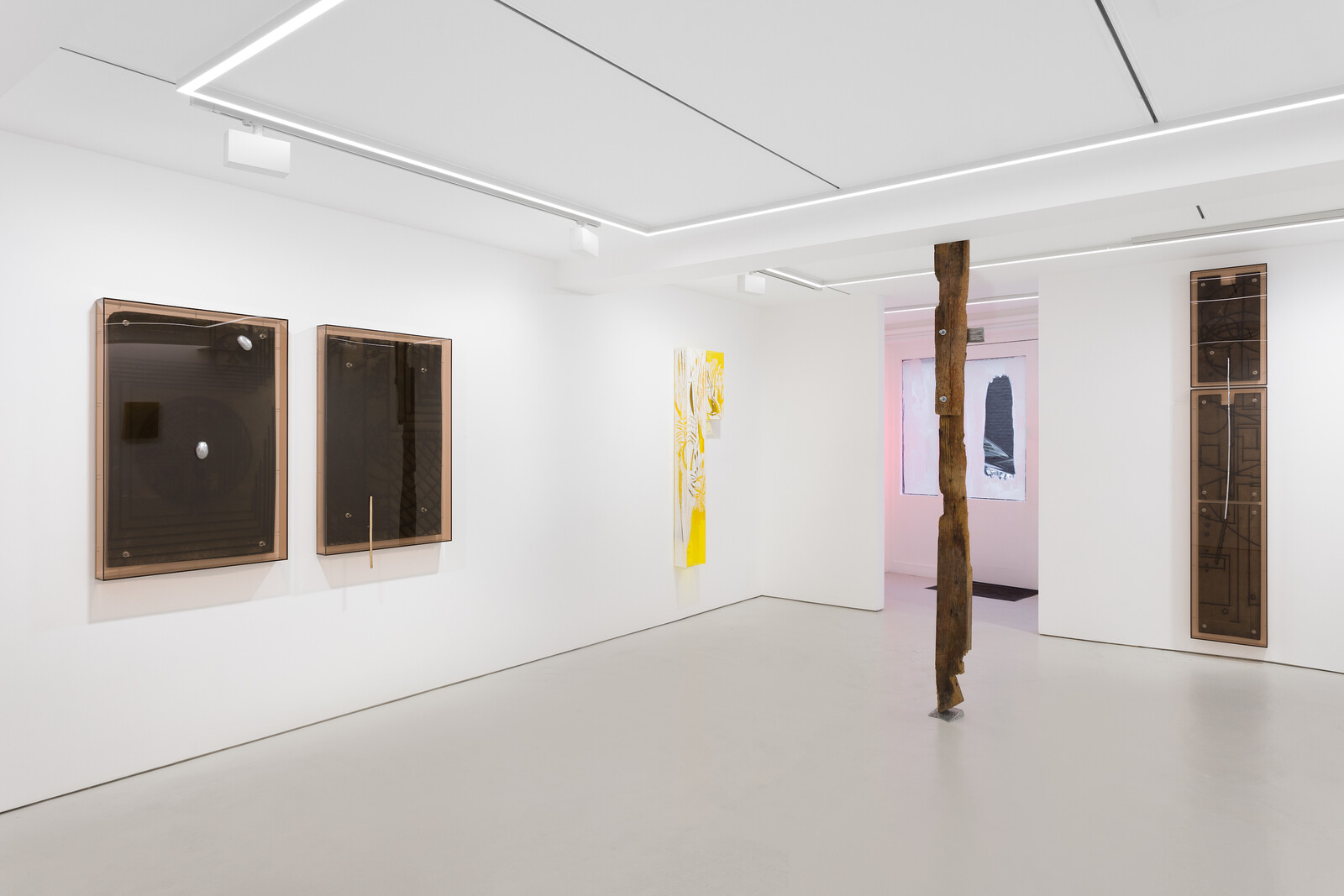
In 2021, Saskia Noor van Imhoff purchased a dairy farm amid the polder landscapes of Friesland in the Netherlands. The farm had been active for some four hundred years, but derelict for the past fifteen. van Imhoff approaches the site as a research project, entitled Rest, with the implication that the land, exhausted after centuries of extractive management, now finally has the chance to recover. With the land recuperating, the artist set to work: reactivating the farm not only as a site of agricultural production (prioritizing a certain conception of environmental responsibility over a profit motive) but also as a place for workshops, symposia, and other interdisciplinary activity. Meanwhile, van Imhoff has also reoriented her practice in response to the land, its historic uses and possible futures.
“Mineral Lick” is the first UK solo show for van Imhoff, whose previous work has focused on hierarchies of value within collecting institutions such as museums and archives. Here, she foregrounds unexpected material combinations underpinned by a fascination with grafting, hybridity, and the recontextualizing of materials. GRIMM’s street-level windows have been washed with white shading paint and the interior glows with pink-red light—both echoes of the forced growing conditions of commercial greenhouse production. …
February 2, 2024 – Review
Deimantas Narkevičius’s “The Fifer”
Michael Kurtz
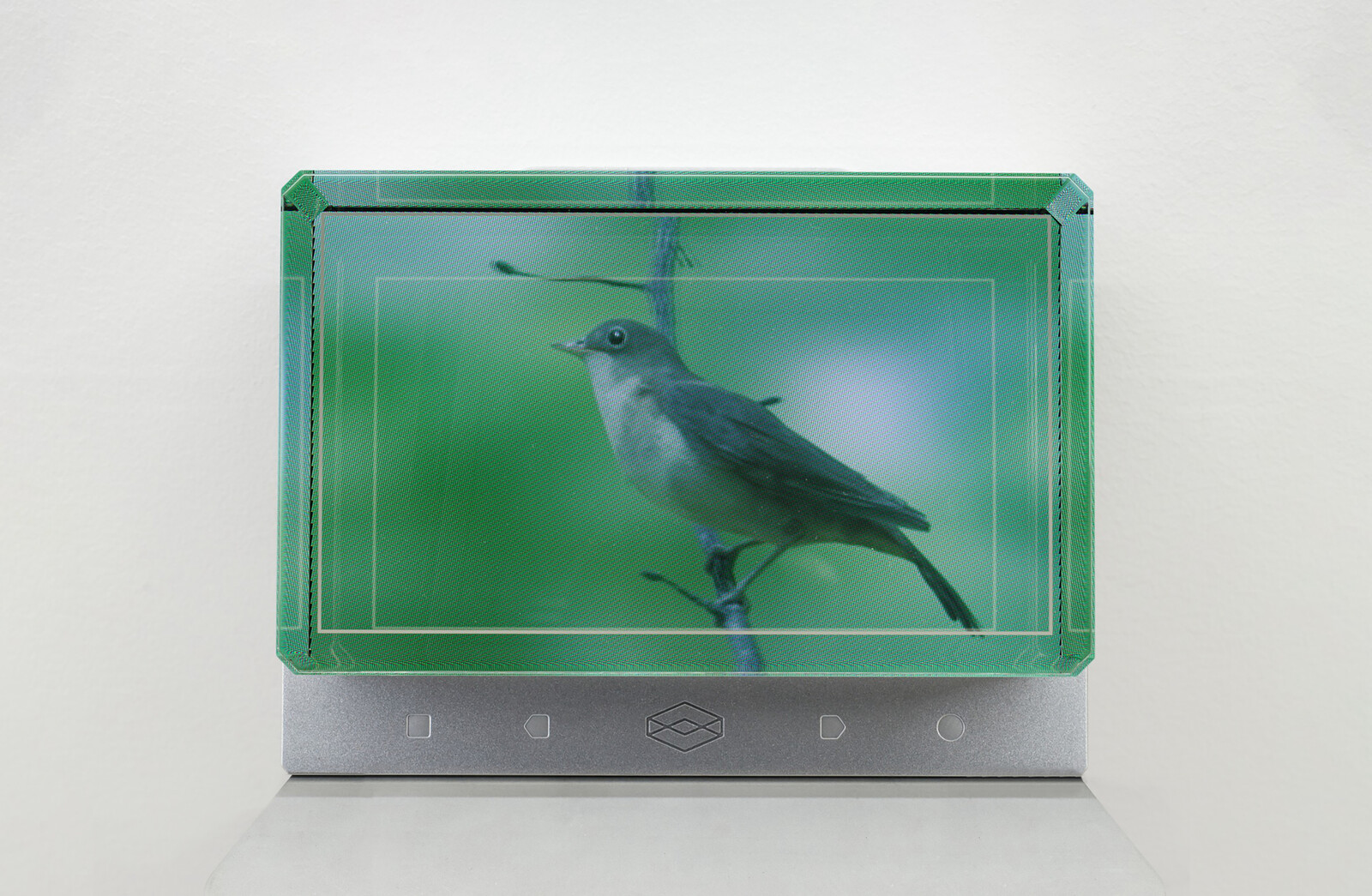
The centerpiece of Deimantas Narkevičius’s current exhibition at Maureen Paley is a holographic screen—a small block of glass on a sleek metal shelf. A nightingale appears in the glass and lands on a branch that hangs there, while audio plays of a flute mimicking birdsong in sync with the movements of its beak. It flies out of view again and then returns, left and right, left and right. On an adjacent wall is another branch of sorts—a bark-like bronze cast of the cavities inside a flute—and nearby hang two small black-and-white images: a 1920s photograph from the Lithuanian State Archive of a soldier playing the flute by a window and a digital recreation of the same scene from directly outside the building. This perplexing constellation of objects is named after the shadowy figure in the photograph, The Fifer (2019).
Holography represents the height of illusionism, elaborately conjuring animated three-dimensional images. But the nightingale’s restless movement in and out of frame continually calls attention to the screen’s edges, where the projection falters and the empty glass block becomes visible. The illusion is further ruptured by the flutist’s birdsong which, isolated from any ambient sound, is unconvincing. Each item here performs a …
November 7, 2023 – Review
Lutz Bacher’s “AYE!”
Michael Kurtz
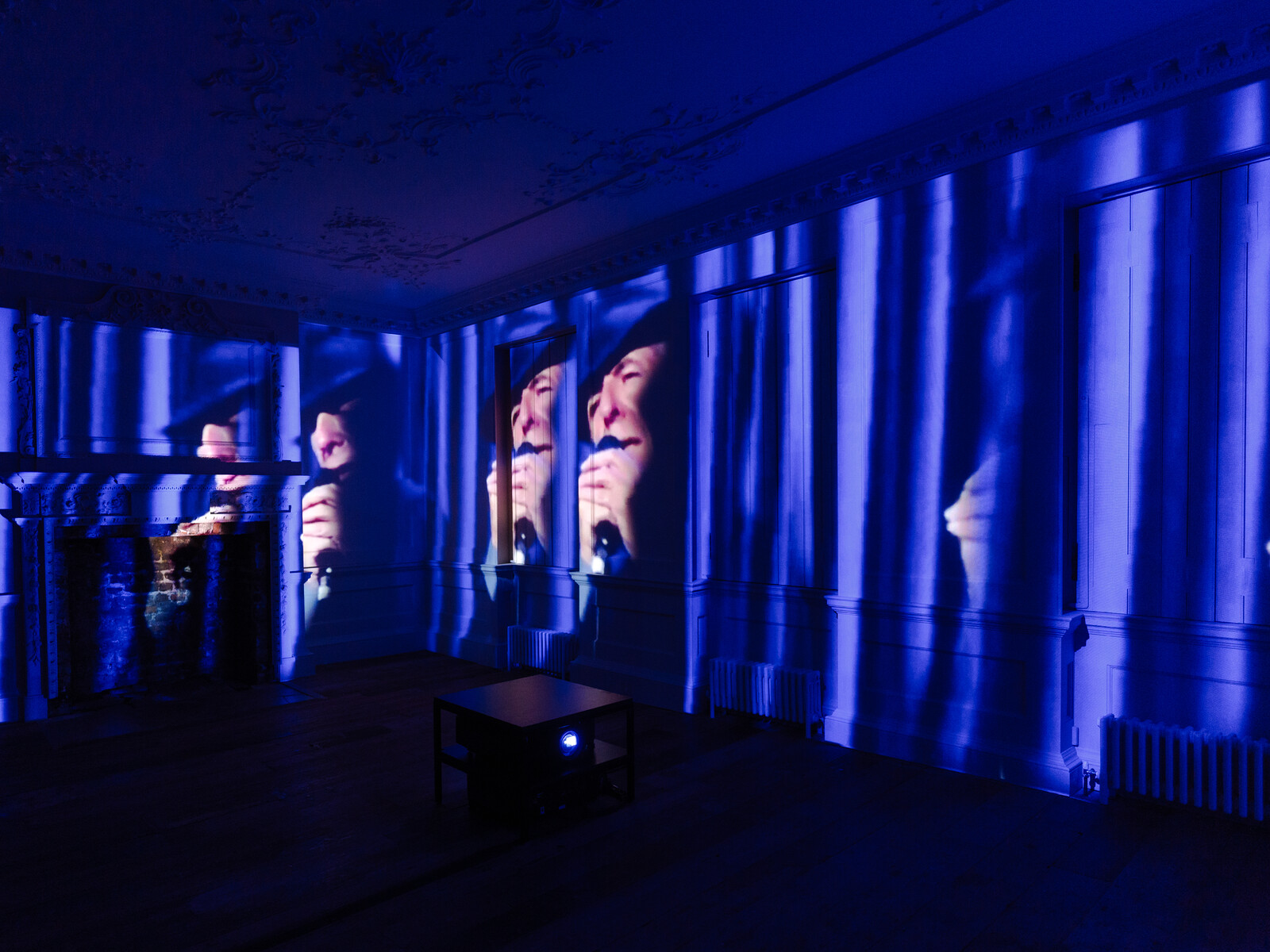
The first room of “AYE!” is carpeted with fine sand. Audio from Philip Kaufman’s 1988 film adaptation of The Unbearable Lightness of Being fills the air. “Tomas,” a woman asks between kisses, “what are you thinking?” To which Tomas replies: “I’m thinking how happy I am.” The clip loops—the lovers locked in this tender moment, accompanied by piano music and the thrum of rain and windscreen wipers—and with every repeat becomes more cloying and meaningless. Four television screens in a row to one side emit a white glow which fades each time the loop ends, an electronic sunset on the beach. There is a formal resonance between the artificially uniform texture of the sand, the blank monochrome screens, and the eternally recurring sweet nothings. In these elements—nature, entertainment, love—we seek comfort, but here find them in a state of entropy: metronomic, sterile, vacuous.
A child in red dungarees arrives at the door and points at me. “There’s a big man in the sandpit,” she announces to her father, getting his reassurance before dancing freely across the room. She writes her name in the sand, and in doing so shares something that the pseudonymous Lutz Bacher, who died in 2019, never …
September 12, 2023 – Review
Niklas Taleb’s “Solo Yolo”
Marcus Verhagen
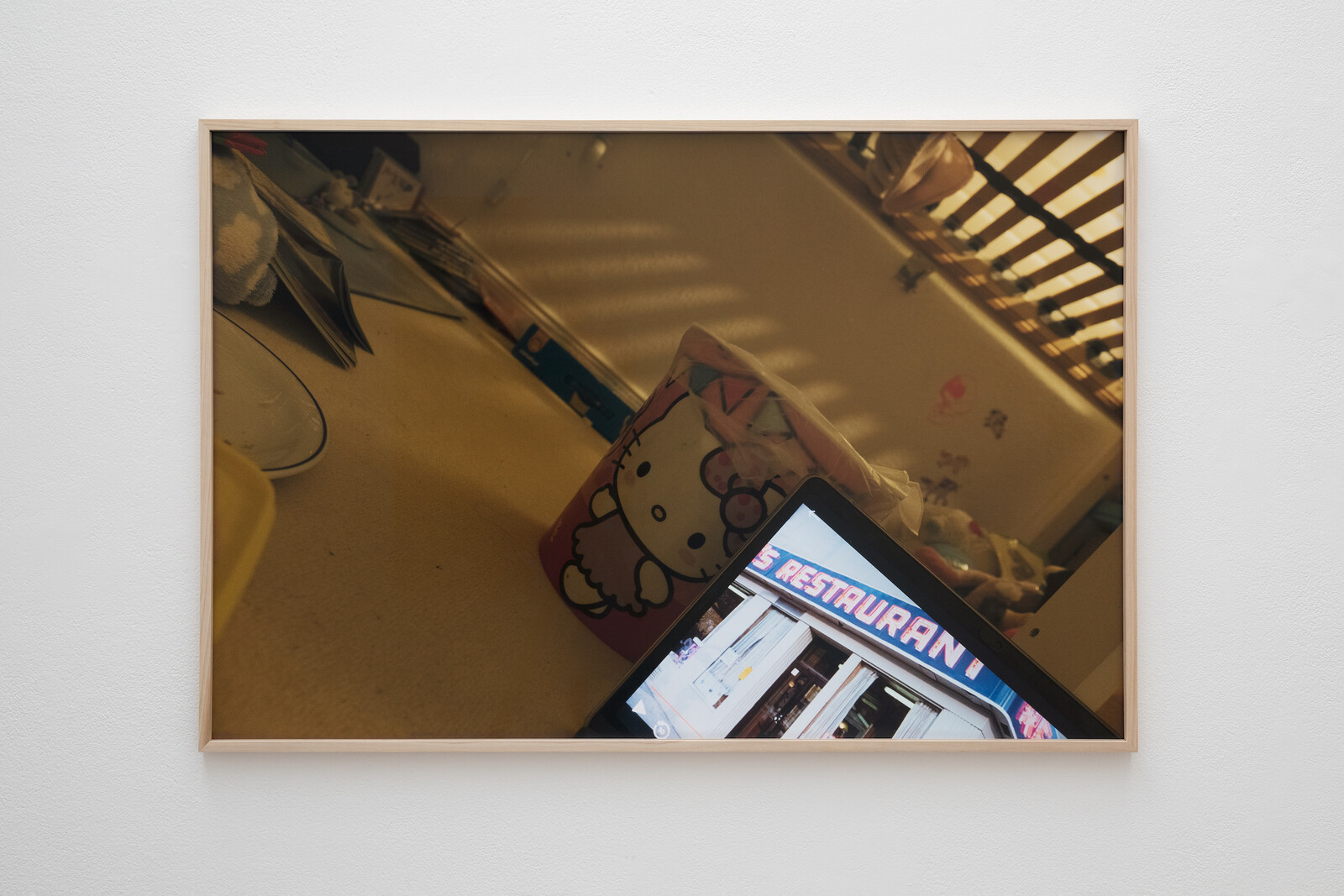
The photographs in the first UK show of the Essen-based artist Niklas Taleb describe intervals and cadences rather than people or events. In particular, they outline the rhythms of the home: most of them show the artist’s apartment, where, it would seem, time passes slowly. Arranged in a spare hang across the gallery’s two small-ish spaces, these are reserved images in which rooms feature more prominently than the family inhabiting them. Often untitled yet all dated 2023, they are populated by toys and crockery, computer screens, flowers, and mementos. The remains of a snack sit on a carpet, multicolored building blocks are balanced on the rim of a drawer, snapshots of relatives are tucked in the gilt frame of an old print. In their reticence, these glimpses into the day-to-day life of a household leave viewers to establish what narrative and thematic continuities they can.
The family itself is largely offstage. The shadow above the building blocks may be the artist in silhouette. Elsewhere, a woman, his partner perhaps, files an infant’s fingernails, but only their hands are visible. Social life makes a marginal appearance in two pictures of visitors absorbed in their own thoughts. In the liveliest scene here, …
July 13, 2023 – Review
Gelare Khoshgozaran’s “To Be The Author of One’s Own Travels”
Dylan Huw
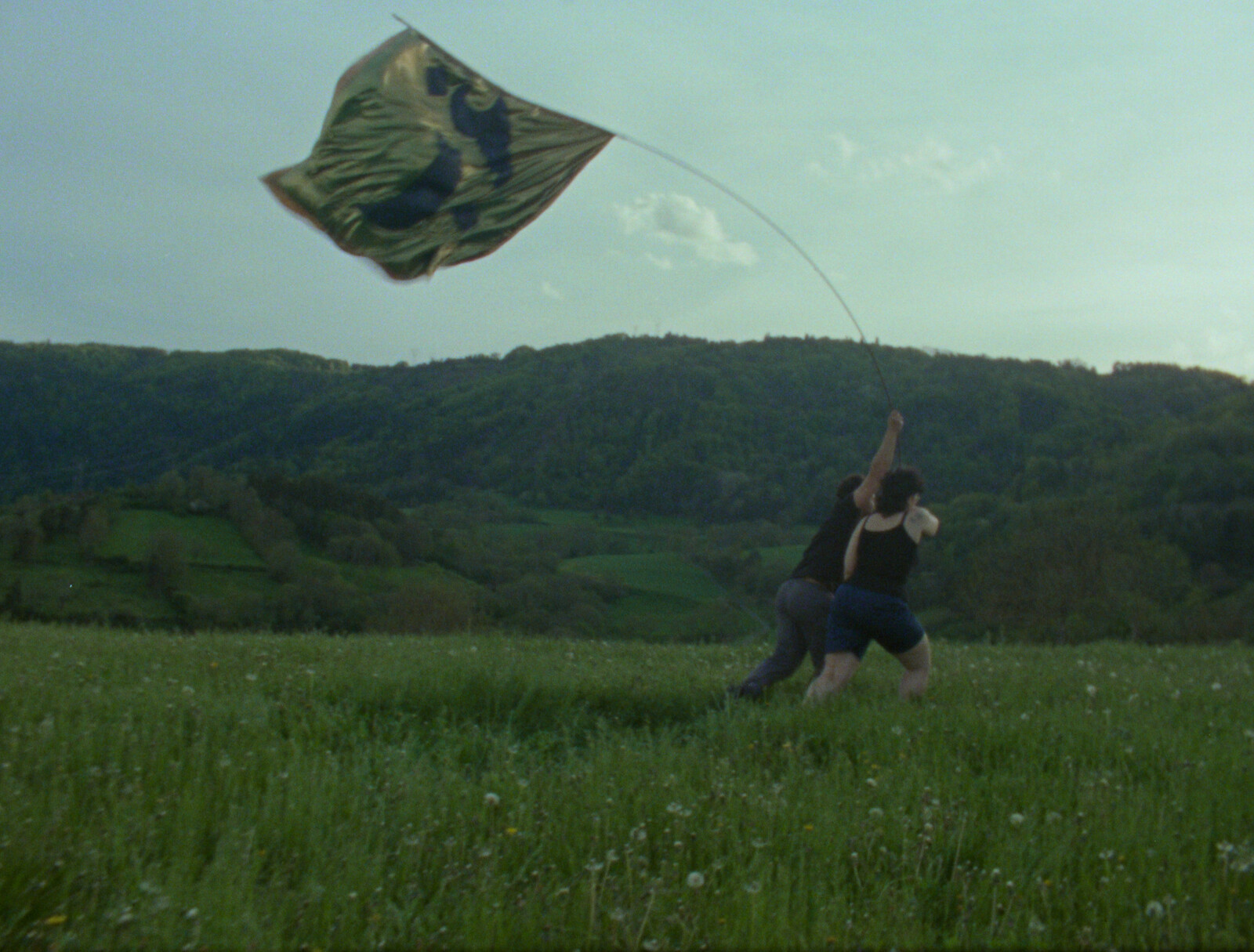
Gelare Khoshgozaran describes herself as an “undisciplinary artist and writer.” Across her work, she harnesses the capaciousness and flexibility of the essay form to articulate the possibilities inherent in exile. Her 2022 essay “The Too Many and No Homes of Exile,” for example, articulates the “limbo” of a life marked by latency and anticipation. While it draws on the artist’s personal memories, its emphasis—as in much of her work—is on forming associations and fostering solidarity across contexts of displacement. “You look at the map of Los Angeles,” she writes of the city in which she now lives, “and identify a map of exile.”
Her first solo exhibition in Europe, curated by Eliel Jones at Delfina Foundation’s cavernous central London space, features three moving-image works that reflect the lyricism and political intentionality of her written work. Born in Tehran in 1986, during the Iran-Iraq War, Khoshgozaran is particularly invested in making way for alternative, affirmative practices of living. She channels this wide-ranging understanding of exile into a methodology—and something approaching a narrative—in The Retreat (2023), the exhibition’s longest, loosest work.
Described in the press materials as “visual expansion” of Khoshgozaran’s 2022 essay, the film stems from an “exile retreat” organized by …
April 18, 2023 – Review
Raqs Media Collective’s “1980 in Parallax”
Patrick Langley
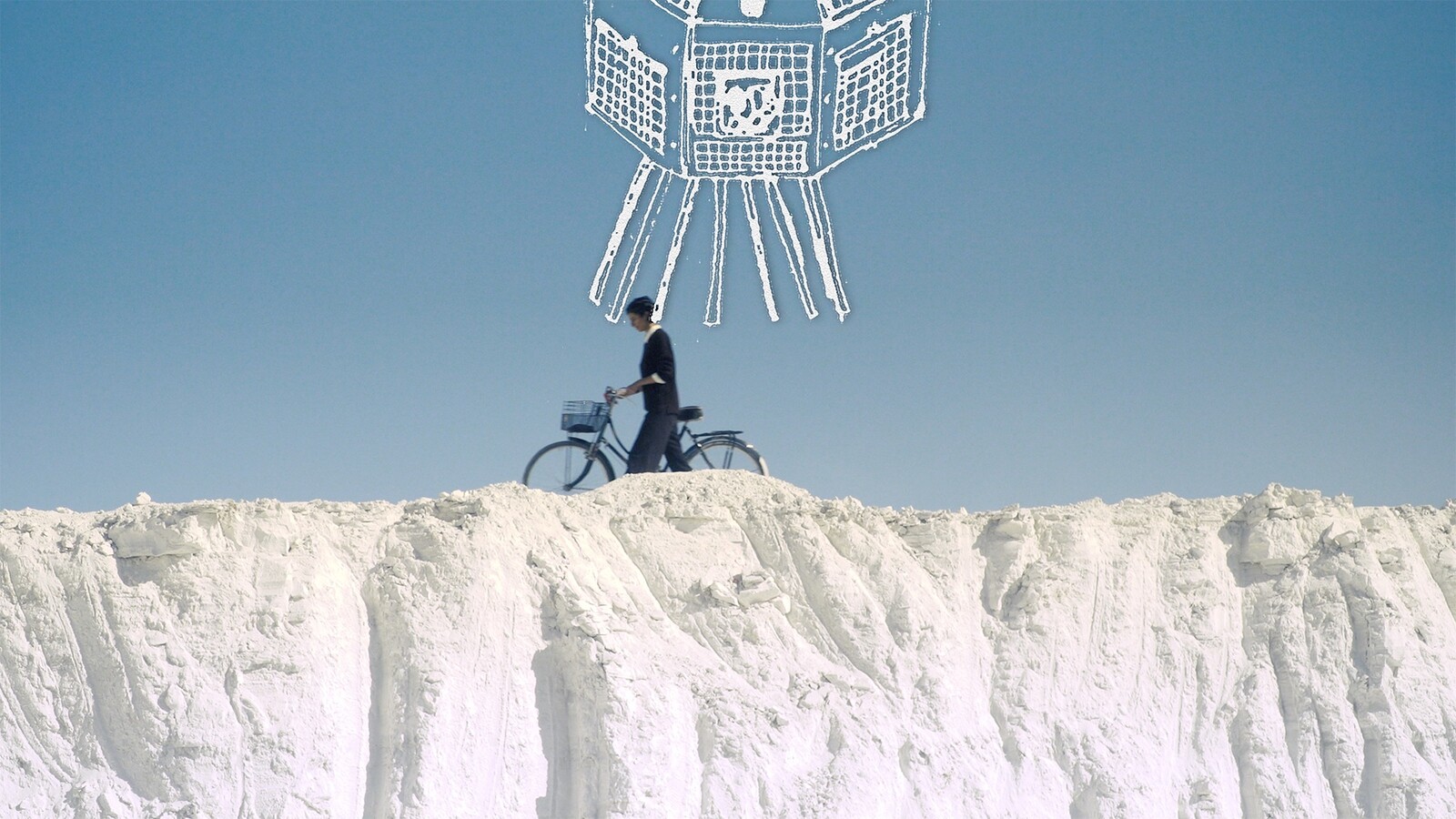
Charles Jencks was a pioneer of postmodern architecture—or “bastard classicism,” as his American detractors put it. In 1979 the American-born polymath and his wife, the garden designer and historian Maggie Keswick Jencks, purchased a large townhouse in London’s Holland Park and extensively redesigned it over the next five years. At once a family home and a “built manifesto,” The Cosmic House nods to Ancient Egyptian, Baroque, and Hindu architecture, modern science and urban planning, the Zodiac, western philosophy, and much else besides. Jencks integrated his eclectic references into a rich (and kitsch) symbolic scheme that sought to reconcile micro- and macrocosms: domestic pleasures and cosmic immensities; private gags and philosophical traditions. A cantilevered spiral staircase at the center of the building, for example, doubles as a model of the solar year with fifty-two steps for each week; at its base is Eduardo Paolozzi’s circular mosaic Black Hole (1982).
Leading off from this mosaic is the basement gallery, home to an elegant exhibition by New Delhi-based Raqs Media Collective. (Jencks was co-designing the gallery with his daughter Lily until his death in 2019; the museum opened to the public two years later.) Founded in 1992 by Jeebesh Bagchi, Monica Narula, and …
March 10, 2023 – Review
“People Make Television”
Brian Dillon
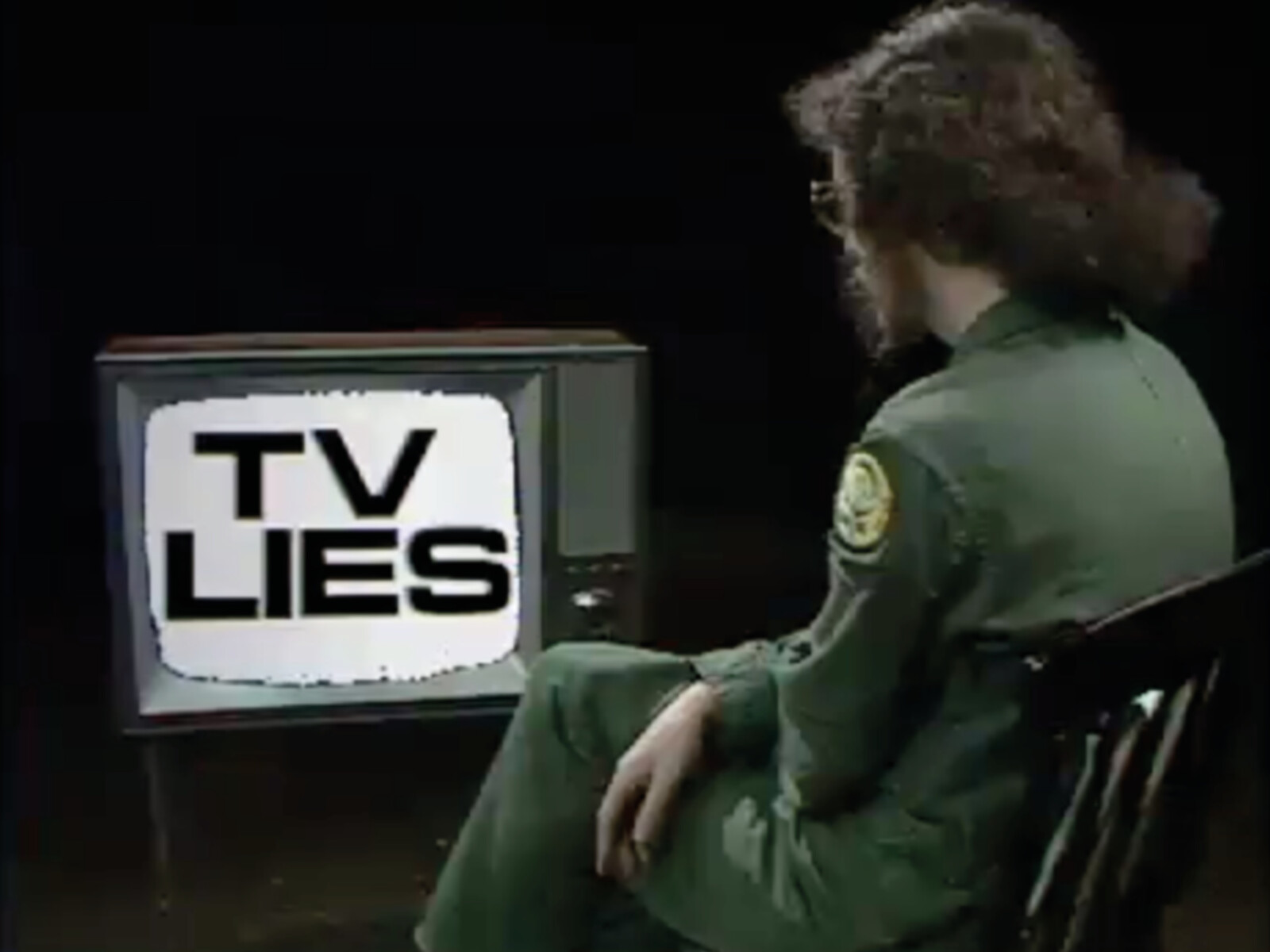
For much of its century-long history, the BBC has been an object of nostalgia in Britain. It began as a private company, and in 1927 a royal charter decreed its mission to “inform, educate, and entertain” the nation; the corporation is funded today by a television license levied on all households that watch its output. The public-service remit always appears to have been better fulfilled in the past, during a vague and movable golden age. Public service, of course, has rarely meant public access or participation. An exception was the work of the Community Programme Unit, which in 1972 began soliciting program ideas from interest groups and campaigning organizations. Around three in ten proposals were accepted; successful applicants were then provided with a small budget, a production team, and a final say in the show’s edit—subject to legal niceties and the BBC’s sometimes vexing commitment to “balance.” Copies of the finished programs were given to the groups who devised them, but most were never broadcast again. “People Make Television,” an absorbing exhibition at the newly reopened Raven Row, includes over 100 of the CPU’s programs (alongside other public-access projects of the time), and seems to conjure a genuine lost era …
January 10, 2023 – Review
Aarati Akkapeddi’s “A·kin”
Michael Kurtz
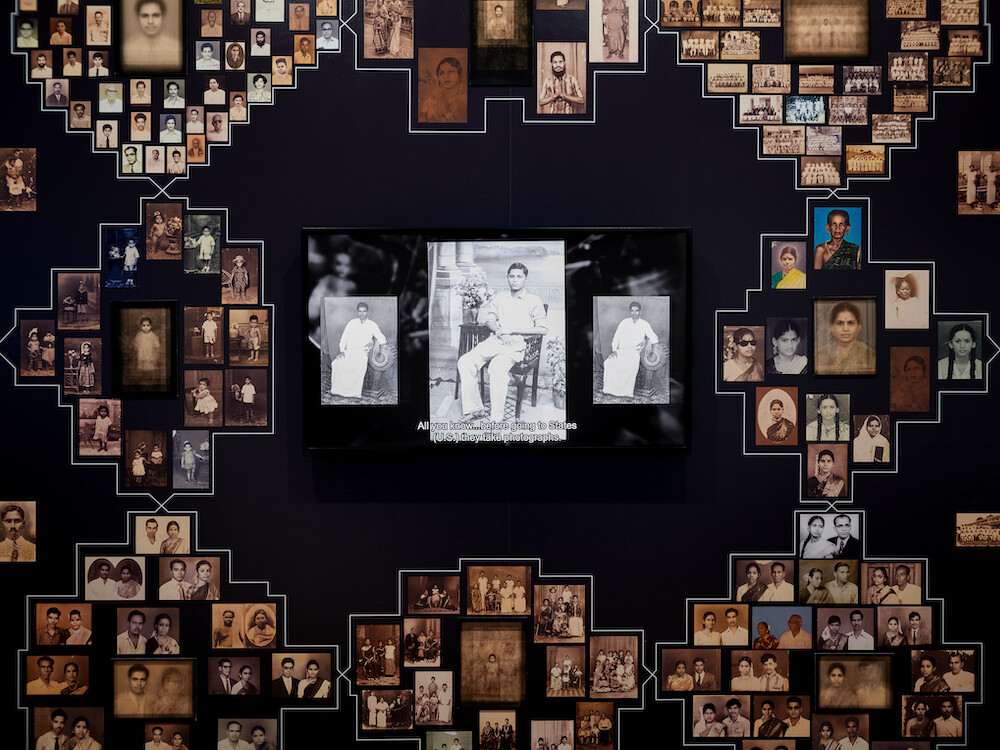
Aarati Akkapeddi’s work exploits the uneasy interaction of analog and digital—paper and pixels—to convey the strangeness of both our warped view of the past through dog-eared images and the mediation of the present by algorithmic technologies. “A·kin,” at London’s Photographers’ Gallery, continues the Telugu-American artist and programmer’s practice of using machine-learning algorithms to analyze and manipulate historical images.
The installation combines Akkapeddi’s family photographs from the south Indian state of Tamil Nadu with those from an archive created by the STARS research collective of Tamil studio photography from the 1880s to the 1980s. Akkapeddi used an image classification model called VGG-16 to sort the photographs into a grid based on formal similarity, and then divided them into twelve generic groups: portraits of children propped up by an object, for instance, and close-ups of couples in which the man stands on the left. These “clusters” are arranged across a gallery wall within the interlocking forms of a kolam—a pattern drawn with rice flour at the entrance of Tamil homes to bring good fortune and exclude evil spirits. A larger composite image at the center of each group collates the surrounding photographs as if to identify what they share, while interviews …
November 4, 2022 – Review
Olivia Plender’s “Our Bodies are Not the Problem”
Tom Jeffreys
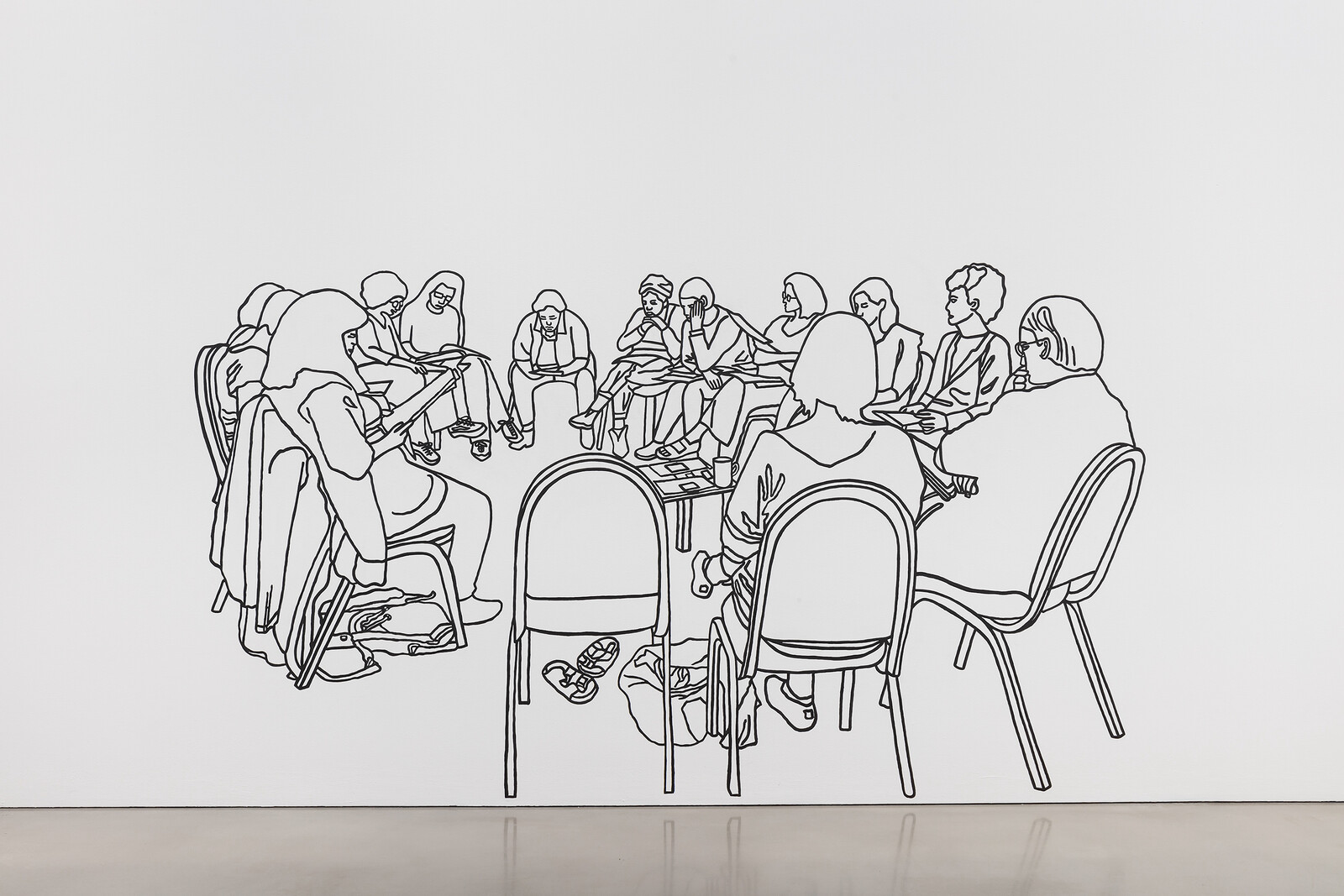
Olivia Plender’s research-driven practice is rooted in a fascination with the way communities self-organize—from activist groups, youth movements, and spiritualist associations to alternative education programmes and the offices of tech behemoths—and the strategies, labor, geographies, and architectures that enable (or obstruct) them. Her second solo exhibition at Maureen Paley recontextualizes texts, images, and actions relating to self-education and resistance, with the delicacy of several series of small drawings in black ink or charcoal pencil contrasting with all-caps wall posters proclaiming statements like “THEY WILL NOT DIVIDE US.” But in bringing together these slices from various projects, each of which has grown out of sustained historical research or community engagement, this exhibition is not always successful in communicating their richness or significance.
Plender takes great care in considering the spaces in which community organization takes place: she pays attention, for example, to the labor that goes into setting up for a meeting or tidying away afterwards. In 2021, she revamped the community room at Glasgow Women’s Library, transforming the upstairs area into one of welcoming softness. Plender’s life-size drawings are now emblazoned across a partitioning curtain. Floor rugs and jewel-toned bean-bags offer comfort for those wishing to sit or lie, while …
April 14, 2022 – Review
Patrick Goddard’s “Pedigree”
Tomas Weber

Watching animals in a zoo, Patrick Goddard’s show at Seventeen suggests, disapprovingly, is a bit like looking at art in a gallery: you stroll between marvels, whose only reason for being is to be seen. At the entrance to the gallery are three grisaille ink paintings (all 2022) behind reeded privacy glass. Each stars a bichon frise dog: watching a burning car (Whoopsie at the End of the World), saying “up against the wall!” through a speech bubble (Whoopsie, Up Against the Wall), and next to a naked woman under the word “APOCALYPSE” (Whoopsie’s Dream). Against the quietness of these works on paper, a sculptural installation occupies a whole wall. Plague (Downpour) (2022) consists of 200 falling frogs cast in recycled lead and attached to the wall. Each is unique, its body caught in baroque contortions: some graceful, some agonized, some resigned. These works introduce the show’s prevailing theme of our entanglements with animal life, from pets to pests.
Humans enlist animals into satisfying their needs and desires. Sometimes such animals are threatening or toxic; usually, they are unfathomable. As John Berger points out in “Why Look at Animals?,” a 1977 essay that inspired Goddard, animals have been stripped of …
March 10, 2022 – Review
Every Ocean Hughes’s “One Big Bag”
John Douglas Millar

In the introduction to her friend the photographer Peter Hujar’s monograph Portraits in Life and Death (1976), Susan Sontag wrote that: “We no longer study the art of dying, a regular discipline and hygiene in older cultures; but all eyes at rest contain that knowledge. The body knows and the camera shows inexorably.” Sontag wrote those lines from a hospital bed while awaiting surgery to remove a malignant tumor from her breast. The surgery was successful, but she would die from cancer a quarter century later, terrified, furious, and absolutely unresolved.
On June 5, 1981 the first clinical report on AIDS was published in the Morbidity and Mortality Weekly Report. In the years that followed, the gay and queer communities and other vulnerable minorities were forced to “study the art of dying,” to construct communities of mourning and activism and develop clusters of “lay-expertise” in pharmaceuticals and their trialing, endocrinology, blood science, and the legal and ethical structures of the medical and death industries. As the art historian and ACT UP New York member Douglas Crimp argued, “AIDS intersects with and requires a critical rethinking of all of culture: of language and representation, science and medicine, health and illness, sex and …
March 4, 2022 – Review
Jala Wahid’s “AFTERMATH”
Adeola Gay
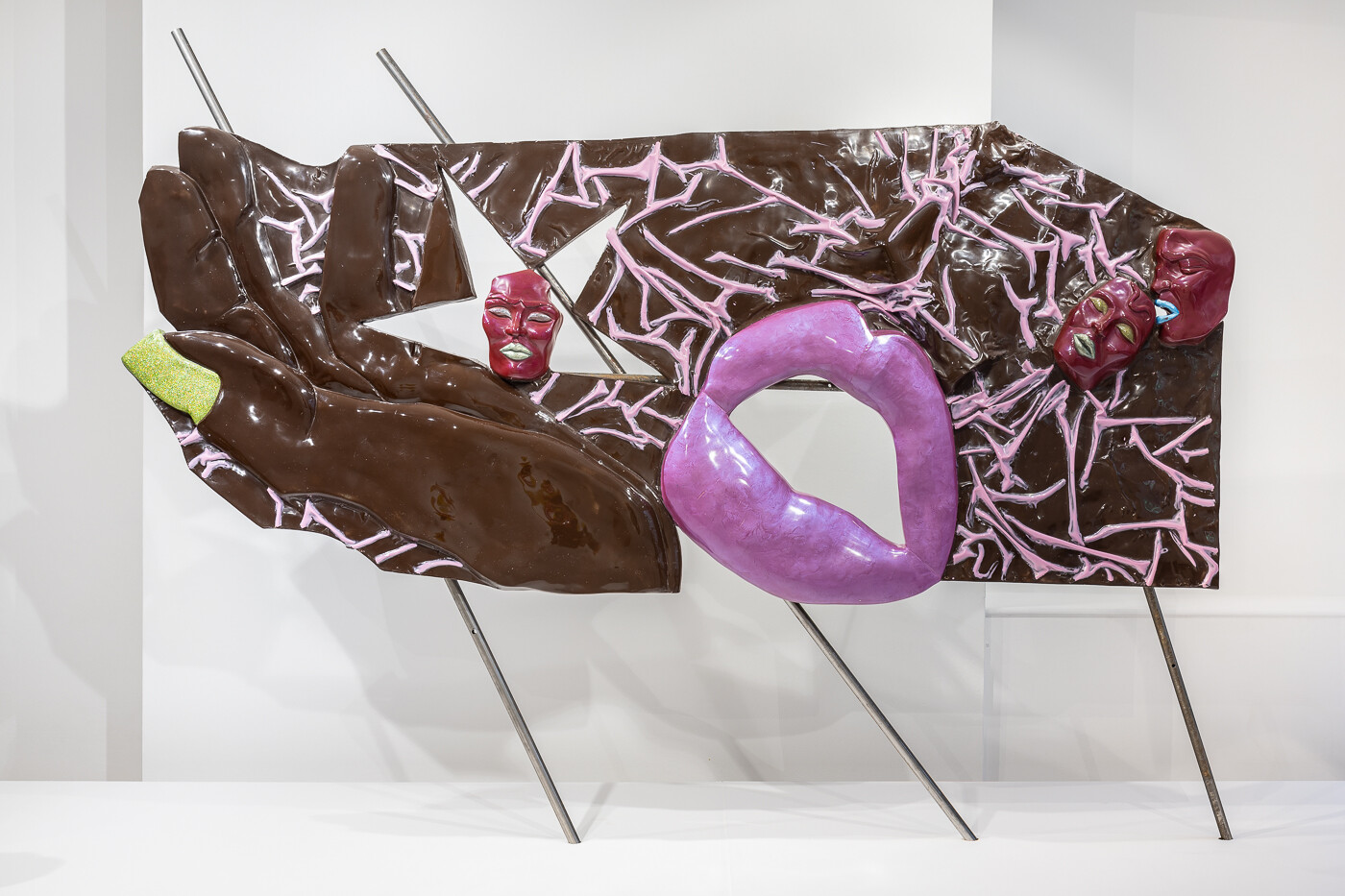
Delicate sheets of paper are scattered over the floor of Jala Wahid’s exhibition at Niru Ratnam Gallery. The pieces are reminiscent of leftover protest flyers and posters, giving the sense that a demonstration has taken place. The Kurdish-British artist’s exhibition continues her interest in exploring materiality, investigating the symbolic elements of archival objects. Wahid’s latest series of works is heavily informed by her research at the Kurdish Cultural Centre and the UK National Archive in London. The two archives focus on contrasting aspects of Kurdish history, with the former dedicated to the lived experiences of the Kurdish community, and the latter serving as a public record, listing details of treaties, conflicts, and political policies.
“Aftermath” is a collection of seven compelling objects and texts, with two sculptures hung on the wall, two sculptures placed on a long base, two text pieces displayed on plinths, and the paper cut-outs spread across the gallery floor. The exhibition prompts questions including: Who is allowed to narrate history? How does one document that history? And, most importantly, how are cultural identities formed? As with much of Wahid’s work, these recent pieces embody a sense of memory. The artist captures moments of conflict and …
February 8, 2022 – Review
Donna Huddleston’s “In Person”
Chloe Carroll

If you had been wandering the corridors of the National Institute of Dramatic Arts, Sydney, sometime around the year 1997, you might have happened upon a young, overworked Donna Huddleston. The artist documented her experiences studying set and costume in the monumental 2019 work The Exhausted Student, in which a pale waif, having fainted, is held aloft by a group of concerned, impeccably dressed undergrads in a sling of milky green drapery, pieta-like. Informed by Huddleston’s student years, the artist’s first exhibition at London’s Simon Lee Gallery stages a one-woman show over eleven unabashedly theatrical new works on paper. The drawings here mark a departure from The Exhausted Student’s tableau form, instead focusing in on strange intimacies and individual dramas.
Several pieces show the artist herself, roughly life-size, donning various glamorous disguises: slinky, ruched dresses with plunging necklines; ruffled poet’s blouses under tailored camel coats; immaculately coiffed wigs. She slips from frame to frame like a woman on the run. Most are rendered entirely in Caran d’Ache pencil, a painstakingly slow process and unforgiving material which lends itself naturally to the artist’s taste for minute detail against flat, overlapping planes and tightly choreographed mise-en-scene. Blocks of color are lightly flecked with …
February 4, 2022 – Review
Allison Katz’s “Artery”
Oliver Basciano

Why did the chicken cross the road? I don’t know—but Allison Katz has some suggestions. There are chickens aplenty in “Artery,” a show of 30 works, the majority new, by the Canadian painter. The other side (2021) is a painting of a cockerel in motion that recalls Eadweard Muybridge, the work hung across two freestanding walls so the bird seems to be surmounting the gap between them. Grains of rice—a kind of chicken feed, presumably—are scattered across the canvas surface, stuck on and around the golden animal. Despite the bird’s strut, it’s unclear—given the yellow plumage and blue-feathered head—whether what we are looking at is the result of Katz painting a chicken (or a photo of a chicken), or of her painting a chicken-shaped ornament; whether this painting is a representation, in other words, or a representation of a representation.
This quandary seems answered in The Cockfather (2021), a painting titled like a hipster fried chicken joint, but which in fact shows a kitschy egg holder in the shape of a cock in which are placed three eggs, the neck of the apparently misgendered bird (it is hens who normally warm eggs) forming a handle. This plumed porcelain soul …
November 4, 2021 – Review
Hurvin Anderson’s “Reverb”
Kevin Brazil
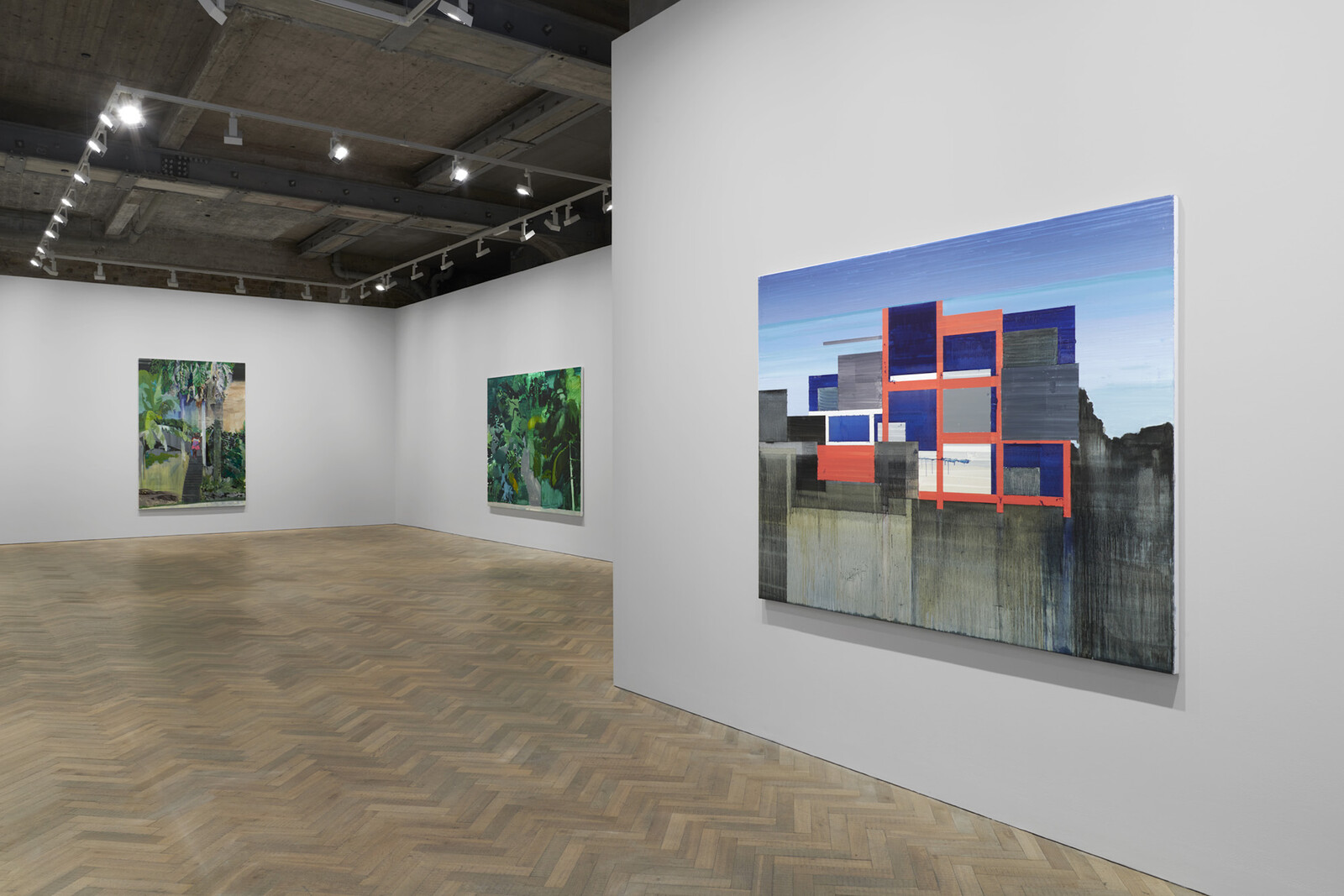
The first painting you see on entering Thomas Dane’s white-cube gallery—one of the two Duke Street spaces devoted to Hurvin Anderson’s “Reverb”—is called Skylarking (all works 2021). In a two-meter tall canvas, three small figures stand in the lower foreground. A woman, to the left, looks away from the viewer. Another, in the middle, looks to the right, partially obscuring the face of a man standing behind her. Are they looking at one another? Conversing? Above loom palm trees in bursts of dark green, aquamarine, and lime—above, albeit only on the surface of a canvas. The size of the trees in relation to the diminutive figures makes it hard to situate both in a coherent three-dimensional space, one which further dissolves in the lower half of the canvas as the paint thins into long thin drips. In their frozen interactions, and in their relationship to the trees, these figures are at once proximate and distant; almost touching, yet floating in unarticulated space.
This sensation of proximity and distance is produced by all the paintings in this show, even when, as is more common, no human figures appear. Each work, rendered in oil, depicts a hotel complex in northern Jamaica, where Anderson’s …
July 8, 2021 – Review
Tursic & Mille’s “Strange Days”
Kevin Brazil
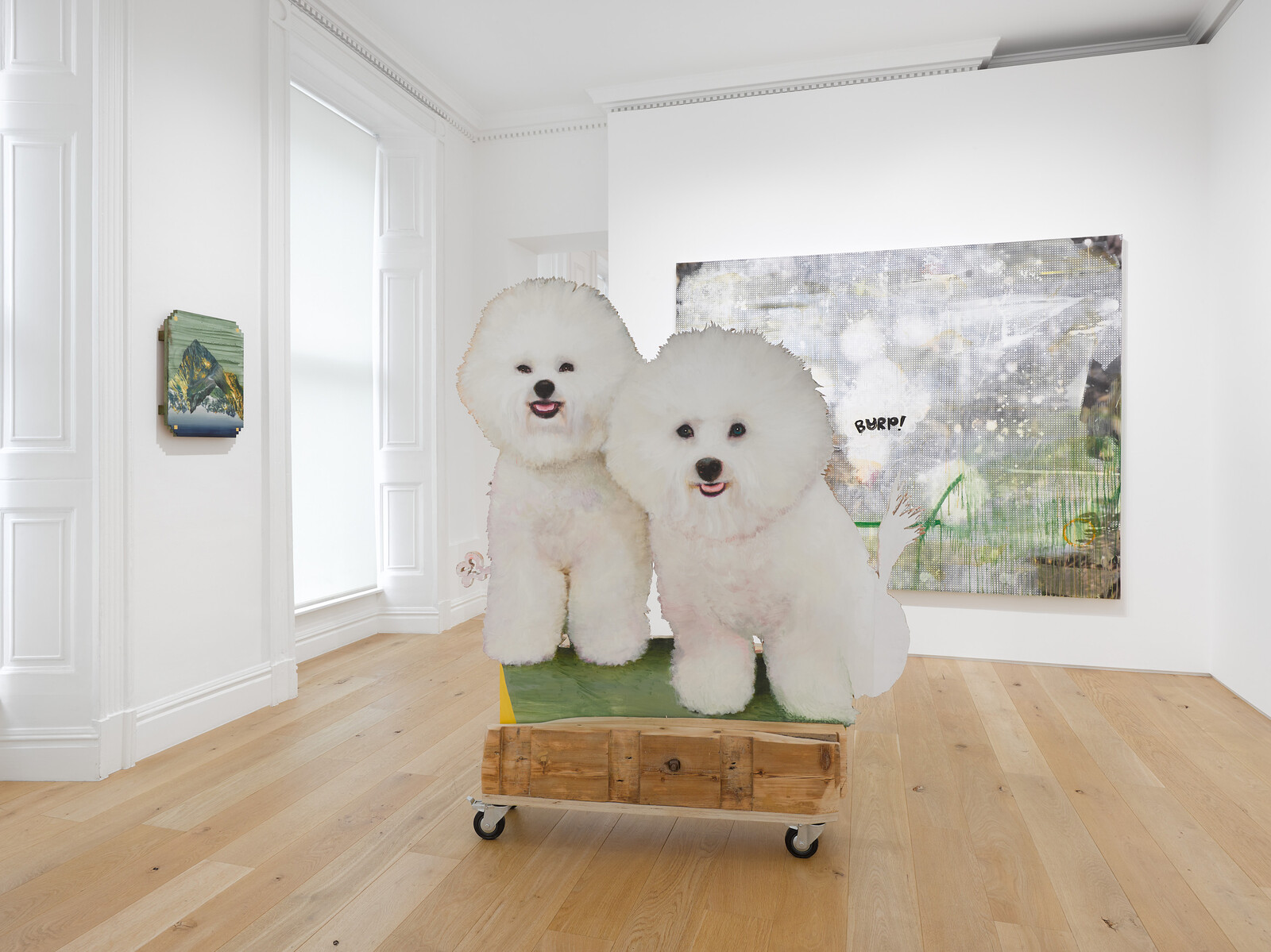
Tursic & Mille’s Blue Monday (January) (all works 2021), an oil painting on a wood panel, depicts a young woman in a gingham dress sitting at a table. She is staring with confused disgust at her fingers, covered in the blue paint that lies, in a viscous blob, on the surface in front of her. Or rather, on the surface of the wood panel. Or rather: both on the table and on the panel at the same time, for the blue is so thickly applied that, disrupting the illusion, it reminds us that a painting is always matter and representation at once. Like this girl, Tursic & Mille are transfixed by this fundamental fact about painting: a fact and a fixation, which seems to unsettle as much as it captivates.
Each painting in “Strange Days,” Tursic & Mille’s first UK solo show, has a month of the year as a subtitle. These works, along with two sculptures of painted dogs, were all painted in 2021, yet the calendar they constitute serves as a summary of the concerns that the Serbian artist Ida Tursic and the French Wilfried Mille have explored since beginning to work together in the early 2000s. They start …
May 21, 2021 – Review
Peter Hujar’s “Backstage”
John Douglas Millar

“Backstage” is the third solo exhibition of Peter Hujar’s work to be presented at Maureen Paley’s London space since 2008, when the gallery took responsibility for the artist’s estate in the UK. The work is presented across two rooms; a larger space that almost exclusively shows portraits of artists from New York’s thriving drag performance scene of the 1970s, either preparing their costumes and make-up or gloriously composed backstage. These silver-gelatin prints were made by Hujar himself, with three exceptions: a portrait of the filmmaker John Waters, another of his muse Divine, and a group self-portrait showing Hujar jumping in the air with friends. These are all estate ink prints made by Gary Schneider, the artist and master printer trained by Hujar and now widely regarded as one of the finest printmakers alive. He is also the only printer authorized to make editions of Hujar’s work.
The second, smaller room displays four further estate prints: an extraordinary nude self-portrait entitled Seated Self-Portrait Depressed (1980); a portrait of Hujar’s friend the writer and raconteur Fran Lebowitz reclining in bed at her parents’ home in Morristown; one of Hujar’s sometime lover, protégé, and friend, the artist David Wojnarowicz, sparking up a cigarette on …
May 10, 2021 – Review
John Akomfrah’s “The Unintended Beauty of Disaster”
Cora Gilroy-Ware
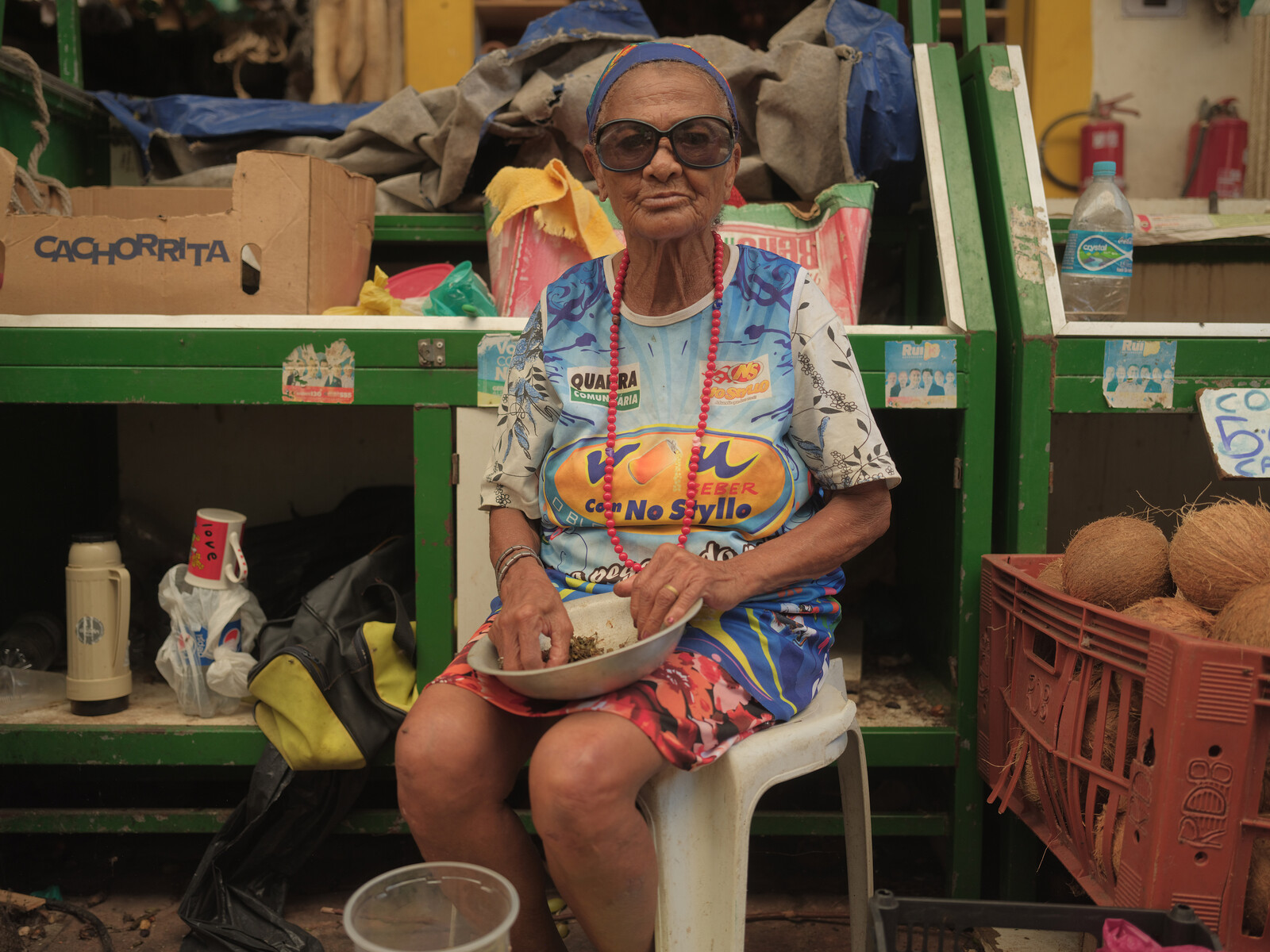
Viral videos, especially those featuring animals, rarely make a lasting impression. Part of their charm is their innate forgettability. But every now and then there is an exception. In April I came across a video online that has haunted me ever since. Shot by drone from directly above, this 49-second clip centers on a strange spiral made up of hundreds of tiny gray-brown forms moving clockwise over a pale surface. As the camera moves down, we see that these forms are four-legged creatures whose fur ranges from dark taupe to a white brighter than what gradually reveals itself to be snow under their hooves. When the camera retreats back up into the sky, we glimpse another, more dense and fast-paced spiral to the left. A caption states that these are “reindeer cyclones” captured on the Kola Peninsula, the north-eastern part of the area known as the Baltic Shield. Responding to an outside threat, reindeer gather and move in a whorl, keeping their fawns tucked safely in the middle. In the comments under the post, viewers asked what, in this instance, caused the reindeer to behave in this way. “Probably the drone” was the consensus.
Not only were these mesmerizing rosettes …
January 14, 2021 – Review
Lynette Yiadom-Boakye’s “Fly in League with the Night”
Caleb Azumah Nelson

In the foyer outside Lynette Yiadom-Boakye’s exhibition, a question is written on the wall. “What sounds can you hear when you look at the paintings?” Music spills from a hidden speaker; Miles plays. I can hear the way he held his horn, so closely attuned to the spaces he could inhabit within a melody, perhaps looking for a nod from his band, or, more likely, improvising, always improvising. Feeling rather than knowing.
When I enter the space, it is quiet. The music has stopped, but looking at the paintings around me I still hear Miles and Bill and Gil, Fela and Ebo, Solange and D’Angelo: the music Yiadom-Boakye had playing in the studio when painting. A tradition of rhythm rendered on canvas in blues and greens, yellows and reds. In this way, it is possible to see something and to hear it too, and I wonder if this is what feeling is.
What I do see: Black figures, in all manner of poses and activities, caught in private moments. They tease and taunt, they are in repose, they squat, they crouch, they hurt, they ache, they joy. They are quiet but never silent. In Later or Louder or Softer or Sooner …
November 5, 2020 – Review
Bruce Nauman
Kevin Brazil
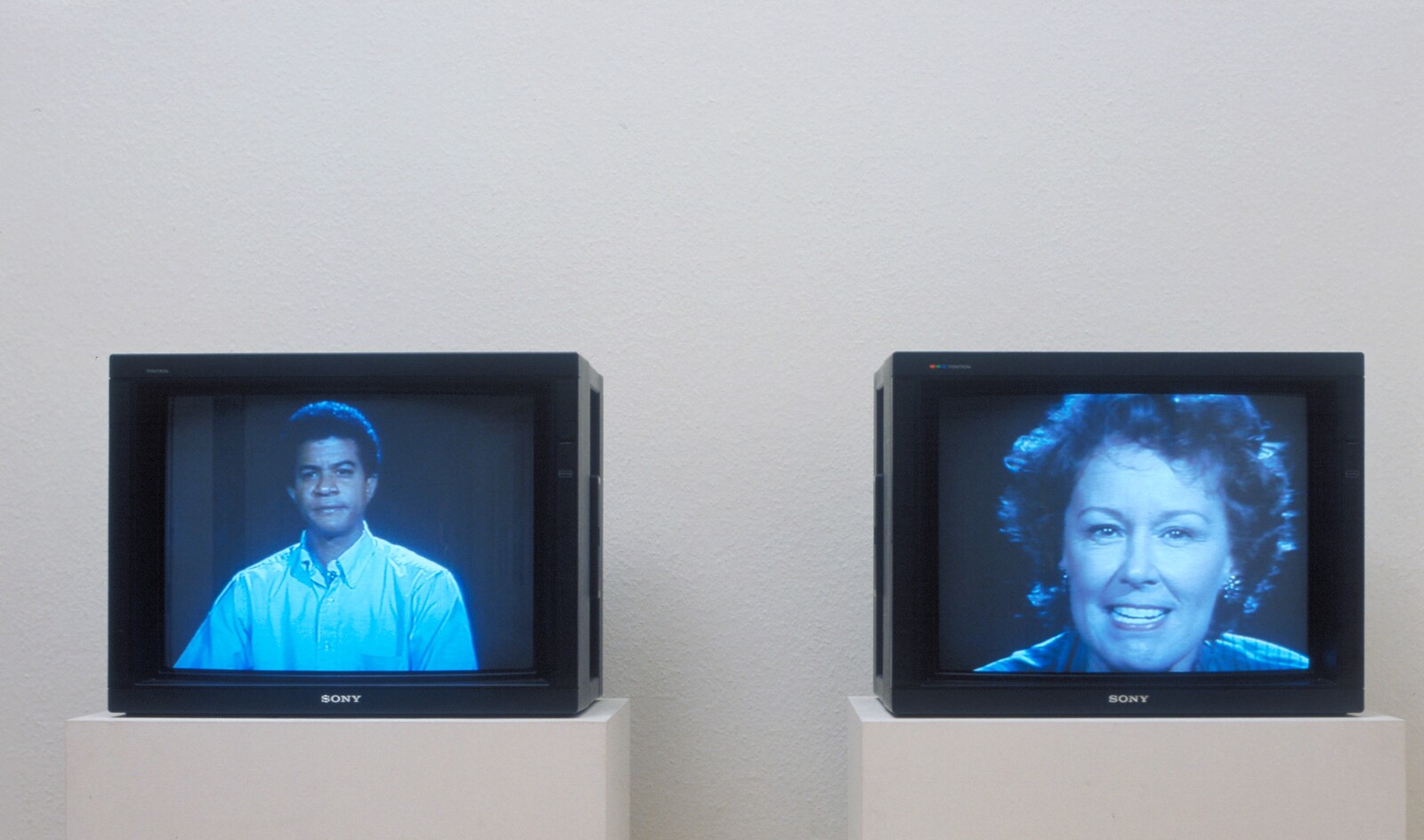
Even before you enter Tate Modern’s Bruce Nauman retrospective, you are put on edge. Approaching the galleries, you hear a man and woman shout “I hate, you hate, we hate!” from the screens of Good Boy Bad Boy (1985). As you queue at the exhibition’s entrance, Setting a Good Corner (Allegory & Metaphor) (1999), a video of Nauman erecting a wooden fence, assaults you with the nerve-shredding sound of a chainsaw. These sounds are deeply discomforting, but that which makes you uncomfortable is also that which you cannot ignore. Discomfort makes you aware of your own body: the unease caused by screaming, or the grinding of a saw, manifests in the tensing of muscles. Yet discomfort, in never becoming unbearable, induces self-reflection: you remain aware of what unsettles you and why. Attentive, aware of one’s body, reflective: discomfort shares much with how we think we should experience art. Why then does it feel so bad?
Discomfort as a state of awareness, this retrospective reveals, has been one of Nauman’s consistent preoccupations across six decades of work. Much has been made of Nauman’s exploration of media after Conceptual Art; many have traced his influence on later artists. Yet Nauman’s achievement …
September 24, 2020 – Review
Helen Cammock’s “I Decided I Want to Walk”
Chloe Carroll
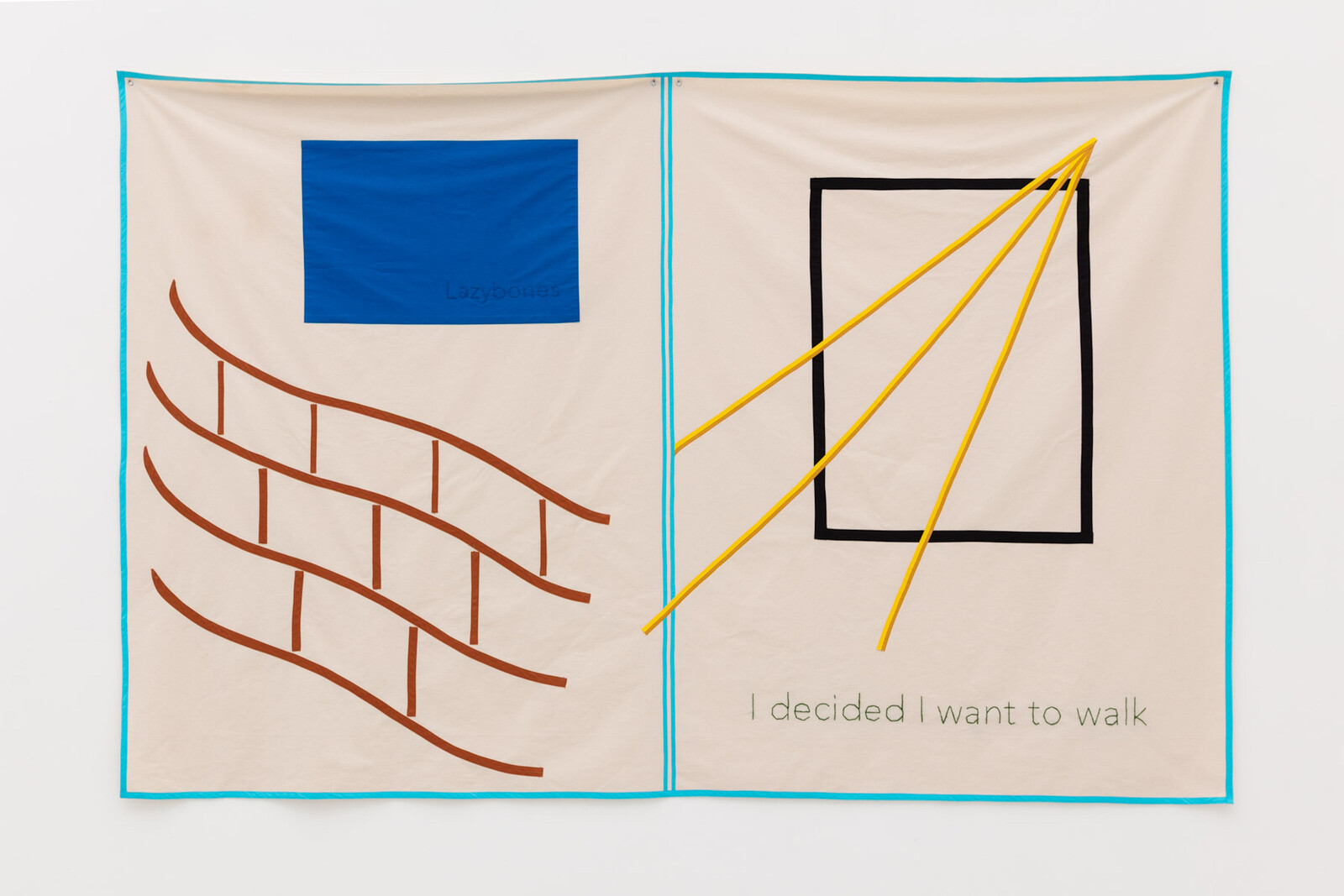
Helen Cammock’s 19-minute video They Call It Idlewild (all works 2020) presents, in no particular order, the static framing of: a brick wall, a statue, a frayed cobweb, grasses dipping in the breeze. The result of a pre-lockdown residency at Wysing Arts Centre, it’s the first piece encountered by visitors to “I Decided I Want to Walk,” the artist’s first solo exhibition at Kate MacGarry in London. The video’s imagery documents a space of retreat in rural Cambridgeshire, overlaid with a voiceover in which the artist ventriloquizes writers including Audre Lorde, Mary Oliver, and James Joyce.
Beyond the compact screening room at the exhibition’s entrance, two printed billboards (originally installed at a short-lived March exhibition at Wysing) line the walls of the light-filled main gallery, interspersed with a selection of new screenprints. Both series feature irregularly spaced white text against a monochrome background (crying/ is/ never/ enough; We/ Shared/ the/ Colour/ of/ Thought), and endeavor to rewrite the narrative of laziness, and to question its motives. Who is entitled to idleness? Who is expected to maintain productivity? For whom, in this moment, is idleness an applauded civic duty, and for whom is it a shirking of responsibility? Across the exhibition, …
July 24, 2020 – Review
Hannah Black’s “Ruin/Rien”
Harry Burke
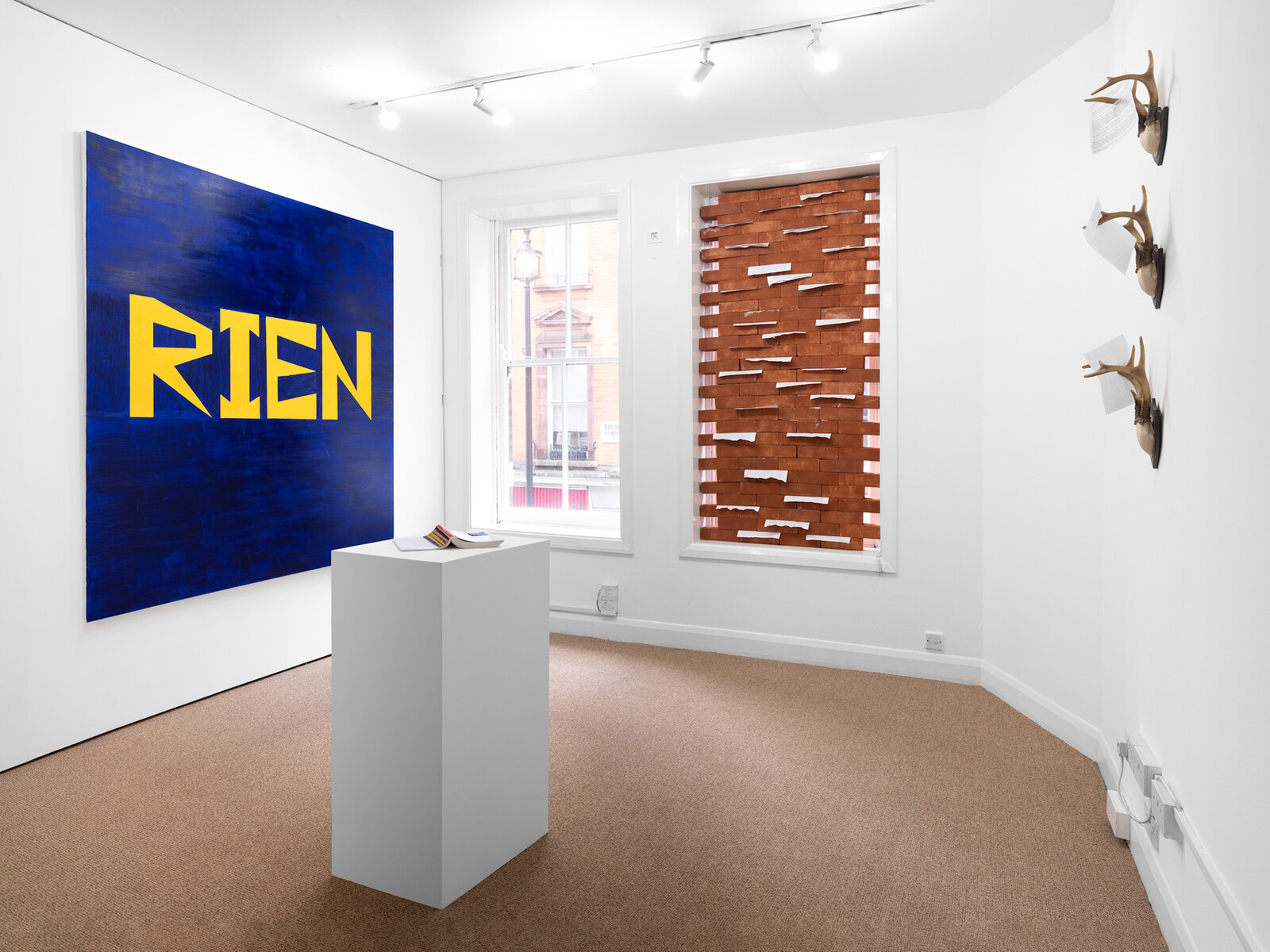
A 2001 paperback edition of The Black Jacobins (1938), C. L. R. James’s study of the dialectical relationship between the Haitian and French revolutions, rests on a plinth in Hannah Black’s exhibition “Ruin/Rien” at Arcadia Missa (Ruin II, all works 2020). Its cover features a detail of Anne-Louis Girodet-Trioson’s romanticist 1797 portrait of Jean-Baptiste Belley, a freed slave who attained the rank of captain during the rebellion and was the first Black deputy elected to the French National Convention. The artist has placed a post-it note on the upper-right corner of the cover. Written on it, in yellow pastel against a blue background, is the word “RUIN.”
By revealing that the Haitian rebellion—which overthrew French colonial rule in one of the most consequential slave uprisings in history—was central to the upheavals in Paris, James argues that the question of slavery underwrites modern definitions of liberty. “Ruin/Rien” features a heterogeneous suite of new sculptures and videos that draw connections between these revolutionary events and the idea of the autonomous artwork. The bricked-up window of Bastille, for example, references both minimalist sculpture and the Bastille cell in which the Marquis de Sade was imprisoned and where he wrote The 120 Days …
July 15, 2020 – Review
Marc Camille Chaimowicz’s “Paintings…”
Cora Gilroy-Ware

As clichéd as it seems today, the association of pink and blue with girls and boys is a relatively recent notion. In both style and color, infants’ clothing was largely gender-neutral as recently as the early twentieth century, and it was not until the 1980s that the pink/blue code was fixed to the gender binary. Almost two centuries earlier, Johann Wolfgang von Goethe projected multiple tints and shades onto girls and women: the “female sex in youth,” he writes in Zur Farbenlehre [Theory of Colors] (1810), “is attached to rose-color and sea-green, in age to violet and dark green.”
The alignment of color with gender now seems antiquated. Yet as I walk into “Paintings…,” the latest installation by Paris-born, London-based artist Marc Camille Chaimowicz, I cannot help but notice precisely the feminine palette Goethe described. Rose, sea-green, and violet, with passages of darker green to offset the paler shades, proliferate throughout Cabinet’s exhibition space. The environment offers a subtle, spatial engagement not with feminist discourse, girlhood, or womanhood, but with femininity itself: the material residue of tastes, styles, and their attendant hues that modernity has projected onto people labeled female. Much second-wave feminist literature aims to liberate the female body …
March 10, 2020 – Review
Stan Douglas’s “Doppelgänger”
Kevin Brazil
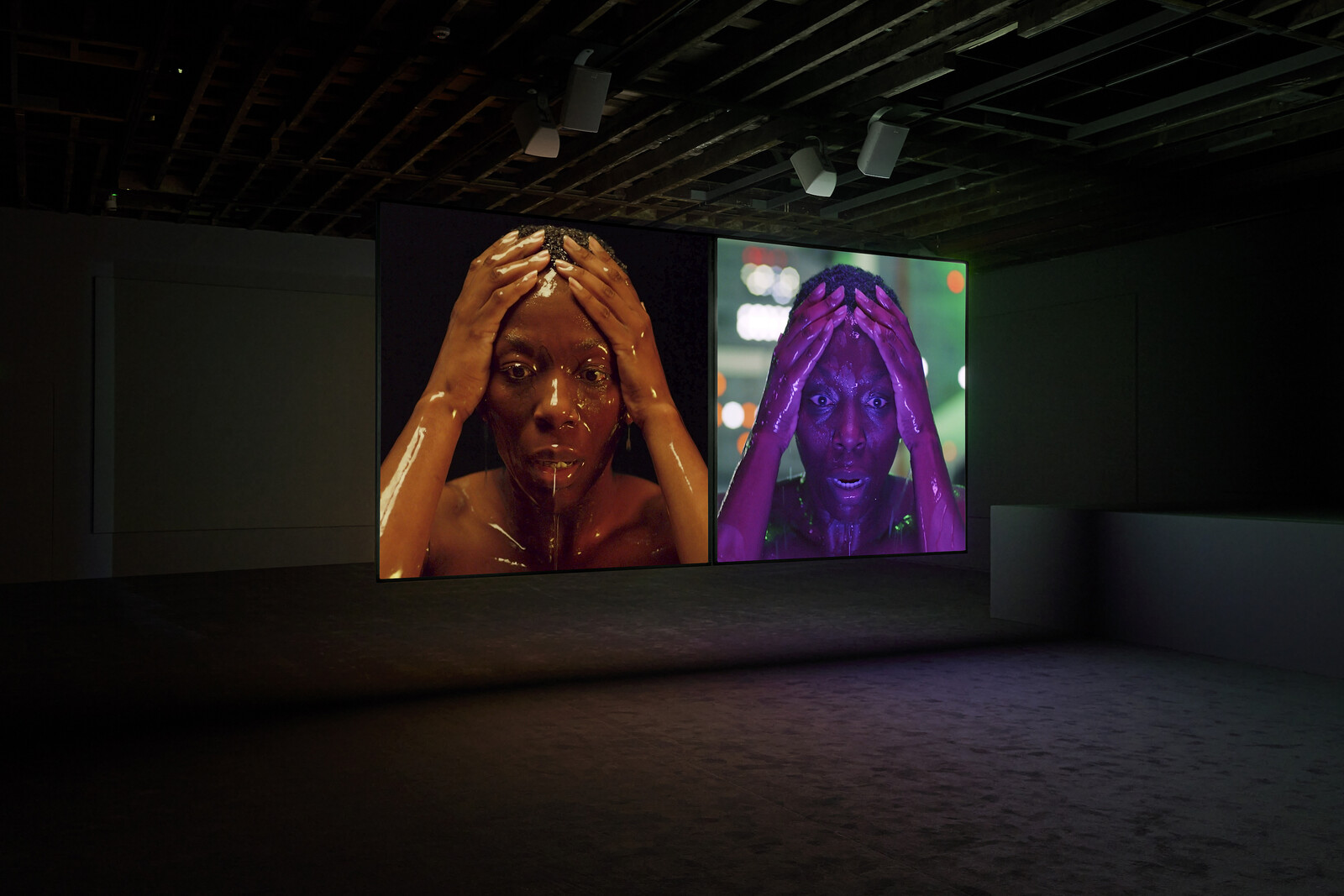
A thread linking Stan Douglas’s work across various media—installation, film, television—is the creation of what he has called “speculative histories.” Take “Scenes from the Blackout” (2017), a series of large photographs on display downstairs at Victoria Miro’s north London outpost. One photograph (Skyline) shows a blacked-out Manhattan skyline; another (Jewels) a hand stealing diamonds. Elaborately staged, lit with spotlights, and shot from high angles as if by a movie camera, this alternative history of a New York power cut is produced by manipulating the formal artifice of photography as a medium.
This same impulse has produced the main work in the show, the film installation Doppelgänger, which premiered at the Venice Biennale in 2019 and which is projected onto two square screens hanging side by side from the upstairs gallery’s ceiling (in another of its many doublings, it was also exhibited concurrently at David Zwirner, New York until February 22). Doppelgänger is set in an alternative recent past with futuristic yet analogue technology, where typewritten messages are transmitted in metal boxes. One screen tells the story of an astronaut called Alice (call her Alice-1) who is simultaneously cloned and teleported to a spaceship in another galaxy. Her race is …
March 4, 2020 – Review
“Contagio”
Lorena Muñoz-Alonso
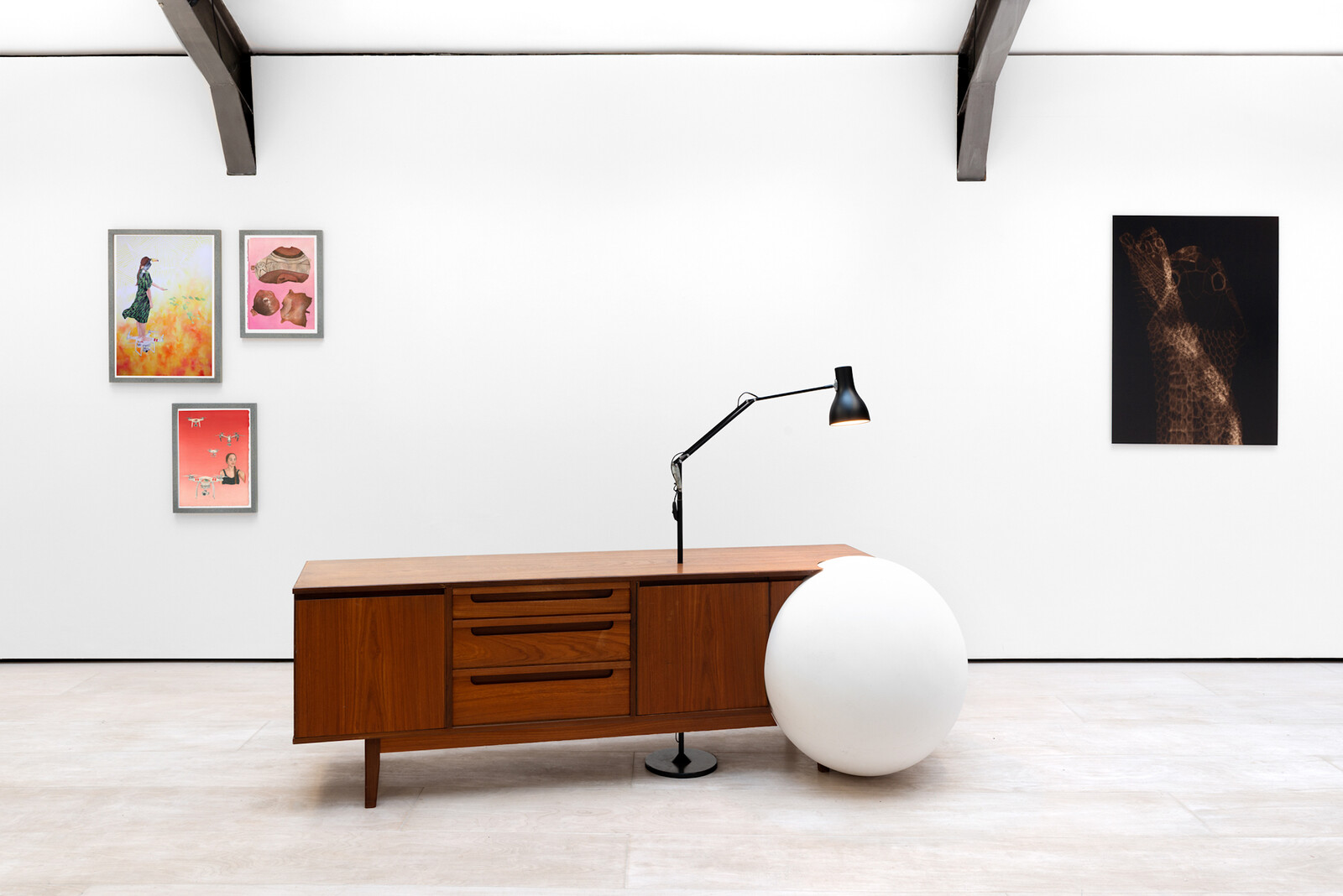
The logic of contagion rests on an “us vs them” binary—healthy/sick, in/out, loved/feared—and this exhibition of nine mostly UK-based Latin American artists has the feeling of a diverse group banding together for support. Instigated and curated by the Venezuelan painter Jaime Gili, it foregrounds the importance of collegiality and self-organization in an increasingly hostile environment.
The show tackles pressing political questions with a looseness and lightness of touch characterized by subtle metaphors rather than on-the-nose statements (the exception is a billboard-sized map at the entrance to the gallery, which shows the proliferation of legal and illegal mines across the Amazon basin). In Martín Cordiano’s Host (2020), a tall reading lamp pierces through a mid-century sideboard, on one corner of which a massive sphere of plaster bulges like a tumor. The result is witty, oddly beautiful, and violent. The exhibition text identifies Jacques Derrida’s writing on hospitality as an influence on Cordiano, who seems here to be giving form to the anxieties generated by the a guest’s fragile relationship to their host: a figure who ostensibly extends care while constantly policing the boundaries of the offer of hospitality.
Resting on a nearby plinth is an oversized bronze cast of a …
January 29, 2020 – Review
Bruce Conner’s “BREAKAWAY”
Jeremy Millar
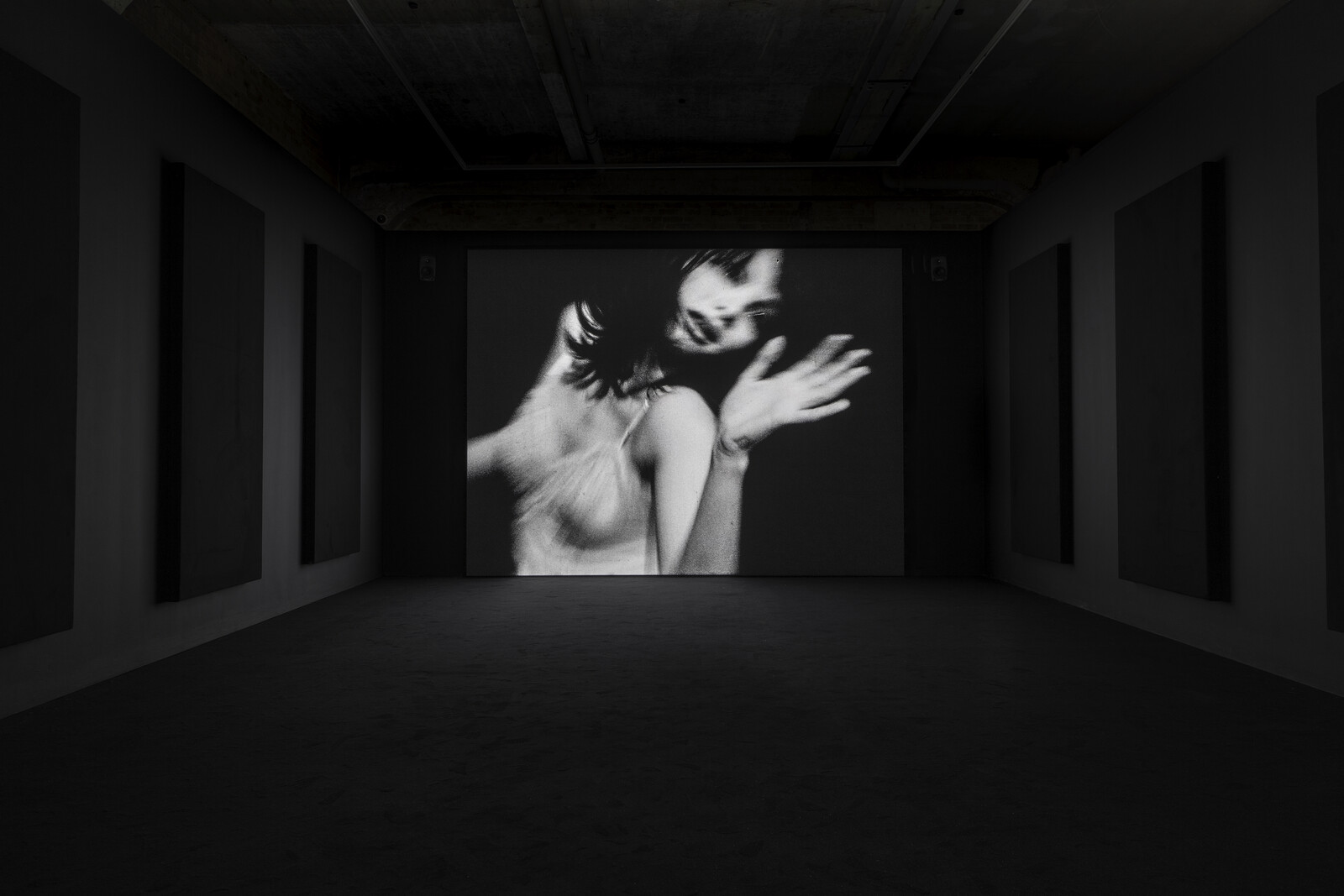
The work of the American artist Bruce Conner—dime-store assemblagist, quick-splice cineaste—is too little seen in the UK, and so we should be grateful to Thomas Dane Gallery for their recent periodic exhibitions of his work, each focused on a single film. Following CROSSROADS (1976) in 2015 and A MOVIE (1958) in 2017 comes BREAKAWAY (1966): three films from three different decades. Their achronological presentation seems appropriate, given Conner’s fascination with the temporal shifts which film afforded him.
While BREAKAWAY shares some of the concerns of these other films—such as the destructive impulses of desire and the emptiness that lies at the center of things—it is in many respects the simplest of the three. It is also the only one made from footage Conner shot himself, rather than material found from other sources. The location was a collector’s house in Santa Monica. Conner’s friends, the actors Dean Stockwell and Dennis Hopper, held the lights, and the subject was Antonia Christina Basilotta, a young singer and choreographer whom Conner had met through Stockwell and artist Wallace Berman. The five-minute film opens with a flickering image of Basilotta posing against a black background, dressed only in a black bra and black tights …
January 7, 2020 – Review
Valie Export’s “The 1980 Venice Biennale Works”
Orit Gat
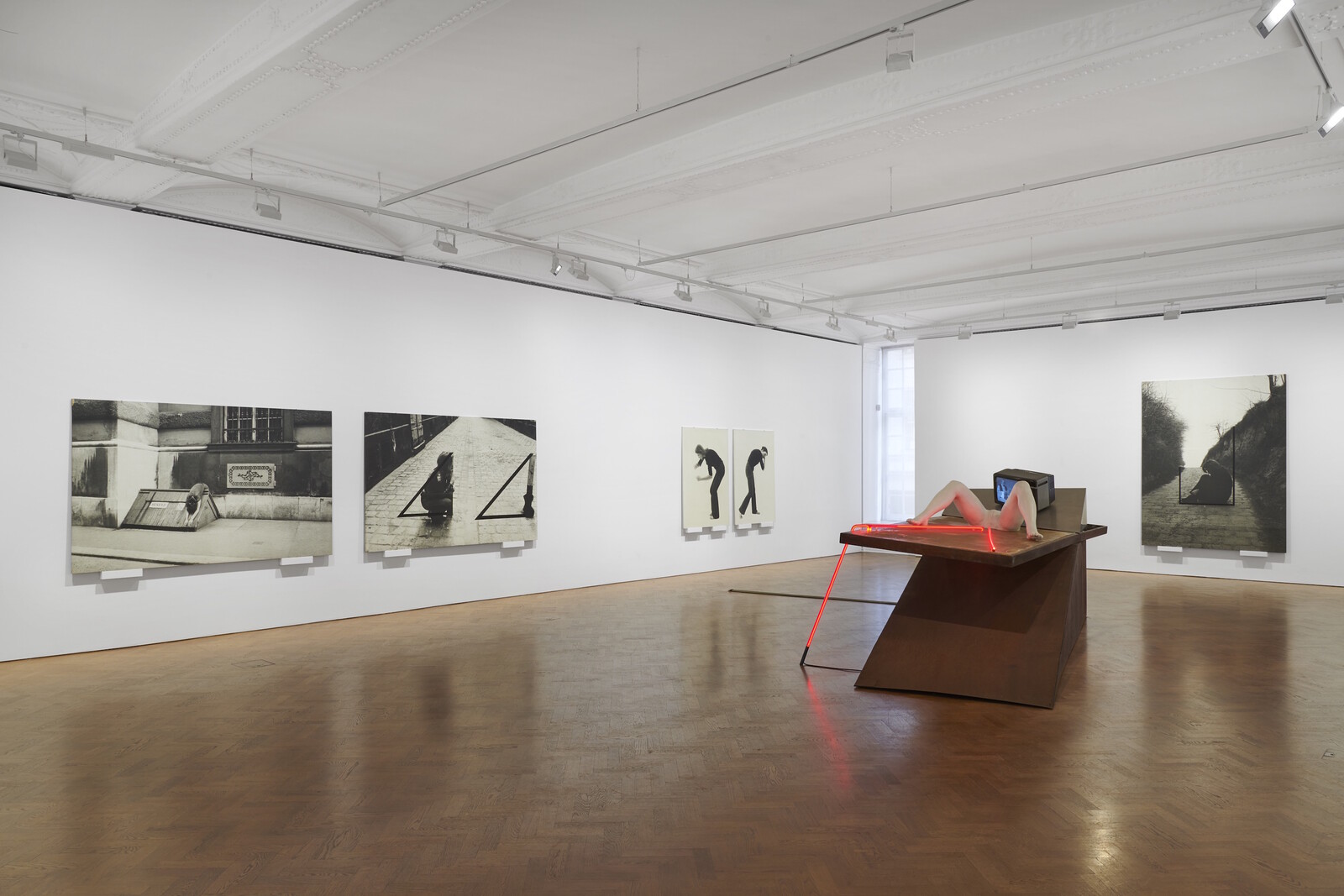
The two acts for which VALIE EXPORT is most famous are naming herself off a pack of cigarettes and a performance that involved wearing a pair of trousers with the crotch cut out, exposing her vulva. The Austrian artist, so associated with this bold punk aesthetic, represented her nation at the Venice Biennale in 1980, a rare occasion of recognition for a woman artist at the height of her career rather than its tail end, coming at the peak of her most prolific decade. Collecting these pieces together again, almost 40 years after they were shown at the Austrian Pavilion, makes clear how over time, the shock element of EXPORT’s art has faded, yet what remains is an always-pertinent critique.
EXPORT’s work is a reflection on the place women are afforded—that is, must fight for—in the communities in which they live. On view is “Body Configurations” (1972–76), a series of black-and-white photographs that show EXPORT adjusting her body to the city—lying with her back arched to match a curve in the pavement in ABRUNDUNG I [Rounding I] or sitting against the corner of a building, her hands stretched to touch its two sides in VERFÜGUNG I [Available I] (both works …
November 27, 2019 – Review
Ignacio Acosta’s “Tales from the Crust”
Tom Jeffreys
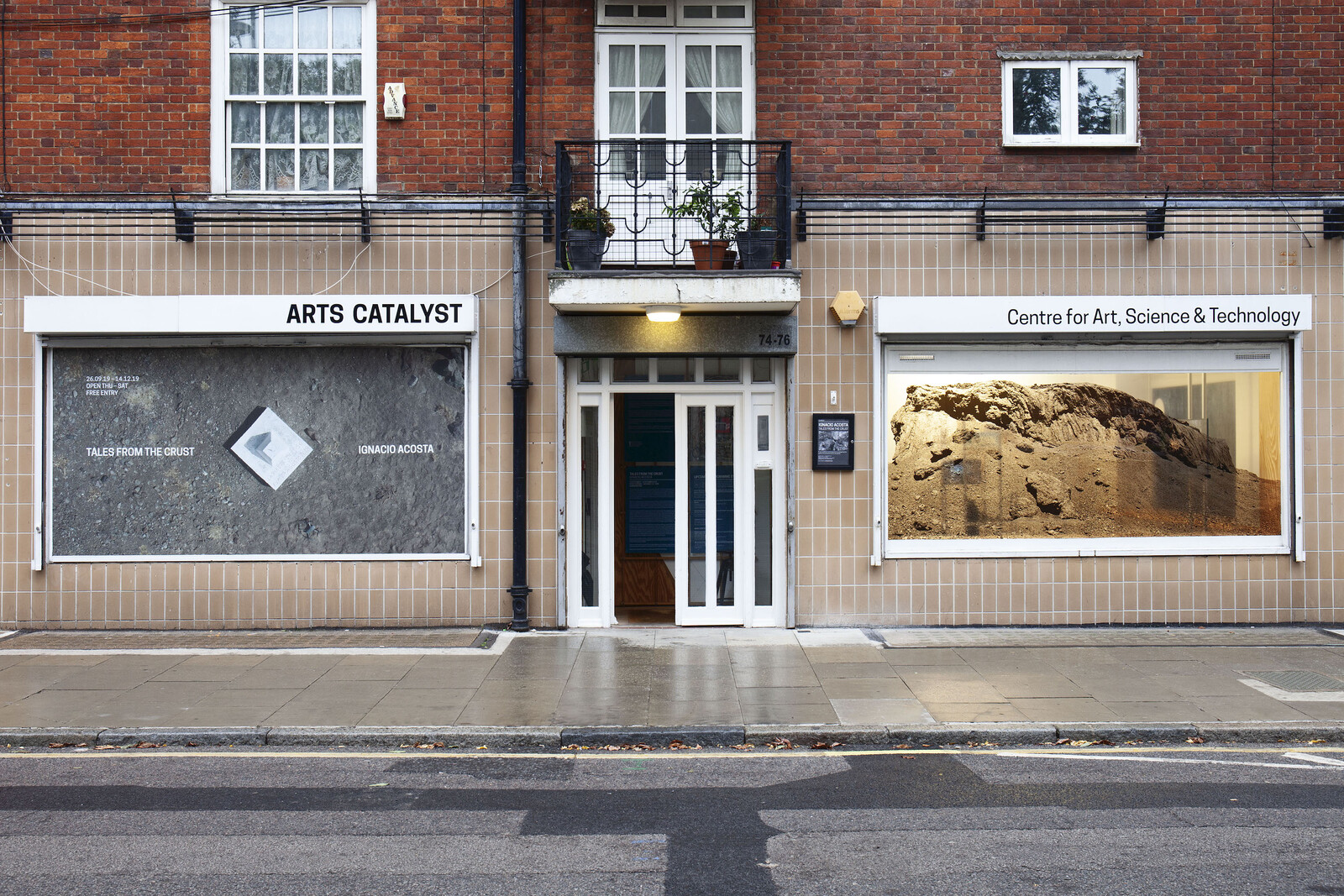
What do the gray-white, snow-laden forests of Scandinavia have in common with the dry red sands of the Atacama Desert in Chile? Both, in the words of Silvia Federici, are “sacrifice zones” of capitalism: places that contain riches extracted by multinational mining corporations with little care to the destruction they cause—to water, soil, air; to human and nonhuman communities.
Ignacio Acosta’s “Tales from the Crust” connects these places in a solo exhibition divided quite neatly into three parts. Covering the gallery’s street-level windows and visible to passers-by are three large-scale photographs of landscapes that have been radically altered by mining: a looming slag heap, a drone shot of a distance marker, and a eucalyptus forest planted to absorb contaminated water. To the right as you enter the gallery is a room of archival materials, filmed interviews, documents, photographs, and rock samples, presented on and around a freestanding metal structure. Here, Acosta not only makes visible his own research process but also acknowledges that struggles against multinational companies are diverse, collective, and ongoing: there are many tales from the crust.
One focus in this room is the corporate group Antofagasta PLC in Chile: a video interview with researcher Patricio Bustamante reveals the …
November 12, 2019 – Review
Danh Vo’s “untitled” and “Cathedral Block, Prayer Stage, Gun Stock”
Harry Thorne
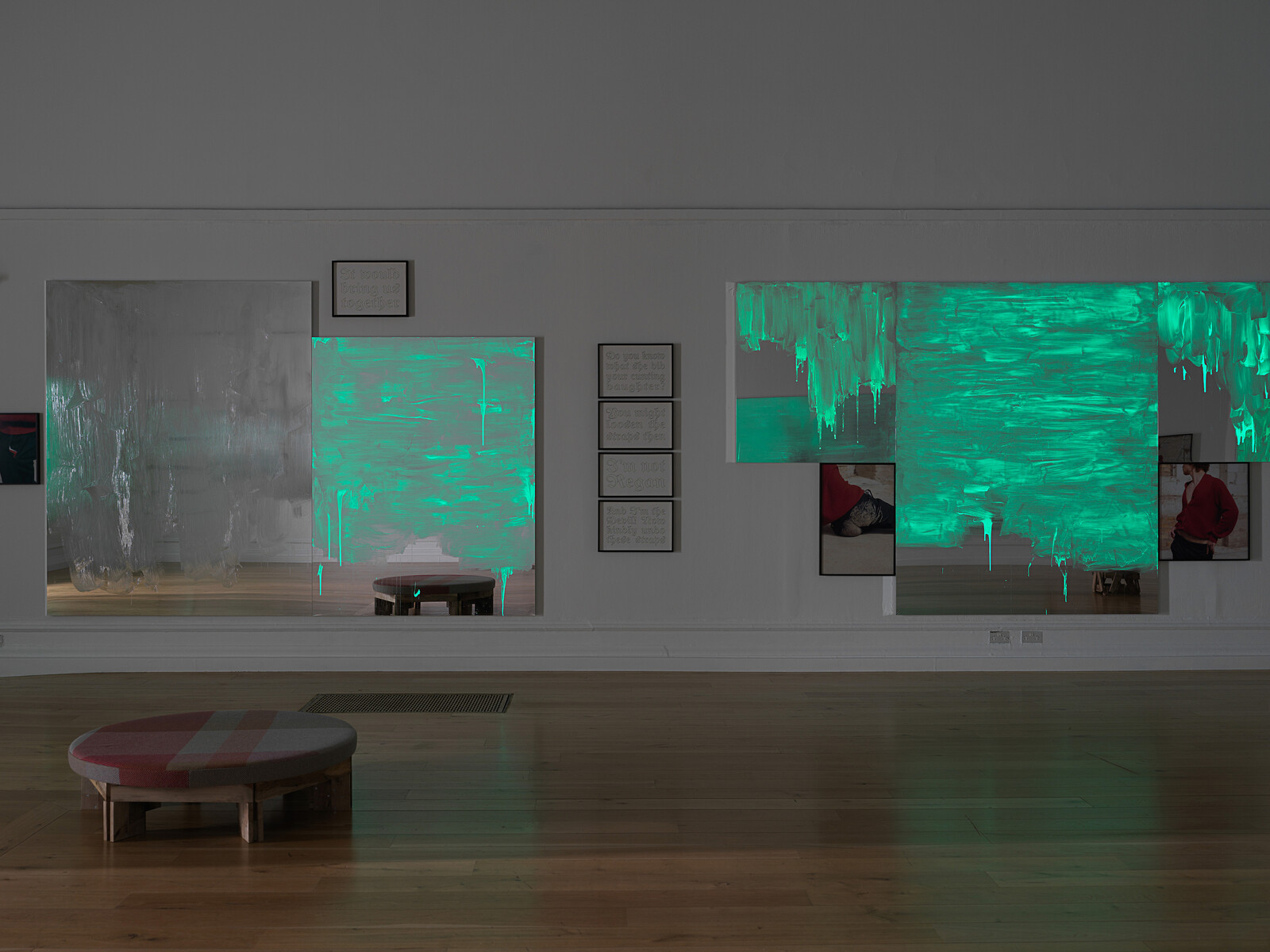
We create our own artworks. Regardless of their maker or mark, we push ourselves through the objects and images that deign to confront us and, as such, shape ourselves and our newfound companions into something other than we were before. It could be said that when we interact with art objects, we actively collaborate with another, with one another, which is a pleasant way of narrativizing our lowly passage through life: we work alongside the many things of the world so as to generate meaning.
This notion of incorporeal co-existence would suggest that the self is an entity less fixed and singular than it is multivalent, multiplicitous, more. The memory of Édouard Glissant floats, preaching the oft-quoted pledge “not to be a single being”; Antonio Gramsci, cited prominently in Edward Said’s Orientalism (1978), writes of “‘knowing thyself’ as a product of the historical process to date, which has deposited in you an infinity of traces.” Self as infinity. Infinity as self.
Vietnam-born Danish artist Danh Vo speaks in similar tones: “I don’t really believe in my own story, not as a singular thing anyway. […] I see myself, like any other person, as a container.” But are we containers or conduits? Do …
October 17, 2019 – Review
Moyra Davey’s “i confess”
Brian Dillon
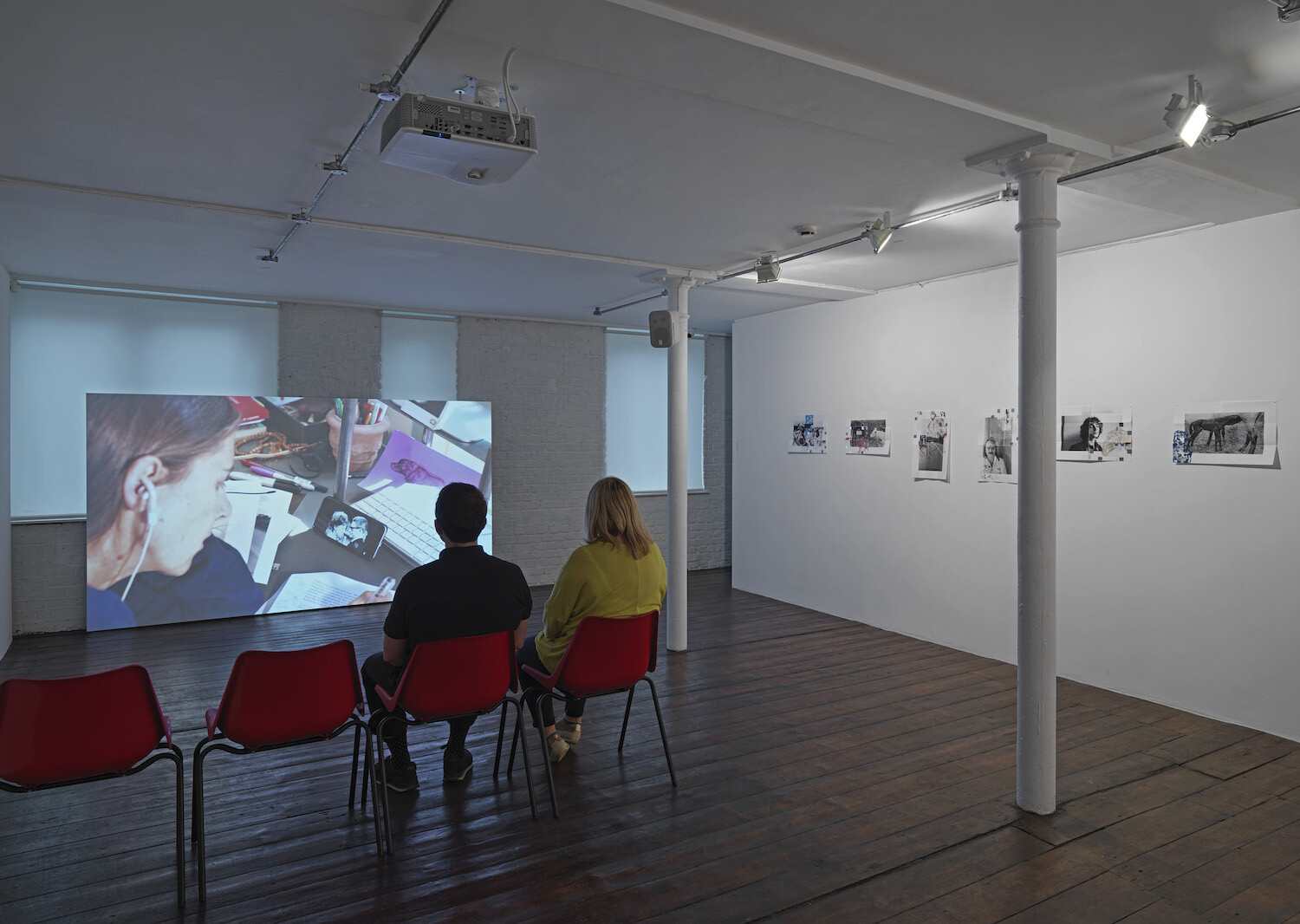
Each time Moyra Davey speaks in her new film i confess (2019)—spinning a narrative that’s at once autobiographical, political, essayistic—she’s preceded briefly by a faint ghost-voice, anticipatory echo. It’s the sound of the artist’s own voice, prerecorded and playing off her iPhone as in-ear prompt, while she paces her New York studio, repeating the script aloud. Davey has used this subtly deranging method before, in films such as Les Goddesses (2011) and Hemlock Forest (2016). It gives her a halting, spacey presence on screen, as though she’s merely the conduit for personal memory, cultural-political reflections and a shelf’s-worth of citation. In the past, Davey’s films have invoked Anne Sexton, Mary Wollstonecraft, Chantal Akerman, and Derek Jarman. When we first see and hear her in i confess, which is shown alongside a series of photo-etchings, she’s thinking about James Baldwin—a famous 1965 debate with William F. Buckley Jr. plays on YouTube in the background—and about the vexed history of French-Canadian identity.
Davey was born in Toronto in 1958, and grew up in Montreal, where she felt ashamed to be an anglophone outsider, and at the same time terrified of the strictures of Québec Catholicism. Early in i confess she tells us …
September 11, 2019 – Review
Mike Nelson’s “The Asset Strippers”
Jeremy Millar

The relationship of sculpture to industry and its processes is a long one, and heroic—think of all those bronze figures emerging from armory foundries, of Marcel Duchamp and Constantin Brancusi wandering jealously through the 1912 Paris Aviation Show, of Richard Serra rolling steel at a Baltimore shipyard—but seldom is it elegiac. Such a description would however be fitting for The Asset Strippers (2019), an extraordinary installation of sculptures by Mike Nelson. The work has been assembled from machinery and industrial materials and fixtures bought from auctions disposing of the assets of UK factories, although Nelson does not simply turn the expanse of Tate Britain’s Duveen Galleries into a storehouse, but rather places them in new configurations. Despite the technical difficulties of moving these massive objects—their total weight is estimated to be approximately 40–50 tons, close to the loading capacity of the gallery floor—Nelson’s touch is assuredly light. Often little more is done than stacking objects on top of each other—a cement mixer is placed high upon two wooden work benches, its drum upturned as if yearning to peer even higher—but the effect is transformative. One begins to see them not only for what they once were, but for what else …
July 23, 2019 – Review
“Food: Bigger than the Plate”
Chris Fite-Wassilak
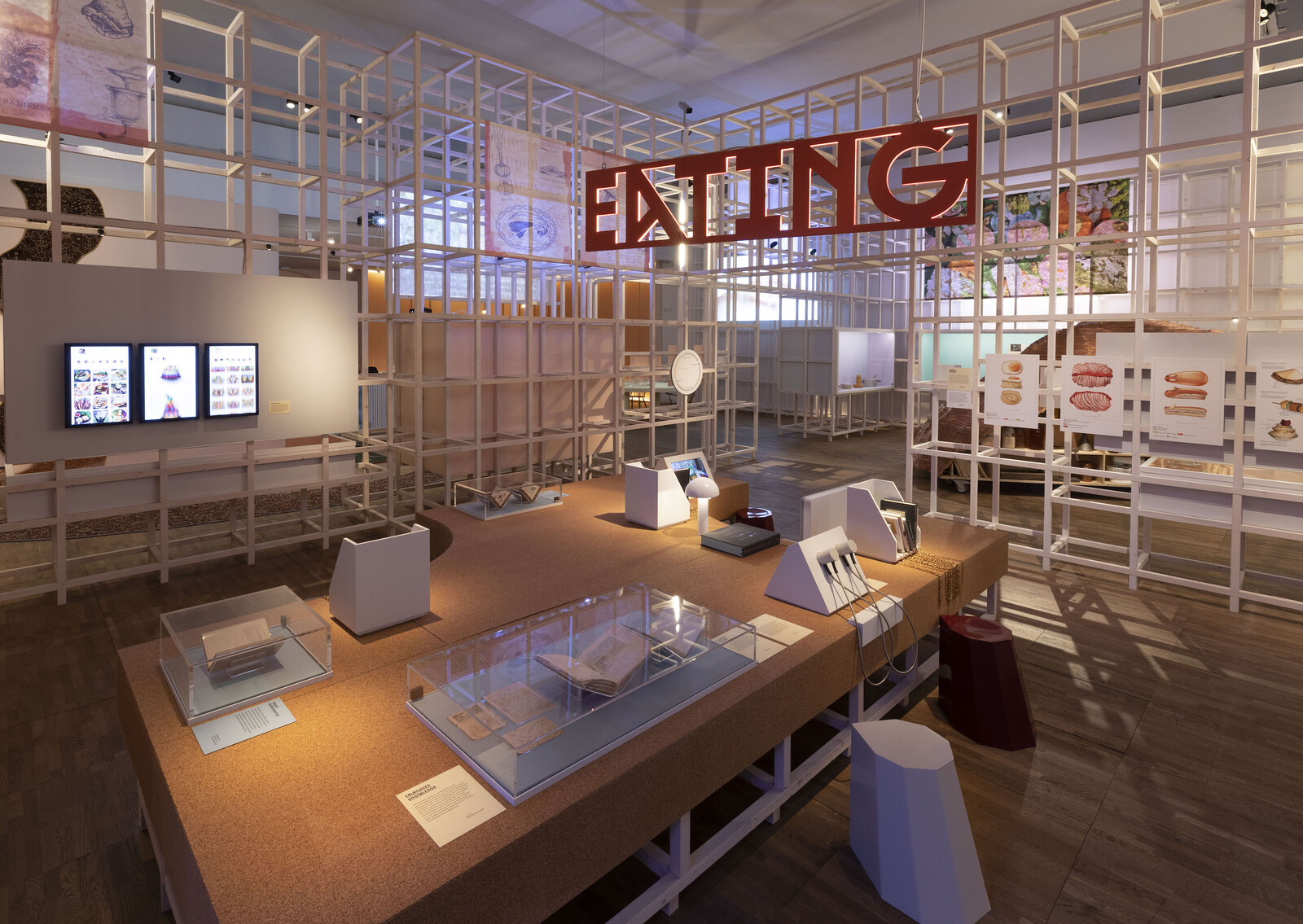
Welcome to a review of the latest blockbuster exhibition at the world’s largest museum of decorative and applied arts, focusing on the simple matter of food. As a precise, expansive look into the future of food, the exhibition includes a smorgasbord of over 70 artists, designers, and producers. I’ll be giving you a tasting menu.
To start, the appetizer is an assortment of the types of descriptions and phrases we use to talk about food, seasoned heavily with useless generalizations and limp truisms: we all eat; food connects us; food is more than just food; and so on. Such language dots the exhibition, presented on a bed of colorful, hyper-designed alcoves and panels, as we are led on a sumptuous journey through sections titled “Composting,” “Farming,” “Trading,” and “Eating.”
Our main courses are presented as a series of altars, spot-lit objects placed on pedestals, most often accompanied by a video of the people who made what sits in front of us, and some context as to why they made it. The first course is a pair of plastic toilets sitting side by side. We are apparently not intended to use them, but instead appreciate the plastic bag that lines the bowl. Loowatt’s …
July 10, 2019 – Review
“The Enigma of the Hour: 100 Years of Psychoanalytic Thought”
Lorena Muñoz-Alonso

Psychoanalytical theory might have fallen out of favor in the visual arts, but the fields still share a number of core concerns. Both create conditions in which the unconscious can materialize through processes of language, translation, metaphor, and interpretation. With these common terrains as a starting point, Dana Birksted-Breen, editor-in-chief of the International Journal of Psychoanalysis (IJP), commemorates the journal’s centenary in an exhibition at London’s Freud Museum which comprises two overlapping threads. One maps the origins of the publication in a thoroughly researched cabinet display containing letters, photographs, paintings, and archaeological artifacts, including Egyptian sphinxes and Etruscan mirrors from Sigmund Freud’s collection. The research pays close attention to the role that women—most notably Joan Riviere, Marjorie Brierley, Anna Freud, and Alix Strachey—played in the development of the IJP. The materials also evidence a fascinating link to the Bloomsbury Group via two of its one-time editors: James Starchey, who with wife Alix translated Freud into English, and and his successor Adrian Stephen, Virginia Woolf and Vanessa Bell’s younger brother. Both psychoanalysts are present via letters and issues of the journal and by two stunning portraits painted by Duncan Grant.
The exhibition’s second thread is curated by Simon Moretti and Goshka …
April 10, 2019 – Review
Sophia Al-Maria’s “BCE”
Philomena Epps

Sophia Al-Maria’s exhibition at Whitechapel Gallery—in which two films are separated by a thick PVC industrial strip curtain, one screened in a room painted black, the other white, one rooted in the future, the other the past—is the culmination of her position as the gallery’s writer in residence. Over the last year, the artist organized a series of associated events (intended specifically for women and non-binary guests) that correspond with the rhapsodic narrative texts written for the Whitechapel website: “We Share the Same Tears,” “We Swing Out Over the Earth,” and “We Ride and Die With You.”
Al-Maria was inspired by Ursula K. Le Guin’s 1986 essay “The Carrier Bag Theory of Fiction,” which posed an alterative, non-linear, feminist form of storytelling realized through speculative fiction. In the essay, Le Guin writes that the first useful tool for humans is a carrier bag for food—“a leaf a gourd a shell a net a bag a sling a sack a bottle a pot a box a container”—rather than the “sticks and spears and swords” of masculine domination. For her, the carrier bag becomes a metaphor for the telling of multiple stories that resists the narrative of the “bashing, thrusting, raping, killing” …
March 27, 2019 – Review
Beatrice Gibson’s “Crone Music”
Jeremy Millar

In her 1988 essay “The Fisherman’s Daughter,” Ursula K. Le Guin reflects on how women writers have long supported one another: “there is a heroic aspect to the practice of art; it is lonely, risky, merciless work, and every artist needs some kind of moral support or sense of solidarity and validation.” In content and form—a loosely assembled collage in which the author is placed in a position of kinship with her readers and those writers who came before—the essay shares much with “Crone Music,” an exhibition by Beatrice Gibson of two new films which are complemented by a program of screenings, rehearsals, readings, and performances by many writers, artists, and musicians who Gibson collaborated with for her films.
While Gibson’s work has long been made in relation to the work of others, these have usually been major male figures—William Gaddis, for example, or Cornelius Cardew—in these new films, the references are to more marginalized figures, notably women, queer communities, and poets. The exhibition’s title is borrowed from the 1990 album by Pauline Oliveros. Deux Soeurs Qui Ne Sont Pas Soeurs [Two Sisters Who Are Not Sisters] (2019) takes its title from a film script written in 1929 by Gertrude Stein, …
March 14, 2019 – Review
Linder’s “Ever Standing Apart From Everything”
Chris Fite-Wassilak
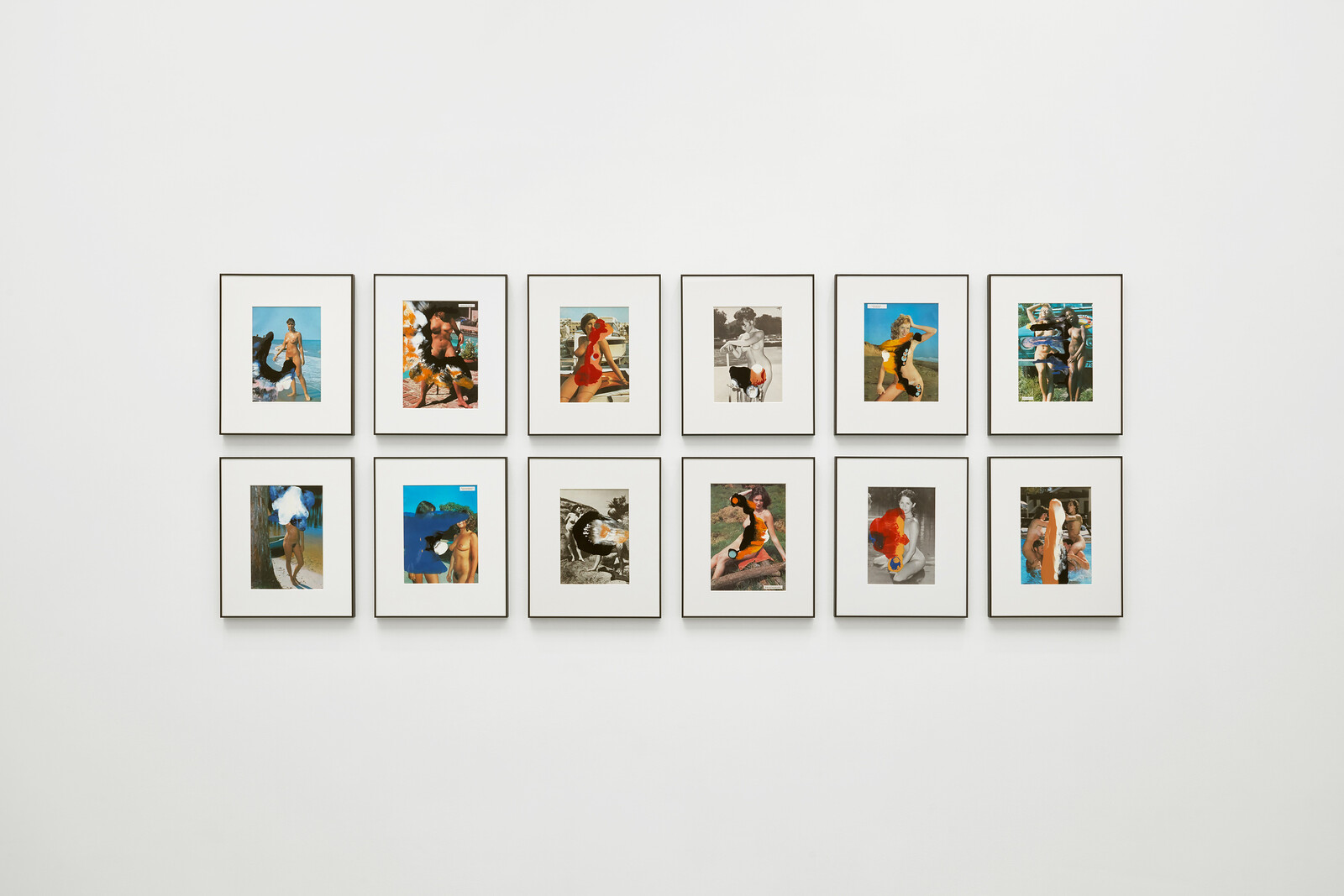
Let’s put it all up front: this exhibition is made up of 73 small collages, created between 2007 and 2019, each featuring one or two human bodies, accumulatively displaying 23 nipples (four of which have a more apparently male owner), four pudenda, and one (erect) penis. Some of these people lounge about in bygone versions of tastefully decorated interiors, looking confidently into the middle distance; a few in a state of semi-undress contort into various suggestive poses, giving the camera a dead-eyed stare; most of them, though, are preoccupied with the furniture and silverware being shoved into various orifices. In The Model 5 (2015), one woman looks on while another has a set of black enamel drawers angled between her legs, while in Magnitudes of Performance III (2012), a man looks ready to introduce an old hi-fi amplifier to his supine male partner. Most of the imagery for these collages seems to come, to start with, from porn magazines, and the rest from home décor catalogues. The excerpts from the latter—sofas, vases, and one well-placed tiger-striped lounge chair—act like a form of comedy censorship, blocking out the revelations and penetrations of the former to give the new images a more …
March 7, 2019 – Review
“We are the people. Who are you?”
Izabella Scott
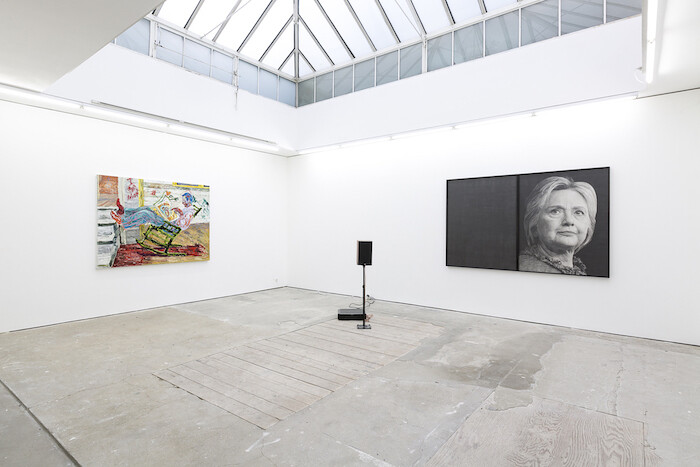
Farley Aguilar’s cartoonish Bat Boy (2018) is hanging in the first room of “We are the people. Who are you?” at Edel Assanti, an unsettling group show featuring 11 artists that examines mass-media and the rise of populism. As the painting’s title suggests, it depicts Bat Boy, a fiendish mutant with huge eyes and sharp teeth popularized in the early 1990s by the American tabloid Weekly World News. Here, this devilish man with pointed ears is depicted reading the Weekly World News on his porch. He casts a blood-red shadow; the headline reads, “KILL BAT BOY.” Morphing subject and reader, Aguilar points to the danger of becoming the very media one consumes.
Bringing together artists from different political climates such as Ukraine, Nicaragua, and Turkey across drawing, sound, video, sculpture, and installation, “We are the people” embraces scope rather than focus. The curatorial breadth allows for illuminating juxtapositions to emerge between pairs or clusters of artworks. On the wall near Bat Boy is Jamal Cyrus’s triptych Kennedy King Kennedy (2015): laser-cut reproductions of front pages from the Chicago Daily Defender announcing the assassinations of John F. Kennedy, Martin Luther King, and Robert F. Kennedy.
This juxtaposition is echoed in the present political …
January 25, 2019 – Review
Amie Siegel’s “Backstory”
Filipa Ramos
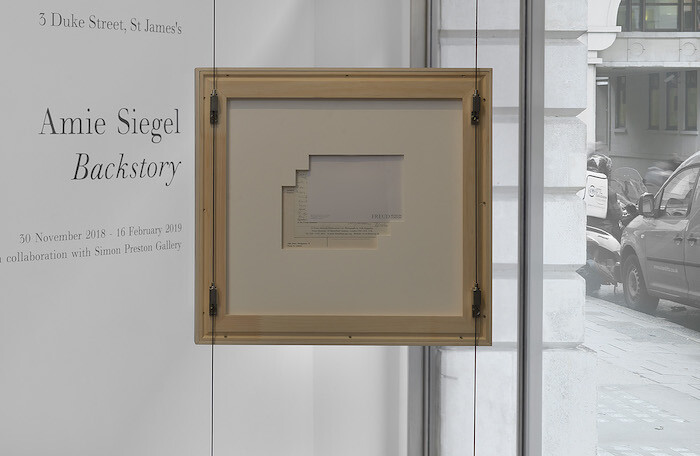
Continuously reappearing throughout the French version of Jean-Luc Godard’s 1963 film Le Mépris [Contempt], Georges Delerue’s melody Thème de Camille is the epitome of contained tragedy. Composed for a string orchestra, it has a regular, continuous motif traversed by arpeggios in counterpoint. This combination creates an immensely pleasurable (and sad) tune that flows back and forth, like the player’s hand bowing across the cello’s strings; like the calm Mediterranean summer sea waves that surround the Casa Malaparte in Capri, in which the central moments of Le Mépris take place; and like Amie Siegel’s elegant and sharp exhibition “Backstory,” whose interplay of absences and presences pay tribute to a fundamental knot of twentieth-century Western film culture.
“Backstory” honors its title. Through a set of paper works, “Body Scripts” (2015), and two video installations (Genealogies, 2016, and The Noon Complex, 2016), the exhibition gravitates around Godard’s stunning depiction of the collapse of a marriage between a submissive screenwriter (Michel Piccoli) and his loveless wife (Brigitte Bardot). Remaining close to Siegel’s ongoing inquiry into how value is achieved and generated and her interest in the meta-reflexivity of cultural production, the show brings forward a set of literary, cinematic, and pop-culture references that contextualize and …
December 19, 2018 – Review
Pierre Huyghe’s “UUmwelt”
Flora Katz
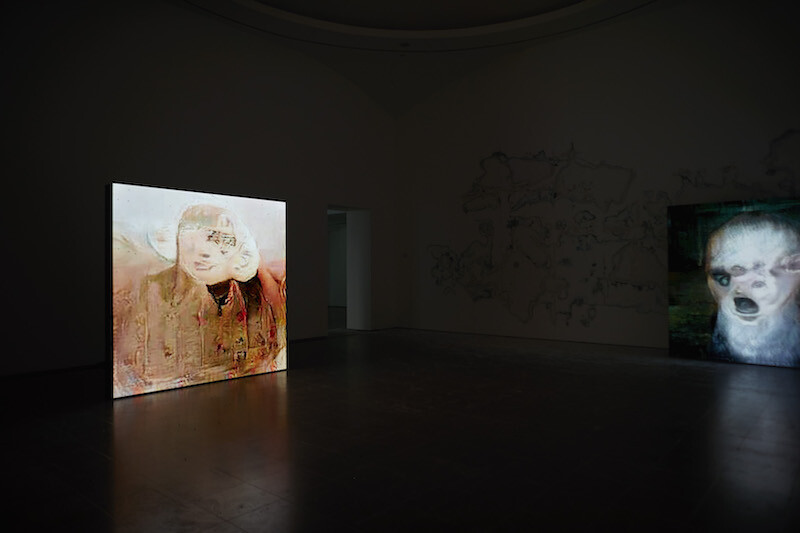
Five large, freestanding LED panels fill the spaces of the Serpentine. Despite their technological nature, they look like temporary plaster walls and give the rooms a stripped appearance. Images scroll onscreen at high speed. In the darkened exhibition space, they have peculiar light and colors, cold and clear tones. Sounds can be heard, but like the shapes on the panels, I don’t know what they relate to: A microphone? A bird? Nothing corresponds to anything entirely; the sounds oscillate between machine, human, and animal. The same is true of the strange scent diffused in the air. Dust clings to viewers’ shoes. It will spread to the gardens, the streets, the tube. It comes from a large mural on the wall of the main room, a version of timekeeper (1999). Timekeeper is an archeology of the place, a mural that looks like the impression of the rings on a tree trunk, made by sanding down the wall of the exhibition space, each layer of exposed paint forming a different color circle. Here, the same sanding process is at play but it forms sinuous lines, like a map of an unknown territory. Flies roam overhead. They were born in the gallery’s ceiling, …
November 28, 2018 – Review
Lawrence Abu Hamdan’s “Earwitness Theatre”
Jeremy Millar
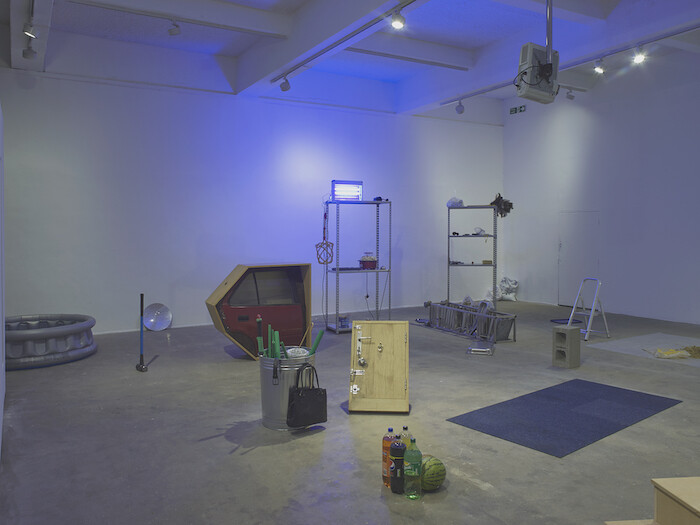
Lawrence Abu Hamdan’s latest project emerged from his involvement with an extensive—and emotionally harrowing—2016 investigation by Forensic Architecture into Saydnaya Prison in Syria, commissioned by Amnesty International. (The investigation was presented in Forensic Architecture’s exhibition at London’s Institute of Contemporary Arts earlier this year, for which they were nominated for the Turner Prize.) Given the lack of images of Saydnaya, and that prisoners were often kept in darkness or blindfolded, the investigation made use of the inmates’ memories of sounds heard within the prison, sensory experiences made all the more acute given the silence that was brutally enforced. Although the work became one of Amnesty’s biggest campaigns of recent years, and arguably helped to shift perception of the Syrian regime in the West, much of the testimony gathered was of little use in court, although it was not without meaning; such might broadly be considered the status of art, and it was within the space of art that Abu Hamdan found somewhere for that which was previously inadmissible.
As with Abu Hamdan’s earlier video Rubber Coated Steel (2016), in which the artist analyzed audio recordings of a 2014 protest in the occupied West Bank to ascertain whether live rounds or rubber …
September 28, 2018 – Review
Mika Rottenberg
Lorena Muñoz-Alonso
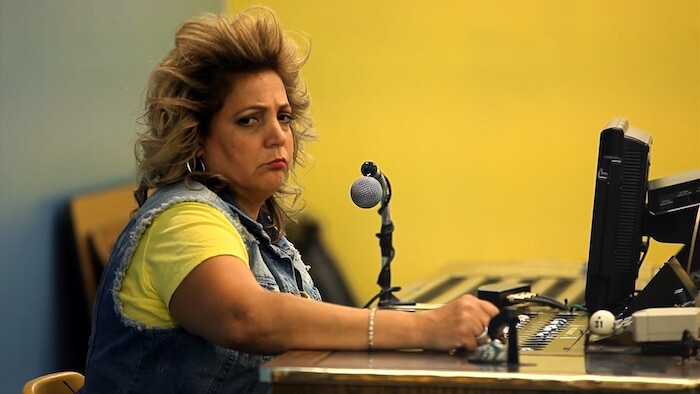
Shucking oysters, turning wheels and levers, sitting in a rammed plastic warehouse while staring at a mobile phone—to enter Mika Rottenberg’s universe is to fall down a rabbit hole of stoic drudgery. The worlds the artist conjures in her video installations are populated by extraordinary characters, such as the fantasy wrestlers who pulverize red fingernails into maraschino cherries in the artist’s MFA degree show piece Mary’s Cherries (2004), or the women who produce cultured pearls by turning cranks to power fans which inflate cartoonish noses in NoNoseKnows (2015). They are all committed to odd tasks with resigned zeal, as if there was no escape to their abstruse internal logic. Rottenberg’s works offer piercing critiques of the absurd conditions of labor under neoliberalism: the precariousness of the gig economy has turned millions into impoverished workaholics, and while AI and automation are threatening countless jobs across the globe, presenteeism still reigns supreme in most cubicles and departments. The aroma of lives wasted on futile endeavors might dominate here, but instead of opting for kitchen sink tragedy, Rottenberg plunges into Technicolor farce: grotesque reflections on unhinged times.
Goldsmiths’s new Center for Contemporary Art (CCA), run by curator Sarah McCrory, is opening its doors with …
July 3, 2018 – Review
Joan Jonas
Philomena Epps
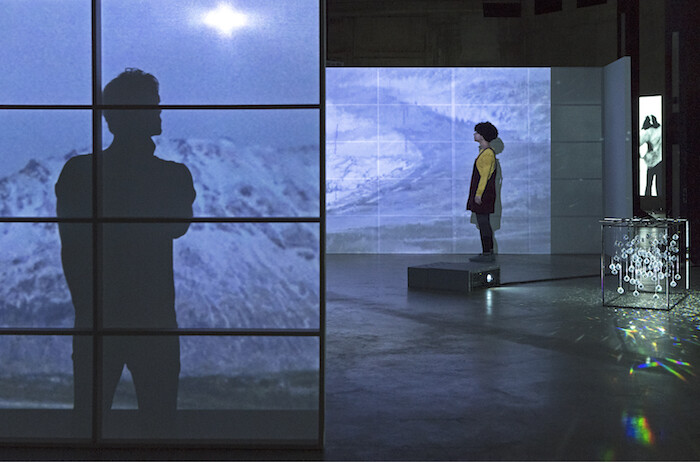
When I was a child, I received a disco ball as a birthday gift. Hung haphazardly above my bed and lit by a repurposed old desk lamp, it reflected a scintillating constellation across the ceiling. In a flick of a switch, the quotidian transformed: I had entered a secret world. A kind of Proustian magic occurs when an artwork triggers not only an involuntary memory but an ineffable bodily feeling. Walking into Joan Jonas’s installations—Reanimation (2010/2012/2013) and Wind (1968)—in the East Tanks of Tate Modern did precisely that. The cavernous space had become an enigmatic new universe: the rough walls animated by shimmering video projections, with crystal spheres refracting flickering light, and the howling noise of gale-force wind intertwining with strange percussive sounds.
Jonas’s oeuvre eludes genre. Throughout her career, she has blended technology—video screens, re-recorded backdrops, overheard projectors—into historical systems of communication, engaging with traditions of shadow puppetry, mythology, ritualistic music, and Noh theatre. Her work travels from factory lofts to wasteland docks, across landscapes and seascapes, deserts, cities, and hilltops. Jonas’s show at Tate Modern eschews a chronological retrospective in favor of a nonlinear survey paired with live performance and cinema programs. In alignment with Aby Warburg’s logic of …
June 13, 2018 – Review
Abigail Reynolds’s “The Universal Now and further episodes”
Tom Jeffreys
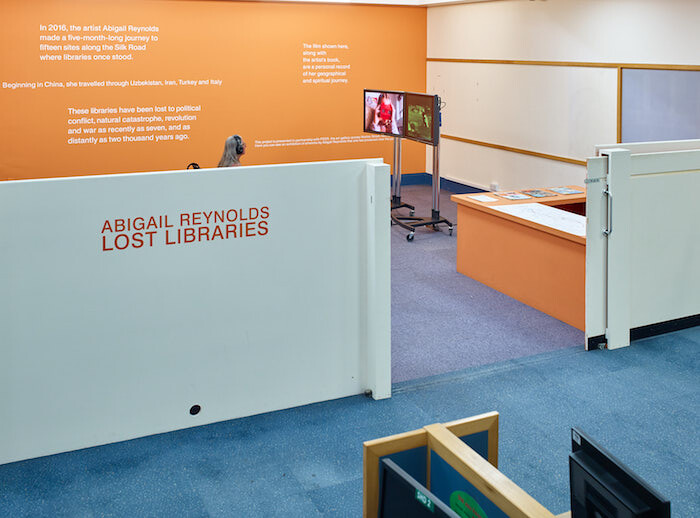
“Many artists consider books and libraries to be oppressive hierarchies of knowledge, dogmatic and hectoring,” writes artist Abigail Reynolds in her new book Lost Libraries. But Reynolds does not agree: “I consider them the gates of freedom.” Three simultaneous exhibitions in east London exemplify this fascination with books and their material relationship to time and knowledge: a display of artist books at bookartbookshop, an artists’ bookshop; a retrospective including collaged book pages at PEER gallery; and a new film work, Lost Libraries (2018), showing on two television screens among the books and computers of Shoreditch Library.
Both book and film versions of Lost Libraries are the result of a journey undertaken by Reynolds between 2016 and 2017. Given financial and logistical support as the third recipient of the BMW Art Journey, a project by BMW and Art Basel that commissions artists to visit foreign locations and create new work, Reynolds travelled by plane and motorbike along the Silk Road from Xi’an, China, to Rome, Italy, visiting the sites of 15 libraries lost or destroyed over the past 2000 years. In Nishapur, Iran, she went to an empty field where a library once stood. In a museum in Xi’an, the characters of …
June 1, 2018 – Review
Ed Atkins’s “Olde Food”
Patrick Langley
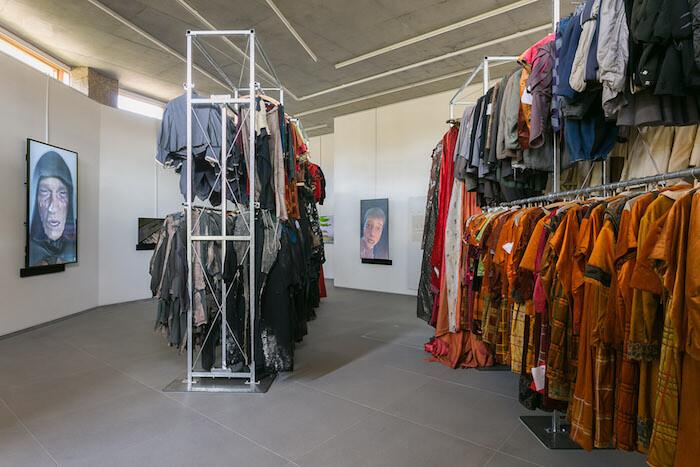
A boy in a bruise-pink jacket jogs through a dusky idyll, limp-kneed and panting for breath. The grass that flanks the path is dappled with blooming flowers: purple, yellow, orange, and white. In the foreground is an upright piano, incongruously plonked between two trees. The boy staggers past it and out of sight. Seconds later, he’s back where he started. He falters past the piano, vanishes, and rematerializes in an endless, purgatorial circuit. He looks exhausted. Watching this digital animation, I begin to feel exhausted too. Is he being punished, condemned to enact a pitiless ritual? If so, for what purpose?
Across from Good Wine (the animations all date from 2017, the year they were shown at Berlin’s Martin-Gropius-Bau), and past a pair of monumental steel clothes rails hung with a spectacular array of old opera costumes acquired from the archives of the Deutsche Oper Berlin (Masses 1 and 2, 2018), a salvaged door is mounted to the wall (Untitled, 2017). Its darkly varnished surface is laser-etched with a cryptic text: one of several such works (all untitled) co-written by Atkins and whoever’s behind the acerbic, anonymous blog Contemporary Art Writing Daily. Some offer arch commentaries on the exhibition (“Old food …
May 18, 2018 – Review
Yto Barrada’s "Agadir"
Mitch Speed
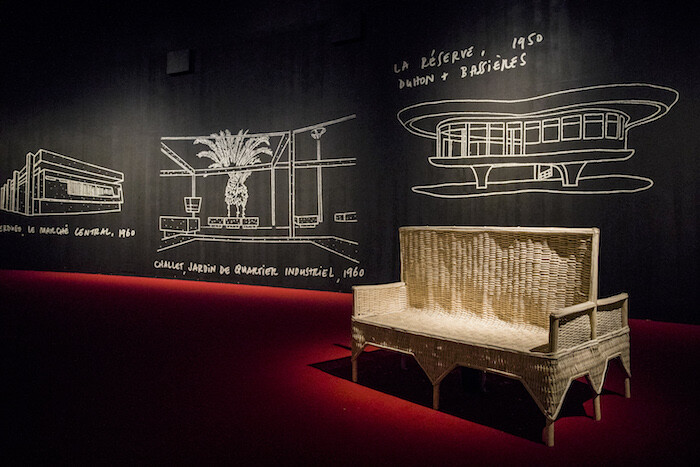
Just before midnight on February 29, 1960, an earthquake hit the Moroccan city of Agadir, killing between 12,000 and 15,000 people—roughly a third of the city’s population. As many were injured; at least 35,000 were left homeless. Yto Barrada’s “Agadir,” in The Curve gallery at London’s Barbican Centre, invokes the disaster in oblique and poetic ways across drawings, audio recordings, collage, and film. Despite the breadth of media employed, this is a show that lacks the depth of historical context one might expect from such a weighty subject, compelling viewers to keep reading, watching, and learning after they’ve left the exhibition, in order to fill in the gaps.
Entering the dim gallery was exciting. Its dark lighting and dramatic colors—the long curving wall painted black, the carpet beneath it blood red—recalled the set of a camp Italian horror film. (The cinematic influence is in keeping with the artist’s broader practice: in 2006, Barrada founded the Cinémathèque de Tanger, an independent project that, operating from Tangier’s Cinema Rif, is dedicated to the local and international promotion of independent Moroccan film.) On the Barbican’s curving wall are sixteen large drawings, “Untitled (Agadir)” (2018), executed by scratching broad white lines from the black paint. …
April 20, 2018 – Review
“Counter Investigations: Forensic Architecture”
Naomi Pearce
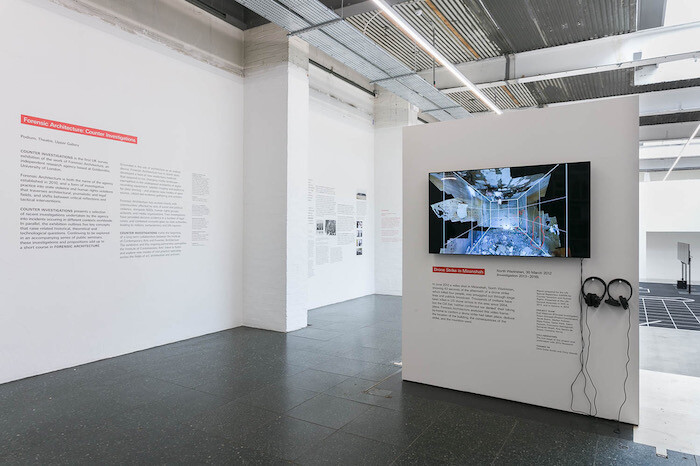
In his 2014 lecture “The Future of Forensic Science in Criminal Trials,” judge Thomas of Cwmgiedd, Lord Chief Justice of England and Wales, identified a communication problem. In light of the increasingly complex science used in court, he called for a set of judicial primers: standardized documents, written in “plain English,” to relay core scientific principles to lawyer, judge, and jury. Contrary to narratives propagated by popular crime dramas, he argued: “however eminent and reliable the expert, the presentation of forensic evidence is rarely black and white.”
The slippery, kaleidoscopic status of evidence feels like the point and not the problem in “Counter Investigations,” a survey of work by Forensic Architecture, a research collective of academics, investigative journalists, and creative practitioners including architects, programmers, and filmmakers. Slickly installed across the Institute of Contemporary Art’s two floors, a series of multi-disciplinary investigations into human rights abuses and armed conflict unfold across video installations, models, and wall graphics. Described by Forensic Architecture founder Eyal Weizman as “the archaeology of the very recent past,” the group use forensic methods to map and reconstruct sites, such as the Saydnaya Prison in Syria, or events, such as Israeli military operations in Rafah, Gaza, in August 2014.
The …
March 29, 2018 – Review
"Women Look at Women"
Lucy Reynolds
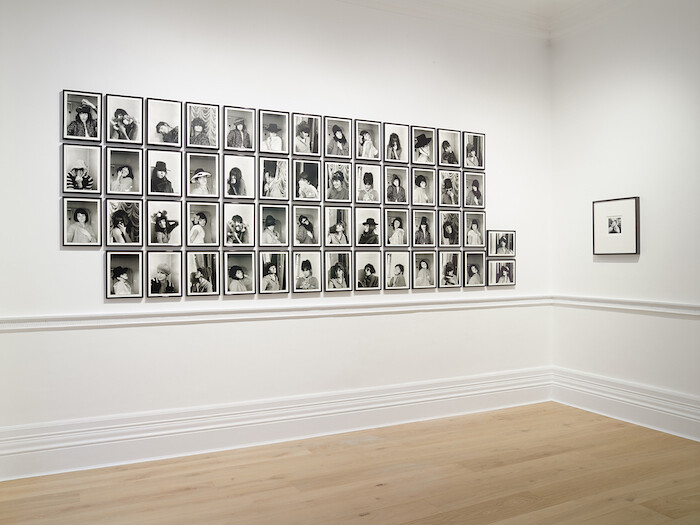
I almost walk past the entrance to “Women Look at Women,” the inaugural exhibition at Richard Saltoun’s new space on London’s New Bond Street, delayed and disorientated by the glossy rows of designer shops and galleries that surround it. Catherine—a friend on a break from the picket line where she, like many UK university lecturers, is fighting to keep her pension rights—is already there, taking succor from women’s images of themselves and each other. “I was just looking at this,” she says, pointing to Marie Yates’s photographic installation The Missing Woman (1982–84). Catherine’s gesture encompasses a wall of irregularly spaced photomontages: a mixture of grainy, hand-tinted images, polaroids, photocopies, and text rendered in Courier typeface and neat handwriting. One image—a color photograph of a telephone receiver and a telegram overlaying that of a roadside in blurred black and white—is accompanied by the line “Somewhere there is a point of certainty.” It holds out an unattainable promise of clarity in the game of decipherment and elusive autobiographical disclosure which Yates’s images put into play.
The Missing Woman speaks of a time—broadly stretching from the 1960s to the mid-1980s—when women’s images were troubled and interrogated by a newly confident feminist articulation, finding its …
March 21, 2018 – Review
Marvin Gaye Chetwynd’s "Ze & Per"
Philomena Epps
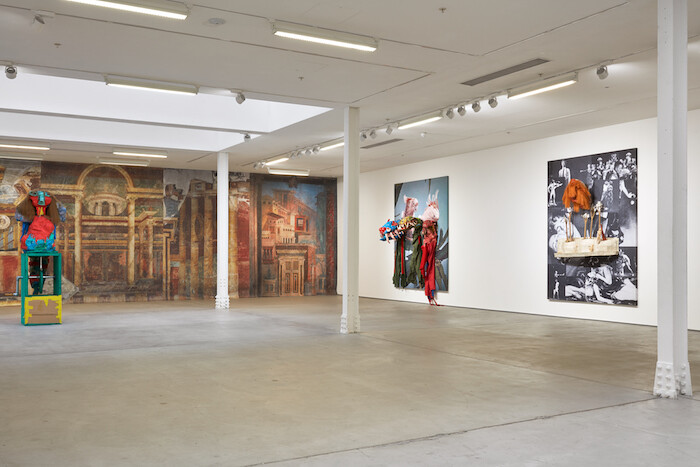
Marvin Gaye Chetwynd’s practice, with its hubbub of miscellaneous and licentious references, evokes a mood of historic and anthropological ambiguity. Her works enmesh periods of cultural rebellion over the centuries, from medieval history, folk plays, and pagan festivals, to the genesis of Dada, and from the DIY culture of drag balls and punk to alternative living, squatting, and co-ops. Chetwynd’s spontaneous intertwining of performance, installation, video, sculpture, and painting can also be figured within the space of play: an arena dedicated to experimentation and risk without a predetermined outcome. This gesture toward facilitating an impermanent escape from reality is best read through Mikhail Bakhtin’s theories of the carnivalesque: free interaction between people; eccentric or non-traditional behavior; sacrilegious events; and the nonsensical (mis)alliance of opposites. Absurdity, humor, and hyperbole are de rigueur. The world is upside down. The body is inside out.
Chetwynd’s topsy-turvy approach to performance is expressed in a quieter register in her solo show at Sadie Coles HQ. Ten colorful, collage-like pieces are hung on the gallery’s walls, while three illustrative paintings—one (Samurai Bat) depicts a bat’s head; another (Dulac’s Perman, both works 2018) shows a carp eating from a mermaid’s palm—lean against walls and columns in thick gold …
December 12, 2017 – Review
David Blandy’s “The End of the World”
Patrick Langley
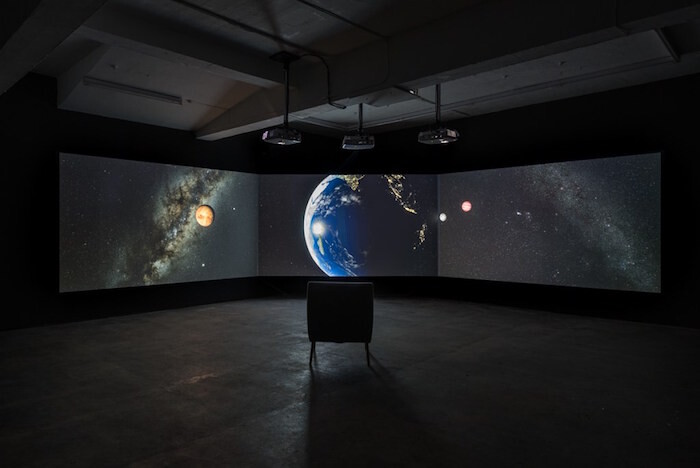
In his three-volume book Principles of Geology (1830-1833), Charles Lyell pioneered a theory whose clunky title belies its elegance. Uniformitarianism, as Lyell’s argument is known, suggests that the earth was shaped, over hundreds of millions of years, by incremental processes that are observable all around us: erosion, sedimentation, and so on. As Stephen Jay Gould remarks in his book Time’s Arrow, Time’s Cycle (1987): “the present must be our key to the past.” We can deduce how the earth was made because the forces that shaped it billions of years ago continue to do so today. Thanks in large part to Lyell’s work, geological accounts of the earth’s formation have supplanted Biblical ones. Scripture tells us that our planet was created 6,000 years ago. We now know that it is closer to 4.55 billion years old. The discovery of deep time—in John McPhee’s evocative phrase— compares with the Copernican and Darwinian revolutions in its importance to science. Deep time is also a vertiginous concept. Geological history mocks the brief careers of civilizations, dozens of which may rise and fall in the time it takes a coastline to crumble into the sea.
A dismal fact of life in the Anthropocene—the geological epoch …
October 26, 2017 – Review
“When my eyes saw and when my ears heard”
Patrick Langley
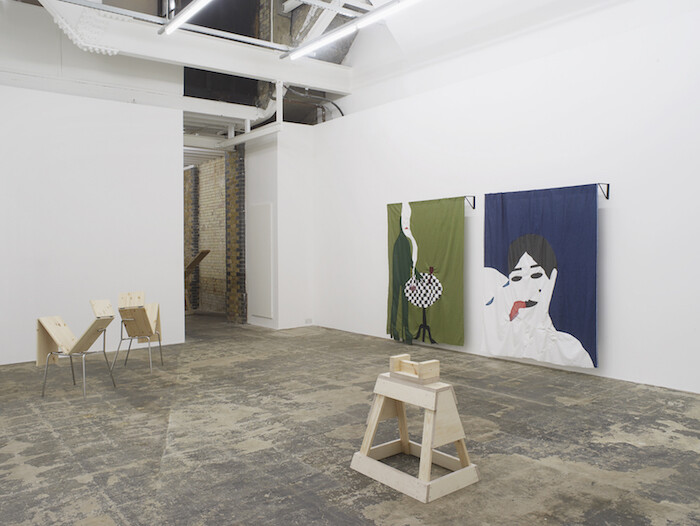
In her 1974 memoir Handbook in Motion, Simone Forti describes how, when she moved from San Francisco to New York in 1959, the city seemed a “maze of concrete mirrors.” New York didn’t just disorient: it “shocked” her. She took solace from the city’s alienating architecture by rooting herself in her body, paying close attention to the effects of gravity on her anatomy. “I tuned into my own weight and bulk as a kind of prayer,” she writes. Forti’s 1960s works, structured by game-like sets of rules, were highly influential for Yvonne Rainer, the Judson Dance Theater, and others. In the early pieces, performers interact with simple props, such as gym rope or plywood boxes. These “dance constructions”—Forti’s own usefully ambiguous term—blur the distinctions between choreography, performance, and minimalist sculpture. That Forti’s work resonates in 2017 speaks both of the lasting relevance of her themes—the friction between individual actions and collective rules, for example—and of the dynamism and flexibility of the works themselves, interpreted afresh with each performance.
Forti’s See Saw (1960) is an integral art-historical, thematic, and aesthetic reference point in “When my eyes saw and when my ears heard,” a group show at Hollybush Gardens that explores how bodies …
May 22, 2017 – Review
Edgardo Antonio Vigo’s “Un Arte A Realizar [An Art In Becoming]”
Gustavo Grandal Montero
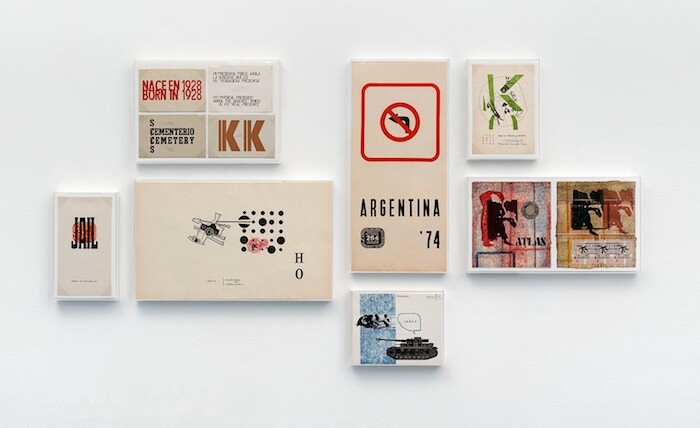
“Un Arte A Realizar [An Art In Becoming]” is the first solo exhibition in the UK dedicated to the Argentinian artist Edgardo Antonio Vigo, who died in 1997. Relatively unknown in Europe, his name has until recently been associated with mail art, that most underrated of avant-garde movements. The exhibition presents a small selection of around 30 works, mostly on paper, from the late 1950s to the ’90s, part of a much larger collection recently acquired by the gallery from the Sackner Archive of Concrete and Visual Poetry in Miami.
Vigo’s early work comprises concrete poetry, represented here by two 1958 prints (R and Composición mecánico-estética), and neo-dada objects, which he defined as useless and impossible machines. (Photographs documenting two of these are on display.) He edited the artists’ magazine Diagonal Cero, which featured visual and concrete poetry from Argentina and beyond, and in 1969 organized the international exhibition of concrete poetry “Expo Internacional Novísima Poesía/69” in Buenos Aires. Between 1971 and 1975 he published Hexágono ’71, a magazine that included contributions from a wide range of international artists. Although these publications are poorly represented in the exhibition—with just two issues of Diagonal Cero—they are central to Vigo’s practice, and their …
May 18, 2017 – Review
Christina Mackie’s “Drift Rust”
Patrick Langley
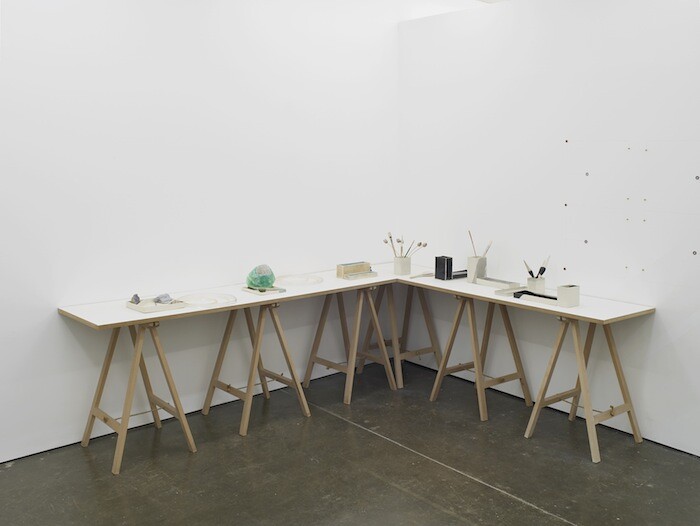
Christina Mackie’s installations have an instinctive and provisional feel about them. They present the viewer with arrays of disparate objects, arranged on trestle tables, walls, and shelves, assembled according to a spontaneous logic of correspondence and juxtaposition. Mackie refers to this aspect of her work as “trestle art.” Wolfgang Tillmans’ tables and vitrines (such as truth study centre, Tate, 2017), Camille Henrot’s The Pale Fox (2014), and Portia Munson’s Pink Project: Table (1994) are a few notable examples of the genre. Recalling the Surrealist tradition of assemblage and the more recent trend of “archive art,” in which artists collect and compile existing imagery and information, “trestle art” positions the artist as curator or analyst. Filtration and distillation take precedence over production. Objects, selected according to fixed and often idiosyncratic criteria, are brought into conversation with one another.
As Hal Foster has observed, “archival artists seek to make historical information, often lost or displaced, physically present.” One obvious difference between Mackie’s works and those of other “trestle” and “archive” artists is that she makes almost all of the objects herself. A notable example in “Drift Rust,” Mackie’s solo exhibition at London’s Herald Street (the show is described as an installation in the …
April 5, 2017 – Review
“Film Programme Selected by Beatrice Gibson”
Herb Shellenberger
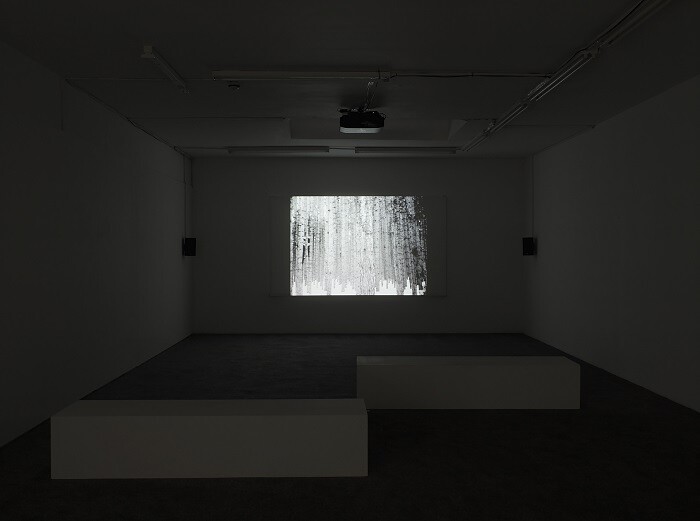
From the darkness, a bright, circular spotlight illuminates a theater curtain. Searching intermittently along its folds, the light traces paths which uncover crimson underneath deep black. The curtain finally pulls upward revealing a moon of bright white.
The opening images of Mary Helena Clark’s By foot-candle light (2011) present viewers with a prototypical symbol of cinema-going, a moment of anticipation not typically found in a venue like London’s Laura Bartlett Gallery, with its white walls and light-leaking windows. Clark’s video is shown in an exhibition consisting of a single daily projection of five moving image works selected by British artist-filmmaker Beatrice Gibson. Though not a curator, like many artists working with moving images, Gibson has occasionally been put into the role of selecting films to show alongside her works. Previous instances of this have comprised combinations of the work of artist peers (like Clark and Laida Lertxundi) and important influences (Tony Conrad and William Greaves). This exhibition, under the framework of research-in-progress for upcoming films, functions in much the same way, and displays an understated yet impressive curatorial cohesion while at the same time being beholden to the peculiarities of transposing a cinematic presentation to a commercial gallery.
“Go on, …
February 7, 2017 – Review
Martine Syms’s “The Easy Demands”
Morgan Quaintance
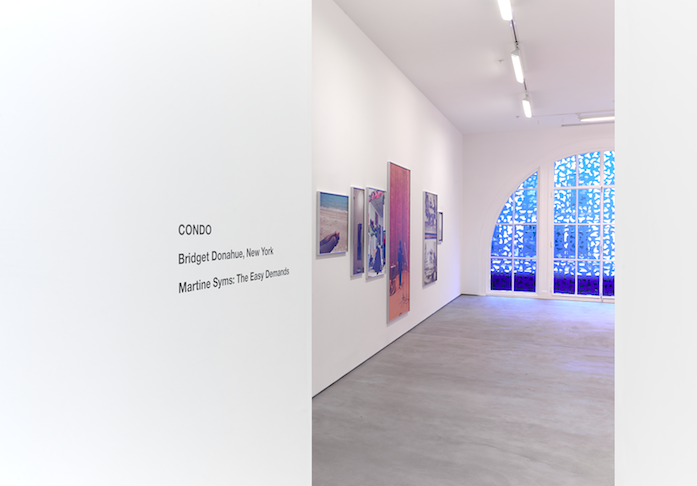
What’s to be gained from aestheticizing resistance, from reducing political protest and its violent and repressive fallout to a highly stylized image? This is the final question raised by Martine Syms’s second solo show in London, a tastefully oblique, risk-free display that simultaneously draws on and hollows out the recent history of African American-led demonstrations against police brutality and institutional racism.
Installed in a modest gallery accessible through the main expanse of Sadie Coles HQ, temporary host to New York’s Bridget Donahue during Condo, “The Easy Demands” brings together three works: a structural intervention, a single-channel video loop, and a collection of photographic prints. Although superficially unified by being presented in the same space, they remain conceptually and aesthetically disconnected; in fact, the exhibition operates on and fosters an attitude of detachment. It is a dynamic that surfaces in relation to the works on show, in the relationship between the artist and host institution, and in the spectatorial mode produced by the gallery’s oppressive air of exclusivity, which Syms frustratingly does not disrupt.
Belief Strategy XIII (2016) is a dappled color filter applied to the oval window covering one end of the gallery. To create it Syms has appropriated a tool from …
January 31, 2017 – Review
Mai-Thu Perret’s “Zone”
Jeremy Millar
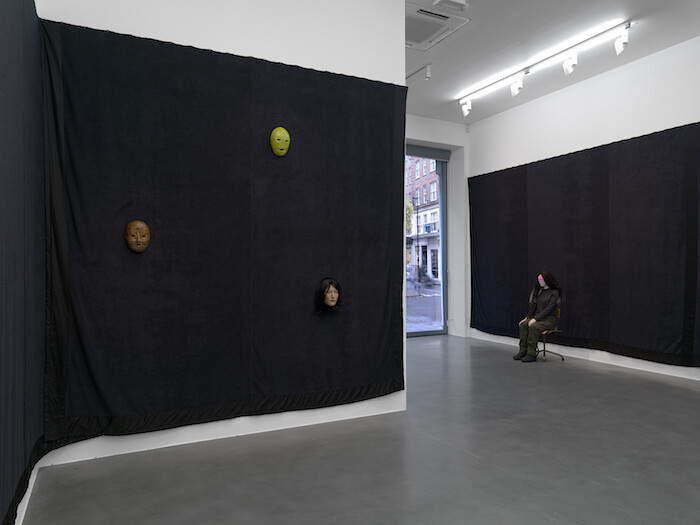
Sometimes an artwork responds to the world outside; sometimes the world outside responds to an artwork; and sometimes neither knows of the other, yet each is enhanced by it all the same. Such a moment occurred recently when one could march down Piccadilly, in protest with and in the presence of tens of thousands of women, and turn into a side street, past cars, jammed, Porsches, Bentleys, and Rolls, in each a man tapping agitated fingers upon a leather steering wheel, enter the glass door of a gallery and there find a mannequin, female, with long crimped hair and army fatigues, an assault rifle at rest by her side.
The work is by the Swiss artist Mai-Thu Perret, and takes its name—Les guérillères XII (all works 2016)—from the influential (one can scarcely say “seminal”) 1969 novel by Monique Wittig, which imagines a new society established and run by lesbian warriors. In the original French, they are described as “elles,” not “women” but a differently universal “they,” a simple inversion of the masculine collective pronoun “ils” one usually finds in French; Perret’s own narrative of a female commune, The Crystal Frontier, which she has been writing—and making artwork from—since the late 1990s, …
December 8, 2016 – Review
Huma Bhabha
Patrick Langley
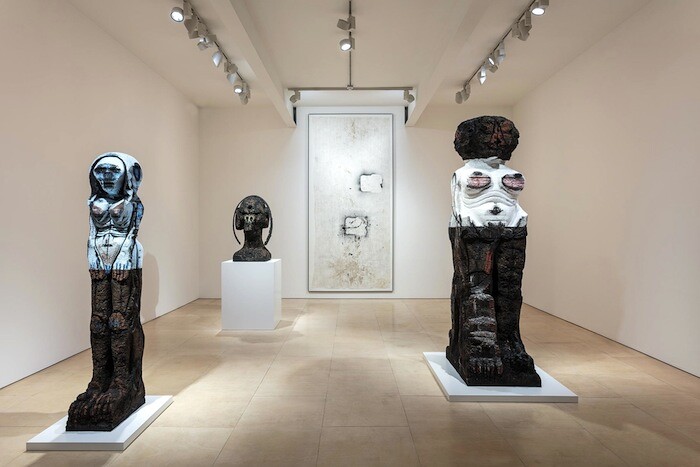
Huma Bhabha’s humanoid sculpture In the Shadow of the Sun (2016), displayed on a low white plinth in a brightly lit room in London’s Stephen Friedman Gallery, stares at the viewer with inscrutable, smudged black eyes. The figure is female. She wears a hood. Her torso, cut from Styrofoam embellished with spray paint and oil stick, is colored a metallic blue-grey. The jagged breasts and pincer-like labia suggest this might be a fearsome goddess, worshiped millennia ago by an ancient civilization. Seen another way, this otherworldly presence could be an alien representative of a troubling future—a civilization yet to come.
That such sharply opposed interpretations are possible demonstrates the breadth and ambition of Bhabha’s work. In her sculptures, drawings, and collages, she incorporates elements of Greek kouroi, African tribal masks, and the sculptures of the Gandhara culture of northern Pakistan, which she mashes together with references to modernist sculpture. The artist cites Robert Rauschenberg’s “combines” as a key influence, alongside the brittle figuration of Alberto Giacometti and Pablo Picasso’s assemblages, while more contemporary comparisons might be drawn to the rough-hewn figures of Georg Baselitz or Thomas Houseago’s iron rebar titans. That all these artists are male suggests that Bhabha is working …
November 9, 2016 – Review
“Frieze Film”; “Experimenta”; Philippe Parreno’s “Anywhen”
Herb Shellenberger
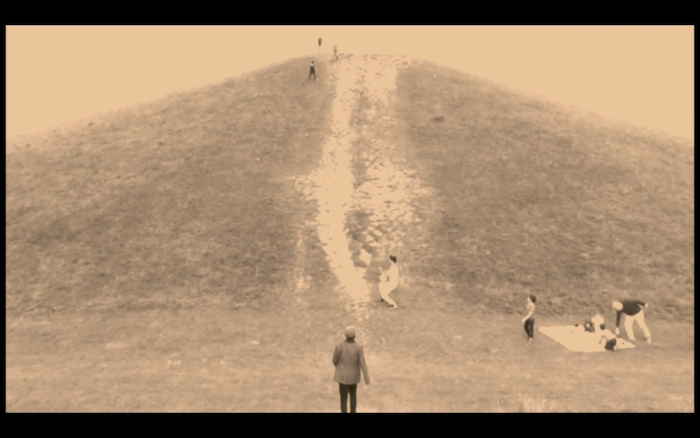
“A repetitive moment becomes eternity.” This fragment of speech, ringing through Tate Modern’s Turbine Hall in Philippe Parreno’s installation Anywhen (2016), might equally describe the frustration or elation of viewers’ experiences of moving image artworks. This season’s blockbuster exhibitions of film and video—Frieze Film (October 6–9, 2016), BFI London Film Festival’s Experimenta (October 6–16), and Parreno’s commission for Tate Modern (October 4–April 7, 2017)—showcased new works in these media through a variety of structures, some more effective than others.
When considered against the relative paucity of moving image works in the booths of Frieze Art Fair this year, the Frieze Film project—which commissioned work by Samson Kambalu, Rachel Maclean, Shana Moulton, and Ming Wong—seemed like an effort to redress the balance. The works were shown at scheduled times in the Frieze auditorium and also on national television as part of Channel 4’s Random Acts strand, which inserts three-minute shorts between programs. But to those already familiar with the oeuvres of the featured artists, this year’s commissions felt too brief; introductions to their style and ideas, rather than fully formed works.
When it is installed in an exhibition space, as at the 2015 Venice Biennale and now at London’s Whitechapel Gallery (23 August, …
July 20, 2016 – Review
Sam Lewitt and Lucy Raven’s “Wild Sync & Weak Locals”
Isobel Harbison
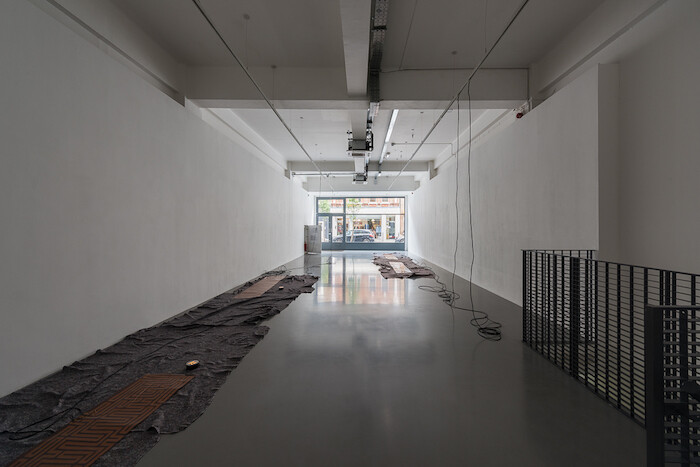
I walked straight past the entrance to Pilar Corrias’s gallery. The lights are off and inside it’s dark and quiet. The only work on the ground floor is Sam Lewitt’s A Weak Local Lexicon (MHTL) (2016), an unlit installation which converts the charge from the light source, powered from a distribution board in the wall, into heat emitted through four custom-made copper-plated panels lying on insulation blankets on the floor. Wires lead out from the mains in the wall to connect each panel, regulating the room’s moderately high temperature, altered slightly by my entrance. Little digital meters sit atop the panels, giving numeric readings of the oscillating flow. Their red blinking is the only visual noise of this otherwise ascetic piece.
The work began life among others in Lewitt’s solo exhibition “More Heat Than Light” at San Francisco’s CCA Wattis (2015) and Kunsthalle Basel (2016). Its copper patterning is custom designed to reflect the fretwork on the exterior of a Basel bank vault. This Ancient Greek motif, of a continuous line meandering towards infinity, symbolizes Lewitt’s long-term interest in technology’s deployment by capital, the process of circulation similar to that David Harvey describes in which “money is perpetually sent out in …
July 7, 2016 – Review
Michael Stevenson’s “Signs & Wonders”
Pedro Neves Marques
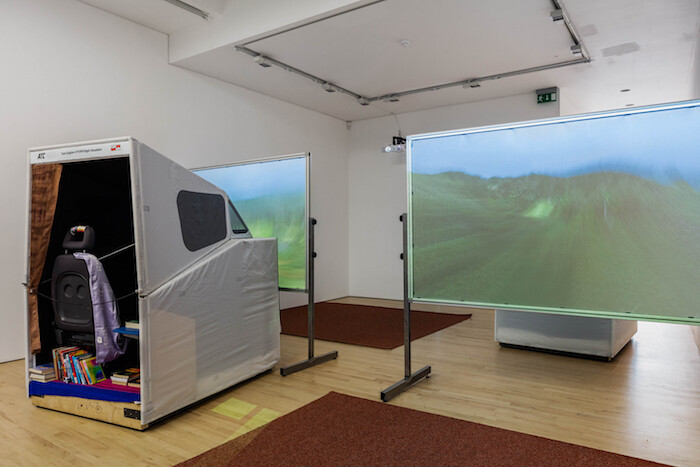
There is a subplot in Harmony Korine’s movie Mister Lonely (2007) that would make a fitting companion to Michael Stevenson’s exhibition “Signs & Wonders.” It tells the story of a nun who survives her fall from a missionary aid plane flying over the forests of Panama. The miracle inspires her sisters, who take to jumping from planes to demonstrate their faith and the power of God to protect them. The nuns pray in mid-air, react in ecstasy to the miracle, and prepare diligently for every flight and fall. But how does one compute a miracle? And how does one prepare for it?
Stevenson’s installation at Carl Freedman Gallery comprises four hand-built 1980s flight simulators, all of them facing screens onto which digital renderings of a flight over a forest in Papua New Guinea are projected. Visitors are unable to enter into the unmanned cockpits, and the simulators appear to fly themselves, heading back and forth across a real route between villages hidden in the mountains. Although there are no nuns in sight, each cockpit carries its own collection of evangelical and millenarian books, dating from the 1960s onwards, by authors involved with the School of World Missions at Fuller Seminary in …
June 21, 2016 – Review
Tate Modern’s Switch House
Ben Eastham
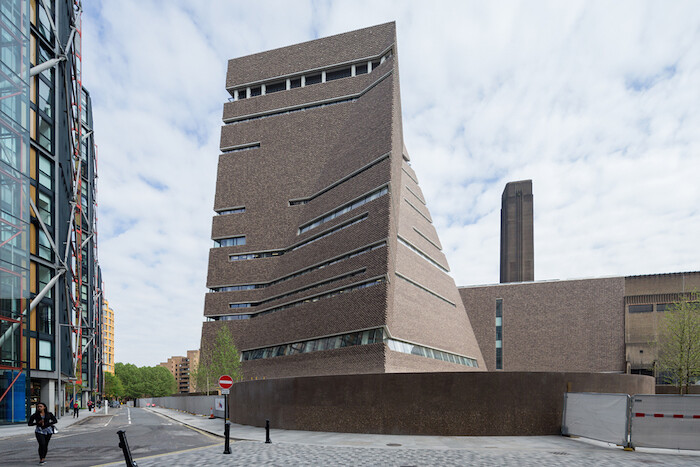
“When racism and sexism are no longer fashionable,” the Guerilla Girls asked in 1989, “what will your art collection be worth?” Predicting that “the art market won’t bestow mega-buck prices on the work of a few white males forever,” their printed notice listed 67 female artists (several of whom are now on show in the refurbished Tate Modern), at least one work by each of whom could be acquired for the price of a single Jasper Johns painting. Once fly-posted around SoHo in a grassroots campaign by the anonymous collective to protest against institutional discrimination in the art world, the poster is now prominently displayed in the world’s most visited museum dedicated to modern and contemporary art. The framed portfolio of which it is a part, Guerrilla Girls Talk Back (1985–90)—a scathing critique of the role and representation of women and ethnic minorities in twentieth-century Western culture—hangs opposite Marilyn Diptych (1962), Andy Warhol’s paean to American sex, money, and cultural imperialism.
The new Tate Modern brings forward the future envisaged by the Guerrilla Girls at the expense of a past embodied in Marilyn. The opening of a vast new wing—a coiled, ten-storey ziggurat designed by Herzog & de Meuron—is the occasion …
May 11, 2016 – Review
Shelagh Wakely’s “Spaces Between Things”
Patrick Langley
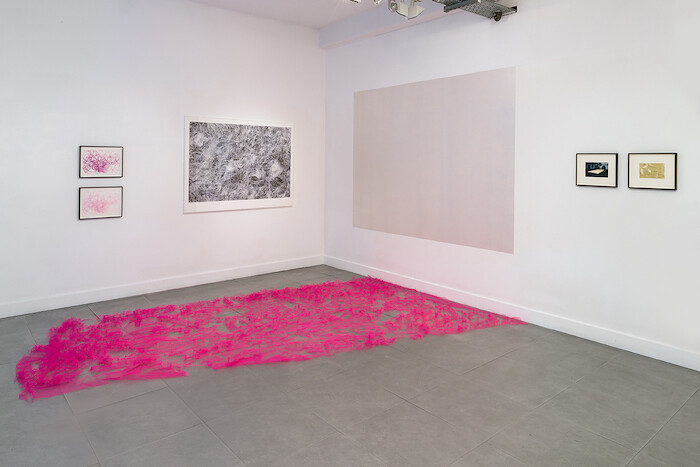
Shelagh Wakely’s Papillon de Nuit (1993)—modestly framed on the white wall of a metal-floored room at Richard Saltoun Gallery—is a collage assembled from photographic documentation of an installation of the same name, in which a video monitor showing a restless, fluttering moth was placed on a glass table, surrounded by gilded fruits. These ornate forms decayed over the course of the exhibition, rotting, collapsing, oozing, evaporating, until all that remained of them—“fresh and ripe at the start of the exhibition,” the artist notes in scribbled pencil in the top-right corner of the collage—was their gold-plated skins, crinkled husks of moldy opulence that had become “overripe and smelly.” As a moth must emerge from a pupa, a shell of organic matter, to complete the transition from larva to adult insect, so must a fruit rot from the inside, and burst the limitations of its decorative skin, before the installation’s effects are complete: in both cases, organic forms are presented as discardable containers for something ephemeral, fleeting, airborne—an insect and an odor of rot. Less important than the material substance of Wakely’s sculptures and installations are the transitions inherent in their composition and, ultimately, decomposition.
Wakely, who died in 2011, aged 78, was …
February 23, 2016 – Review
Stan Douglas’s "The Secret Agent"
Pedro Neves Marques
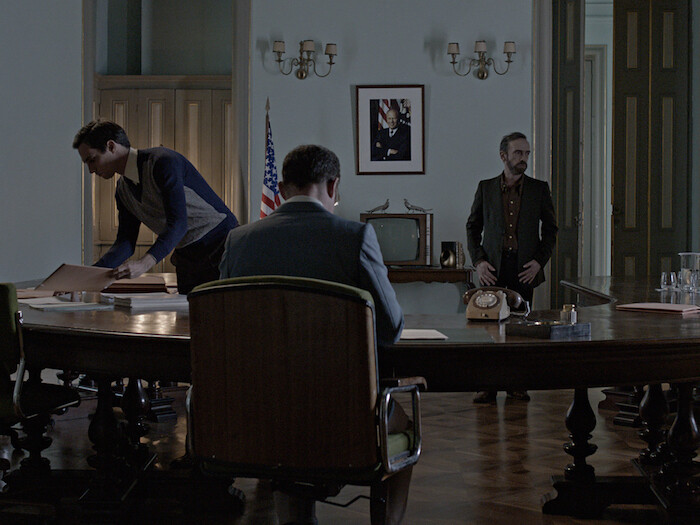
November 25, 1975 marked the beginning of the end of Portugal’s Processo Revolucionário em Curso (Ongoing Revolutionary Process). This brief socialist experiment, which began with the Carnation Revolution of April 25, 1974, marked the attempt by an alliance between the military, workers’ unions, and political movements to free the country from its economic monopolies by supporting communes, land reform, the collective control of industry, and participatory projects in housing and other areas of society. After the turmoil of the “hot summer” of 1975—featuring bombings of the offices of leftist political parties, a siege of the constitutional assembly by workers, and November’s anti-communist counter coup—the moderate left finally managed to block the movement, opening the way for the inclusion of Portugal in the capitalist market economy of the European Union.
Stan Douglas’s new video installation The Secret Agent (2015) is set amidst the political intrigue of this “hot” period, though it is inevitable—in the wake of the 2015 Portuguese elections that pushed the centrist Socialists to make a historic deal with the Communist Party and the Left Bloc—that it resonates with contemporary ideological shifts. The film—a 50-minute loop displayed on a six-channel projection, three on each opposing wall on an otherwise dark …
February 3, 2016 – Review
Condo
Orit Gat
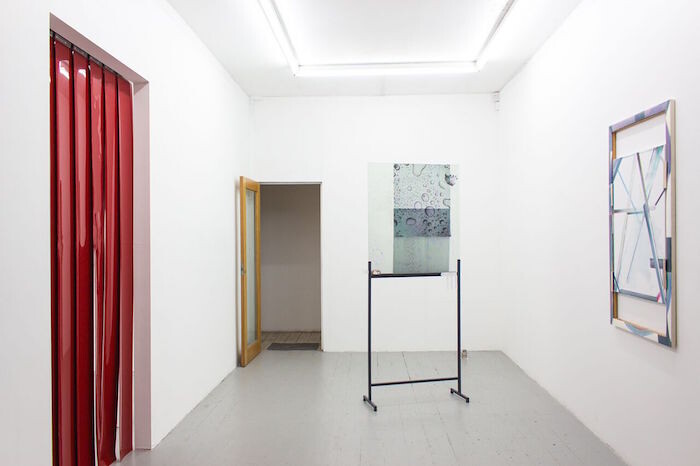
When it comes to galleries, size does matter. With the big getting bigger, one London gallery suggested the small get together. Condo is a collaborative project between 24 galleries from 11 different cities housed in eight London spaces. Initiated by Vanessa Carlos of Carlos/Ishikawa, Condo’s premise is simple: each of the London galleries hosts between one and three visiting galleries. The invited galleries pay 600 pounds to cover costs and keep the full amount from any sales that result.
Condo is not an alternative to art fairs; it’s a new structure meant to allow galleries of a similar size to band together in order to promote their artists and share resources. The participating galleries have similar financial concerns and, as a result, comparable stakes in circumventing the usual flow of funds at an art fair, where the young galleries are encouraged to participate in special sections—displaying work that buys the fair (and them) cultural capital—while the big players bring their most commercial stock. The ethos of younger galleries, from the Lower East Side to East and Southeast London to Kreuzberg, is that they allow for experimentation. At Condo, the main novelty was the model itself, whereas the art looked like a …
December 10, 2015 – Review
George Barber’s “Fences Make Senses”
Marina Vishmidt
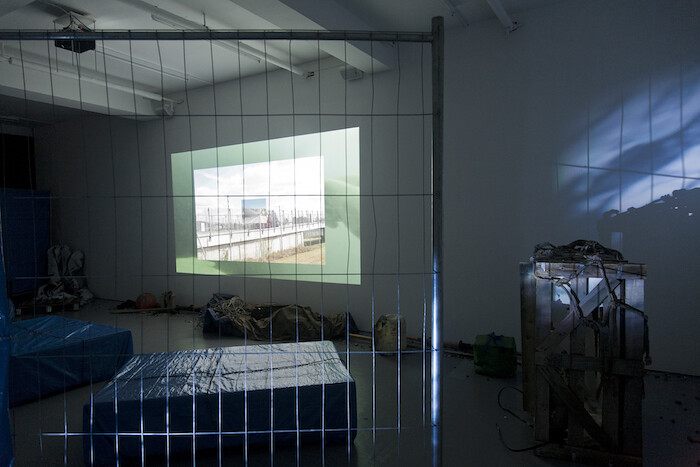
You could imagine it happening in a George Barber video. Nothing for a while, then three come along at once—you can almost hear the folksy, mordant voiceover that features in so many of them. Like the cars filmed from above driving an abstract expressionist tableau into being in Automotive Action Painting (2006), three Barber solo shows sketching the arc of the veteran video artist’s production opened across two continents in the autumn of 2015. Two retrospectives and a new commission are on view in Cardiff and Los Angeles, while Hoxton’s waterside contemporary—a long-term production partner for the artist—hosts two of Barber’s recent pieces, Fences Make Senses (2014) and Basement Pool (2015).
Barber’s maverick trajectory as a moving-image artist took him, until fairly recently, on a detour around the gallery exhibition circuit. This is not untypical of a generation of video artists, particularly in Britain, whose participation in the art world was rendered optional by the equally prominent critical and productive complexes of festivals, video distributors, and television platforms. He saw his mission as “structuralism plus fun,” insisting on engaging the audience rather than torturing them with duration—evidence of the love/hate relationship with the structuralist film milieu that molded him. Barber’s exuberant, …
November 17, 2015 – Review
Ian Cheng’s “Emissary Forks at Perfection”
Matthew McLean
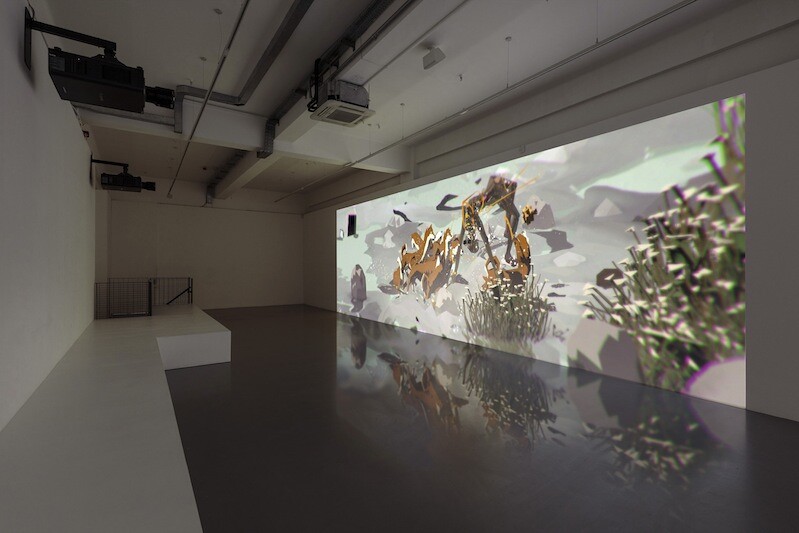
“How long do I need to stay,” I asked a staff member at Pilar Corrias of Ian Cheng’s Emissary Forks at Perfection (2015), “to watch the whole thing?” “It’s a live simulation,” they said of the title work of the artist’s first solo exhibition in London, “so it’s infinite.” Reconsidering, I asked how long I’d need to stay to get a grasp of what that meant. “About twenty minutes.”
Erring on the side of caution, I spent an hour and a half in the gallery. This “live simulation” comprises a ten-foot-wide projection onto the gallery’s wall, alone in the space except for a single flow chart. To the casual viewer it resembles a digital video, and I’m still unable to provide a useful technical definition of what a “live simulation” is. This much I heard and saw: a distorted girlish voice saying “Wake up!;” and a Shiba Inu—that Japanese dog breed of ancient pedigree and unearthly cuteness—named Emissary, summoned to guide a zombie through a depopulated, wild terrain.
Emissary’s face is first revealed to me among a sea of swaying angular white flowers like trapezoidal snowdrops, and virtually nothing in the landscape of the simulation is still. Every plant bends and quivers …
November 5, 2015 – Review
"Surface Tension"
Morgan Quaintance
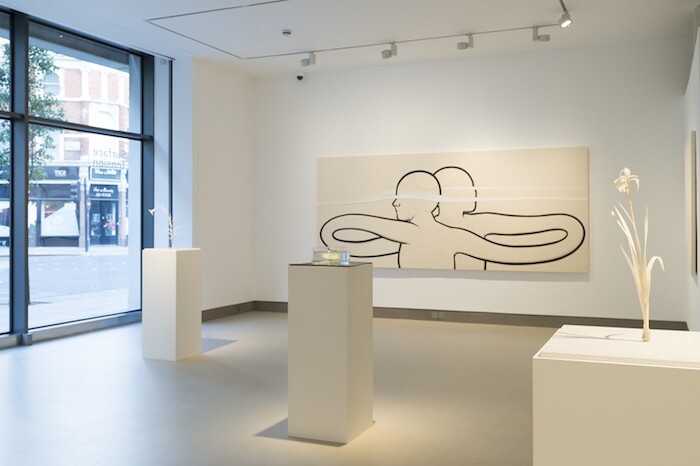
Japan: a land of austere beauty, arcane social ceremony, and indecipherable ritual, or a techno-futurist nation replete with densely populated neon cityscapes. These are the two reductive interpretations that repeatedly color western dispatches from the “land of the rising sun.” While a dichotomy between preservation and progress exists (as it does everywhere), contemporary Japanese culture and society isn’t an unrelenting tug of war between two distinct ways of being. It has risen from a deeper dynamic, a symbiotic and productively antagonistic relationship between what may be termed the traditional and the technological.
“Surface Tension” at White Rainbow gallery, London, uses this dialectic for thematic purposes, bringing together four artists who use traditional craft techniques to produce painting, sculpture, and print that engages with and interrogates contemporary Japanese life. It is a modest exhibition of intricate and at times subtly spectacular art, and it is this latter effect that threatens to push work into decorative territory, as is the case with Masaya Hashimoto’s pieces. Living in a mountain temple for over a decade, his elemental existence has been formalized and romanticized in three intricately detailed flower sculptures made from the bones and antlers of deer, Ayame – Iris Sanguinea (2014), Takagoyuri – …
September 24, 2015 – Review
Coco Fusco’s “And the Sea Will Talk to You”
Colin Perry
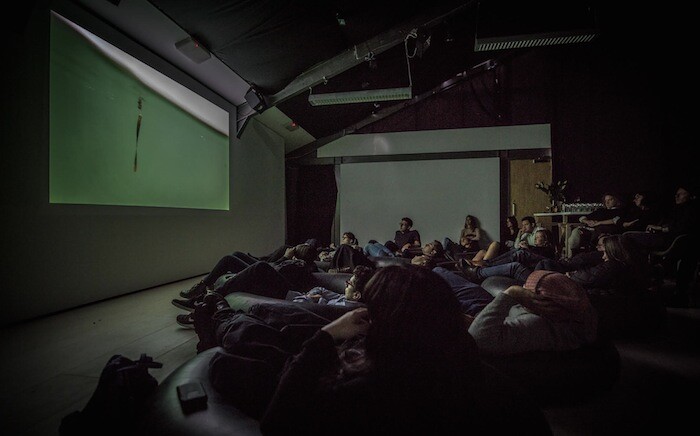
Much is said and little is shown in Coco Fusco’s video installation And the Sea Will Talk to You (2012). We are on a raft, it seems, adrift in the middle of the Florida Straits, the camera dipping intermittently below the turquoise waves and back up to a blank horizon. A watery soundtrack washes back and forth rhythmically. The video’s narrative is told through first-person voice-over accounts in English and Spanish that detail two journeys heading in opposite directions: a family flees from Cuba to Florida on a rickety sea-going vessel; an American-Cuban woman—much like Fusco—catches a series of flights to return her mother’s ashes to the island. While the female narrator worries about being caught out and having her mother’s remains confiscated, the emigrant family contemplates sharks, uncertainty and death. The viewer is placed in the latter’s position, both in the point-of-view of the camera, and in the installation itself. On the gallery floor, in front of the screen, are an array of black rubber rings, the pungent inner tubes of tractor tires. I plonk myself into one. It’s uncomfortable—which is, no doubt, the point.
The work recalls specific histories of Cuban migration, notably the 1994 economic-political crisis that saw …
June 12, 2015 – Review
Frances Stark’s “Sorry for the Wait”
Morgan Quaintance

Hard-drive art: exhibitions and discrete works as life audits, comprising the photographic and documentary contents/detritus of an artist’s hard drive or cloud-space (a collective term for an individual’s online storage facilities). Not yet a widely acknowledged post-digital subgenre, but seemingly the organizing principle behind Frances Stark’s disappointing greengrassi solo show: a neatly ordered exhibition of seven paintings, a collage, and four videos (Sony cubes placed on white plinths in a white cube) that offer a glimpse into culture clashes that take place in the eclectic world of Stark’s cloud-space.
Formally, “Sorry for the Wait” is arranged according to the binary logic of color contrasts, two-tone to be specific. Black ink on white paper is used in the paintings, each with a variation on one form: a signpost composed of three lines and either the word stupid or clever written above it. The form is abstracted in Moment in Clever/Stupid Revolution (2015), rendered positively and negatively against a black or white background in others, and in Stupid Moment in Clever/Stupid Revolution Repurposed (2015) and Clever Moment in Clever/Stupid Revolution Repurposed (2015) it is placed on a black and white checkerboard floor. Echoed by the four black-gray monitors placed against white walls, this …
March 26, 2015 – Review
Nil Yalter
Agnieszka Gratza
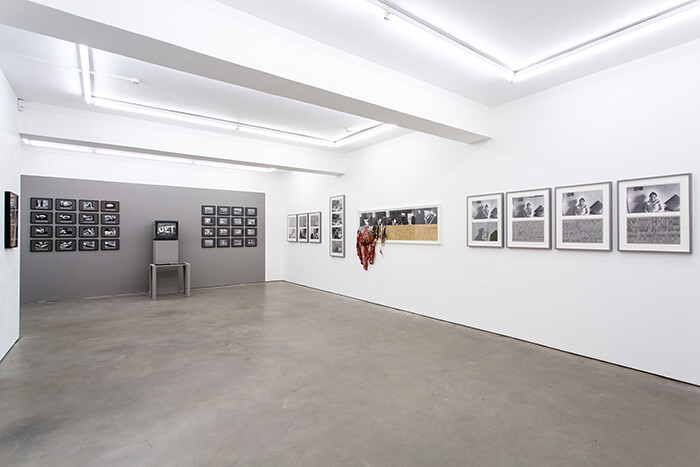
The recent resurgence of interest in the pioneering work of Turkish artist Nil Yalter (b. 1938), whose career spans four decades, owes much to Cornelia Butler’s 2007 exhibition “WACK! Art and the Feminist Revolution” at the Museum of Contemporary Art, Los Angeles. In her retrospective of feminist art from the 1970s, Butler showcased La Roquette, Prison des Femmes (1974), Yalter’s early multimedia work, arguably rescuing it from near oblivion. For decades, the video, photographic, and drawing installation, made in collaboration with artists Judy Blum and Nicole Croiset, languished in the collection of the Fonds national d’art contemporain (FNAC) in France, which acquired it early on but never subsequently showed it.
La Roquette, Prison des Femmes is the earliest of four works, all dating from 1974 and 1979, featured in this tightly focused solo show. A docu-fiction, it is based on the account of Mimi, an inmate at the female prison La Roquette in Paris before it was closed and demolished in 1974. The work grew out of another project called Paris Ville Lumière (1974), a critical guided tour of the French capital’s 20 arrondissements seen through the eyes of two foreigners: Yalter and her American collaborator Judy Blum, who initially met …
March 20, 2015 – Review
Lothar Hempel’s “Tropenkoller”
Charlie Fox
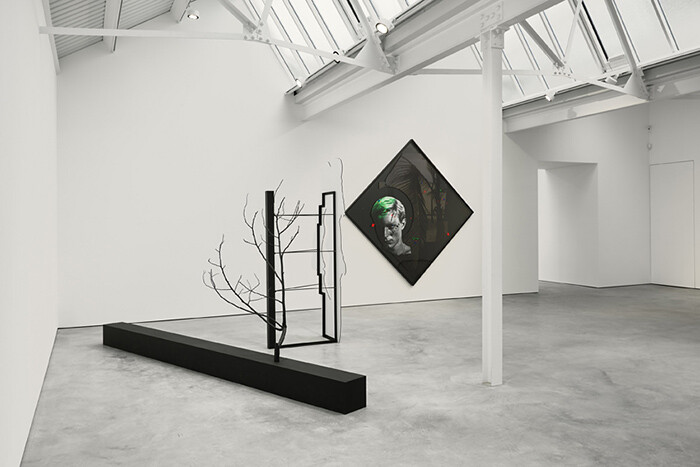
“Tropenkoller” translates from German to English as “tropical frenzy,” but the climate seen in these ten pieces collected over the last five years and exhibited at Modern Art, London doesn’t really come from anywhere other than some intoxicated area within Lothar Hempel’s brain.
Throughout the two decades of his career, Hempel has tasked himself with the outlandishly difficult job of finding endless new ways to be strange—almost to the point of impenetrability. This activity has produced many enigmatic tableaux, staged with defaced cut-out figures and sculptural props—Slowdance (2015) includes a gnarly tree limb emerging from a stretch of painted steel—alongside gleefully mysterious collages. “Tropenkoller” tracks the sly continuation of Hempel’s venture at all its varying levels of opacity while capturing a fresh surge of invention that makes it feel more attractive and baffling than ever.
Arranged in their funky rhomboid frames, collages predominate, but there are two cut-outs stylishly adrift in the gallery’s main room. All the pieces encourage off-beam critique and outré guesswork while looking like a bunch of vaguely menacing hallucinations. The skies in Hempel’s collages come freaked with colored wire to short-circuit their holiday slideshow familiarity, or abstracted by inkjet pixelation into pure cosmic glitter. In the photomontage Storm …
March 18, 2015 – Review
John Gerrard’s “Farm”
Adam Kleinman
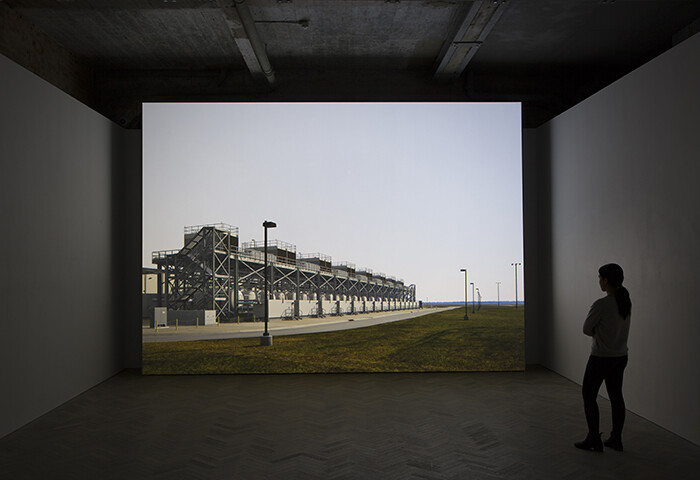
Behold: a red headband-wearing cat warrior brandishing a gold-plated .45 automatic astride a rearing white unicorn that breathes fire; all this in front of a rainbow, some violent explosions, and a castle from Super Mario. No, this isn’t my fantasy, it’s simply a Google image search return for “what does the internet look like.” If I were on some strong psychotropic drugs, an auditory hallucination might have ensued stating how the depiction was “like the new Napoleon Crossing the Alps.” Although I am stone sober, that doesn’t mean that I will not now trip out.
Just as my above association might make the eighteenth-century painter and propagandist Jacques-Louis David turn in his grave, I tend to cringe when I hear the term “post-internet art.” Particularly because most of the work sold under such a label has more to do with tried and true techniques of collage, appropriation, and de rigueur concerns of cultural capital than the ever-growing macro politics of planetary-scale computation. In actuality, post-internet art’s instant popularity probably stems from the trend’s familiarity to older styles, a sort of Pictures Generation 2.0 seamlessly dragged to market to perpetuate the kind of subjectivity-building exercises that the philosopher Gilles Châtelet dubbed as …
February 19, 2015 – Review
Ian Breakwell’s “Important Works from the ’60s and ’70s”
Colin Perry
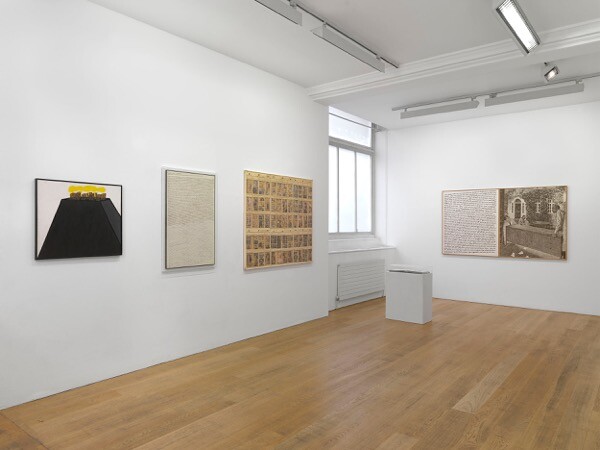
Ian Breakwell was an iconic figure of London’s counter-culture in the 1960s and ’70s whose bleak and laconic text-works, films, performances, and photo-collages explored motifs of alienation, desire, and bathos. Always something more than a gallery artist, Breakwell worked with organizations such as the London Filmmakers’ Co-op (LFMC), the Artist Placement Group, and (in the 1980s) Channel 4 television in the UK. This exhibition centers on Breakwell’s early works from the 1960s and 1970s, and is organized in-house, between gallerist Anthony Reynolds and Jacqui Davies, who has produced works for Random Acts, Channel 4’s strand of experimental short films and videos. Given this backdrop, it seems odd that this exhibition does not include any of Breakwell’s moving-image works. This show is therefore partial—a small fragment rather than a full retrospective of his work during this period.
Thankfully, the two-dimensional works shown here do much to reveal and celebrate Breakwell’s convulsive and anarchic imagination. Most of the pieces are covered in dense webs of handwritten notes, so the exhibition demands a great deal of reading. The Kill (1969) is composed of two panels: on the right is a jaunty illustration, presumably sampled from a children’s storybook, of workmen delivering furniture to a …
January 22, 2015 – Review
Morgan Fisher’s "Past Present, Present Past"
María Palacios Cruz
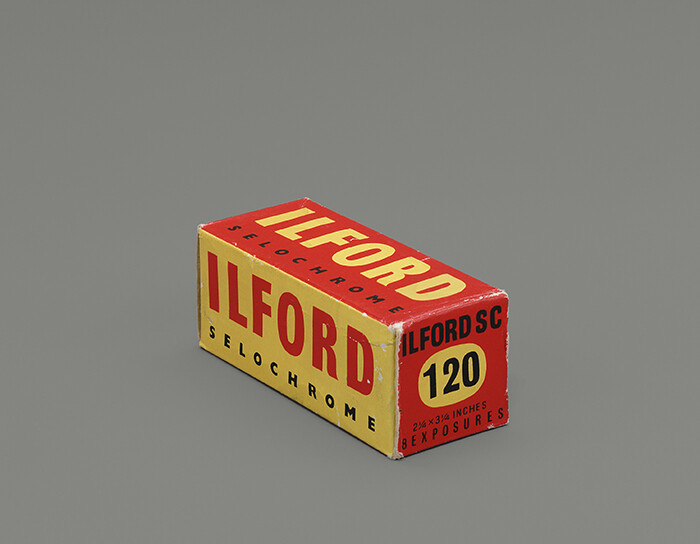
Since Susan Sontag announced the demise of cinephilia in her prescient 1996 essay “The Decay of Cinema,” discourses around the death of cinema have been widespread, fuelled in part by the replacement of celluloid by digital technology. Since our understanding of the world has been so influenced by movies—one irrevocably conditioning the other—cinema’s apparent passing has caused pain, and trauma.
By 2012 the digital takeover of film exhibition was complete. It had been threatened for almost a decade, but it was nevertheless shocking to see 35mm projectors evicted from projection booths across Western Europe and North America. Only a year earlier, British artist Tacita Dean had declared that UNESCO should recognize film as part of a universal cultural heritage, paying homage to it with her installation FILM (2011) at Tate Modern, London. The Austrian filmmaker Peter Kubelka labeled 2012 as film history’s darkest year, and produced Monument Film—a work which is impossible to stage digitally—“as a call for patient defiance.”
Whether working with film, painting, or photography, Los Angeles-based artist Morgan Fisher produces works that closely examine their medium. Best known for his 16mm films, which bring together industrial film practices and visual arts strategies, Fisher is a conceptual filmmaker who turns …
October 21, 2014 – Review
Pierre Huyghe’s “In. Border. Deep”
Jeremy Millar
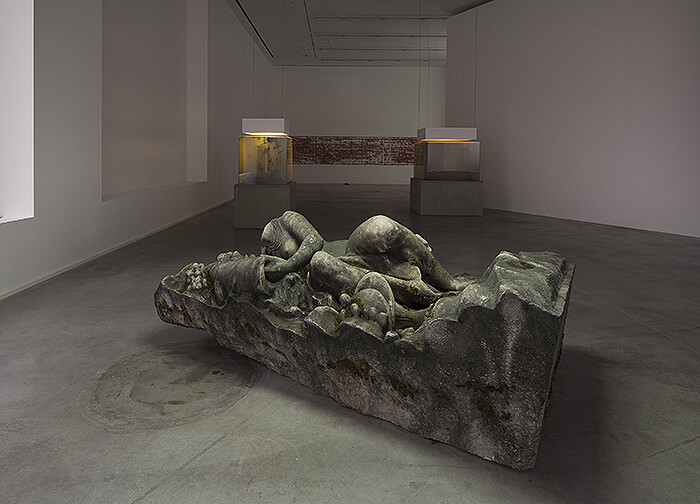
Amber is a form of slow catastrophe, a long compression. A transformation, then, of the resin which once flowed thickly down branch and trunk before these extremities were replaced by those of heat and pressure found deep within chthonic sedimentation. A “beaming sun” (elektron) caught underground, amber’s classical name was “electrum,” and it was said to have formed from the tears of Phaeton’s grieving sisters after they had themselves been transformed into poplars. Their father was the sun.
The sun, its aurorae, planets, seem to drift through a gaseous space in the film De-extinction (2014), although these supposed objects—these points of light—are little more than an absence in that which surrounds them, bubbles of air caught in amber. Caught, too, are strands of… what, exactly? Of the formerly alive, and particles of dust, too, formerly of the living. Most particular are the two insects caught at their most vital, at the point of copulation, and if reproduction might be considered merely a form of genetic persistence then this, here, is both arrested and enabled by their gem-like enveloping. Their genes persist, as they themselves do, in one form or another.
“In one form or another” might indeed be considered an emblem of …
October 3, 2014 – Review
Ben Rivers’s “Things”
Melissa Gronlund
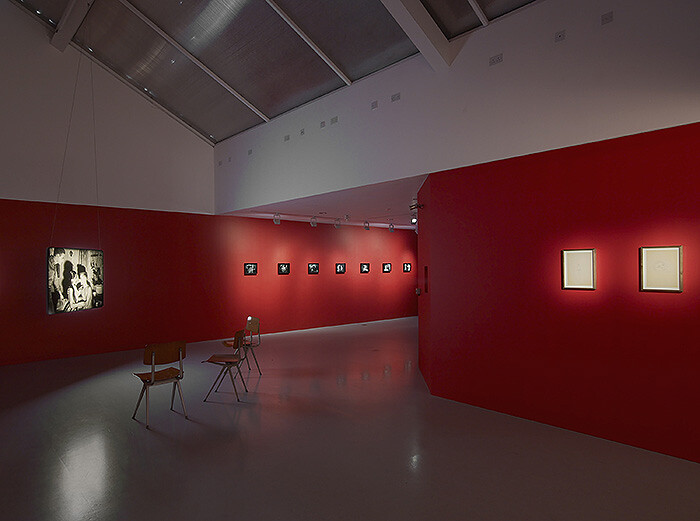
The nouveau romanciers of France in the 1950s attempted to write a new sort of novel, as their name signaled: portraits of characters that would be comprised entirely of external effects, with none of the glimpses into interiority of the conventional novel—characters’ private thoughts and feelings—which the group argued were falsely given. How can I know what you are thinking, whether you sit across from me in reality or on the page? Writers such as Georges Perec and Alain Robbe-Grillet created characters through their possessions and attributes, and through what could be externally observed of them. The work of Ben Rivers, who, working almost exclusively in 16mm and Super 16 film over the past 10 years, has similarly focused on characters—he has referred to his films as “portraits”—with scant provision of commentary or an angle on how they should be seen. Narrative, voiceover, even reaction shots: these are all absent. What Rivers’s films provide instead are long shots of his subjects, who have mostly chosen to live differently—as hoarders or alone in the wilderness—so that a sense of them as people arises from their own actions and daily routine.
Rivers’s latest film, Things (2014), is particularly influenced by the nouveau roman, …
September 24, 2014 – Review
"Neither"
Morgan Quaintance
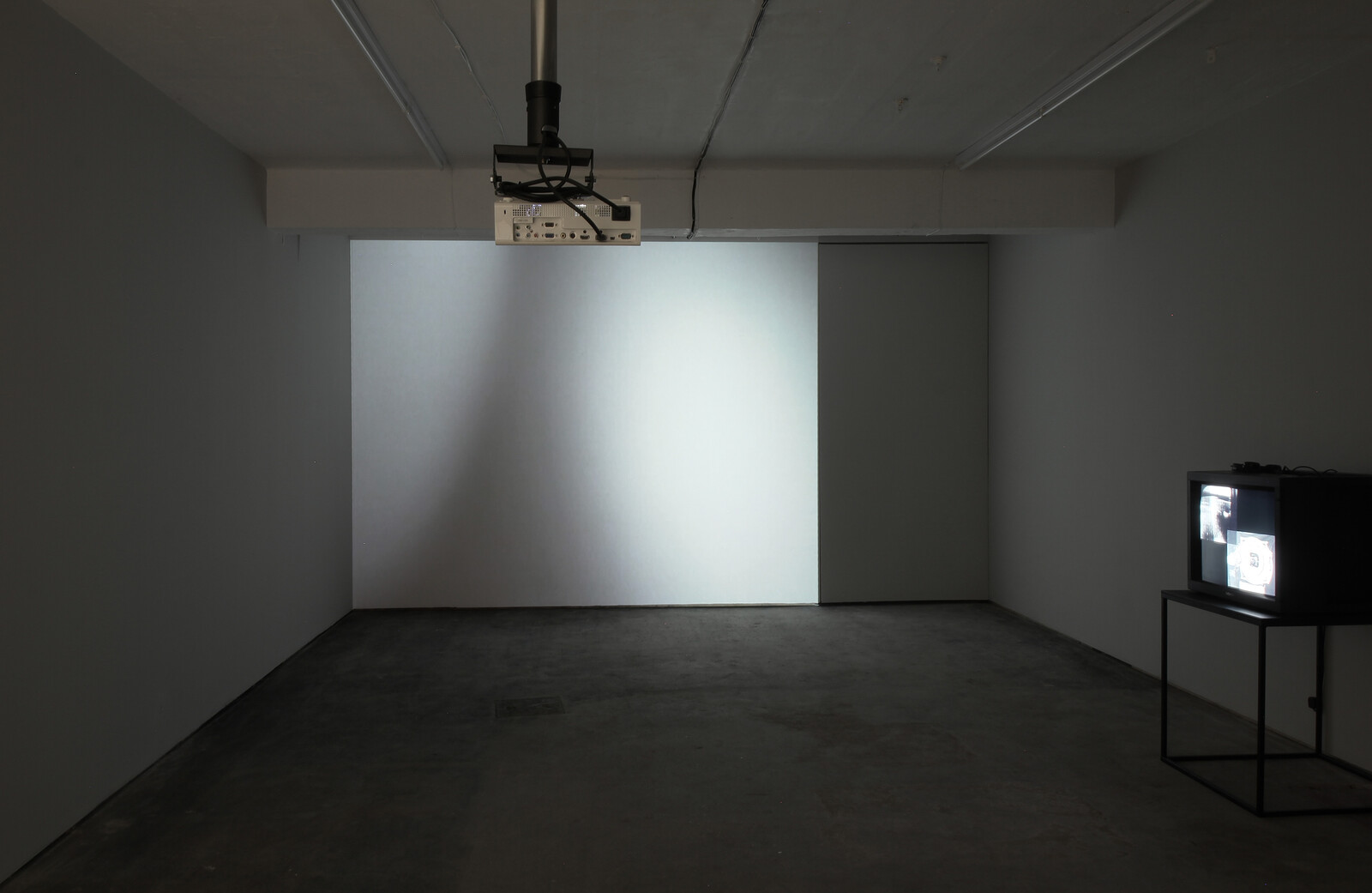
No official record of the most cited influence on the work of contemporary artists is kept, but if a tally had been taken over the past five years, top of the list, just squeezing by Marcel Duchamp and Joseph Beuys, would be the experimental composer and benign orientalist John Cage. Not a year goes by, in the UK at least, that a group show, individual artist, or publishing platform doesn’t cite Cage, display his work, or admit direct usage of the chance strategies he pioneered. The composer is so overexposed, his oeuvre and ideas so thoroughly surveyed, it’s almost impossible to imagine being surprised by either new work, or an exhibition that doesn’t banally wheel out the same aleatoric alibi for some formless, a-curatorial display. Impossible, that is, until now.
“Neither,” the inaugural three-person show at Seventeen’s new London space is an austere and starkly beautiful exhibition. Tightly curated and unashamedly intellectual, it manages that rare, but often-strived-for alchemical feat of turning a complex philosophical proposition into a subtly compelling display. At the exhibition’s core is, thrillingly, an underexposed work by Cage that was also his last. What’s more remarkable is that One11 and 103 (1992), a combined 90-minute film and …
July 10, 2014 – Review
“Phantom Limbs”
JJ Charlesworth
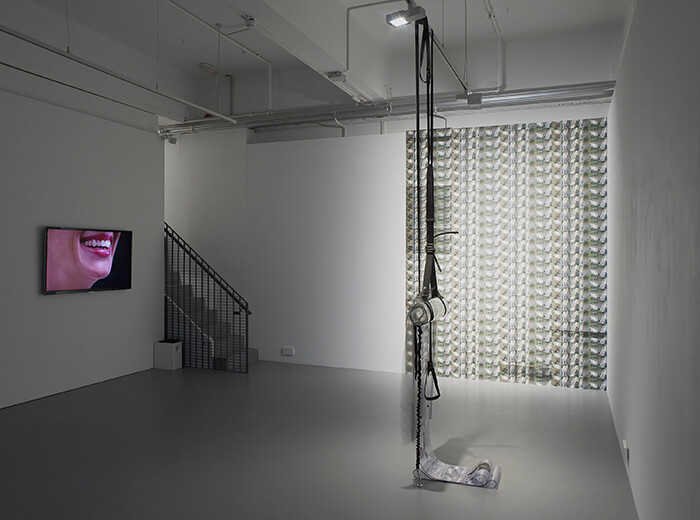
People who have lost arms or legs often report experiencing a “phantom limb”—the sense that the limb is still there, or that they can still move or feel it. It’s a good metaphor, too, for current post-internet art debates concerning the shifting relationship of real to virtual, digital to material. “Phantom Limbs,” Pilar Corrias’s smarter-than-most summer show, does a concise job of mapping the various poles of this cultural and theoretical inquiry. By assembling works that, broadly speaking, figure the human body as something caught in a world of networked relationships with images, technology, and other matter, the exhibition suggests that human subjectivity has in various ways been displaced or reconfigured—or maybe still implicated and entangled in the world, but no longer representing the Cartesian subject of an older, “anthropocentric” worldview.
If the footnoted gallery text is any indication, this exhibition wants to be taken seriously and plugs smoothly into current post-humanist critical trends. In addition to citing the written work of artist Hito Steyerl, the text makes grand pronouncements about the manner in which “notions of consciousness are evolving as a result of our digitally mediated experience.” It also asks leading questions like: “If we are able to feel […] …
June 27, 2014 – Review
Karen Mirza and Brad Butler’s “The Unreliable Narrator”
Morgan Quaintance
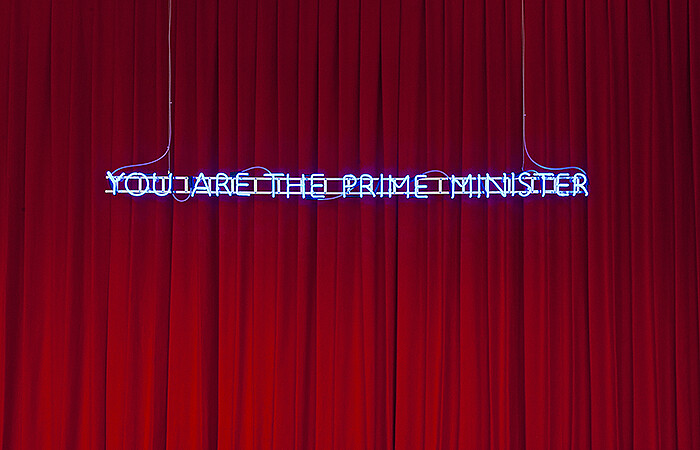
Hung against a backdrop of deep-red curtains the statement, “YOU ARE THE PRIME MINISTER,” glows in electric blue neon. Even in daylight its artificial, storefront brightness beams through waterside contemporary’s windows and is legible far beyond them into the large social housing complex surrounding the gallery.
Although it is clearly visible, London-based artists Karen Mirza and Brad Butler’s arch signage is largely ignored. The image of everyday disinterest this presents—people passing by unawares and inattentive—serves as an apt visual simile for what the British public’s relationship to party politics is currently like. Detached and disengaged, voters across the United Kingdom feel anything but empowered by a prime minister elected to embody and enact their individual wills. Aside from the fact that nobody voted for the current coalition government, politicians have demonstrated they are only in it for themselves through lies about weapons of mass destruction in Iraq, blatant policy U-turns, cross-party corruption scandals, tax breaks for the rich, and the bludgeon of perpetual austerity measures for the working and middle classes. Put simply, in a society that still turns on hereditary privilege, politics is seen as a tool created for, and operated in the service of, moneyed elites. The psychological and …
June 6, 2014 – Review
“World Music”
Shama Khanna
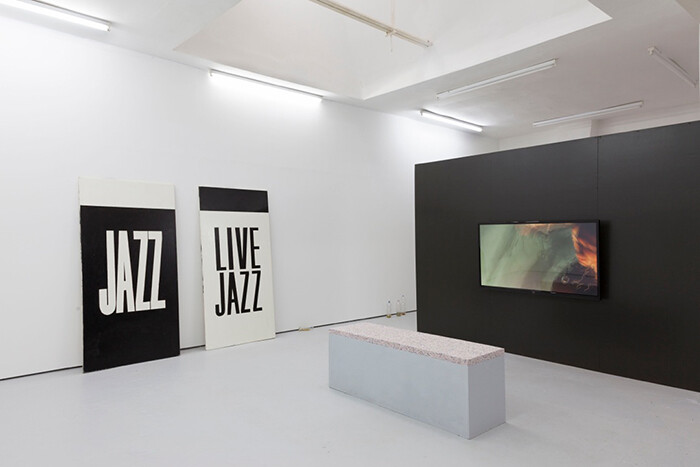
Sasha Litvintseva’s beautifully observed short film Alluvion (2014) follows a group of three tourists as they meander around an unidentified city against the backdrop of daily life: where women and children take their exercise in an open-air gym and laborers hammer away in a shipbuilding workshop. Litvintseva describes, ominously, how “the film and the world around them all are disintegrating toward an Atlantean End”(1), suggesting an equivalence between the lifespan of the film and the world around it. Rather than science fiction, her tale might be closer to the factual present, just as our lives—lived more than ever through digital screens—inch closer to becoming a moving image version of Argentinian author Jorge Luis Borges’s proposal to make a map “the scale of a mile to the mile” in his single-paragraph short story “On Exactitude in Science” (1946). Ultimately, Borges faults cartography’s gradual lack of precision for its failure to achieve this ideal. However, today we have begun to relate to the internet in the same way, taking it for granted much like the weather or time. Indeed, many of the eight participating artists in “World Music”—the current exhibition at Carlos/Ishikawa in London—were born in the late 1980s, and therefore grew …
April 4, 2014 – Review
Carolee Schneemann’s “Water Light/Water Needle”
Morgan Quaintance
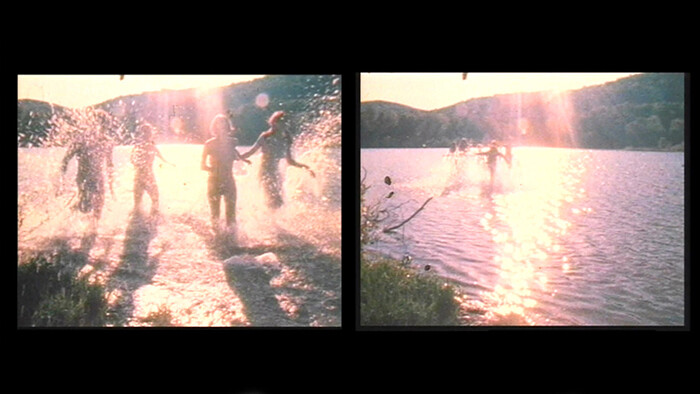
An idyllic scene of Dionysian abandon: six naked bodies splash across the sun-flecked, crystalline surface of a lake, moving, one by one, in slow motion past the camera’s lens. They are all smiling, healthy, happy, vital, and young. This is the opening sequence of Water Light/Water Needle (Lake Mahwah, NJ) (1966), Carolee Schneemann’s 11:13-minute, 16mm film, now presented as a video diptych on a single, large LCD flat screen.
The sequence carries many of Schneemann’s signature themes: collectivity; a shameless, guilt-free, pre-Edenic engagement with the body; and an embrace of pleasure and the liberatory possibilities of orgiastic energies. Depending on your stance in relation to such matters, the scene is an emphatic statement of ideas and intentions that you either embrace or reject. Institutionally speaking, it has largely been the latter. While her legendary status and influence on artists of all generations means Schneemann (born in 1939) continues to be a central canonical figure, it is shocking that “Water Light/Water Needle”—a modest collection of photographs, drawings, and a single video work currently on view at Hales Gallery—is her first solo exhibition in London.
That said, Schneemann’s status as a professional artist, with a bit of an outsider status, has served her well. …
March 13, 2014 – Review
Braco Dimitrijević’s “Early London Years”
Lorena Muñoz-Alonso
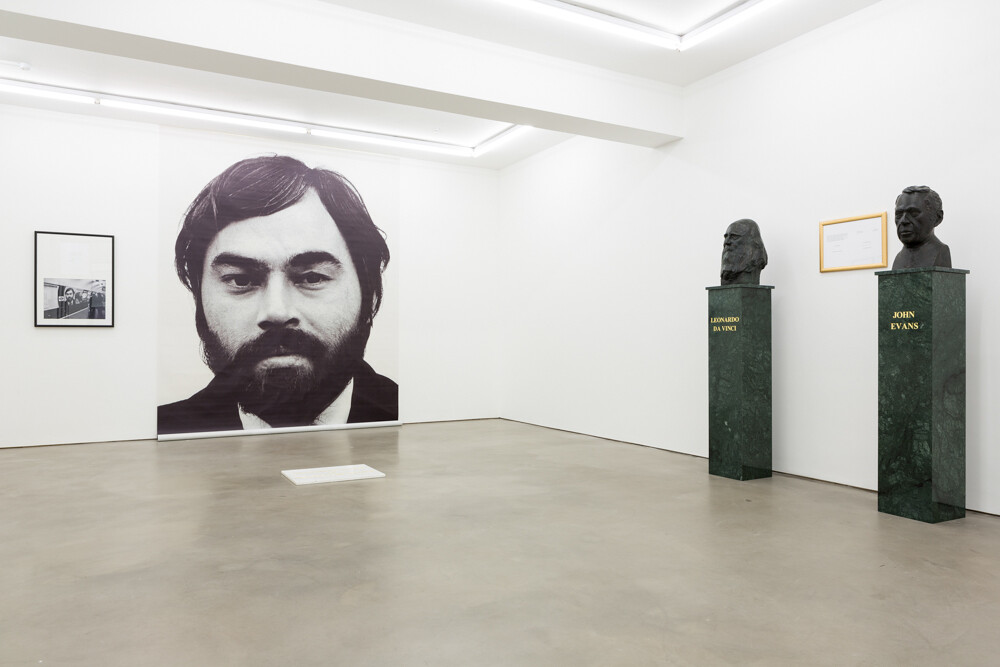
Braco Dimitrijević’s current exhibition at MOT International offers a careful selection of early works by this Paris-based, Sarajevo-born pioneer of Conceptual art. The show’s title, “Early London Years,” refers to the period from 1971 to 1973 when the artist lived there, although a number works produced in other cities like New York and Zagreb between 1968 and 1988 are also on view. Casual Passer-By I Met at 1.14pm, London 1978, for example, is part of one of Dimitrijević’s most celebrated “Casual Passer-By” series (1969–ongoing), in which he photographed anonymous city dwellers and, after obtaining permission from the local authorities, printed the portraits on huge billboards in a key public space. At MOT International, a framed certificate and a picture serve to document one such action, which was installed in the Leicester Square tube station. Although this was notable within the context of a city like London, there have been more confrontational iterations, including when Dimitrijević hung several billboards in 1971 with anonymous faces in the public squares of Zagreb—sites which were usually reserved for the honoring of figures like Marshal Josip Broz Tito and other high ranking officials.
John Foster (1972) is another twist on the “Casual Passers-by” project; Dimitrijević installed …
February 10, 2014 – Review
Isaac Julien’s “PLAYTIME”
Omar Kholeif
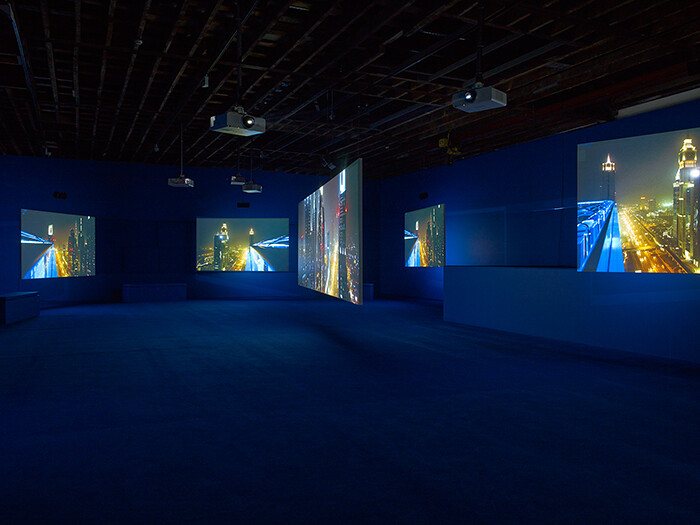
The cornerstone of Isaac Julien’s new exhibition in London is PLAYTIME (2014), a seven-screen, high-definition video installation that features well-known actors James Franco, Maggie Cheung, and Mercedes Cabral, as well as Swiss auctioneer Simon de Pury. Set across three continents, the work follows a suite of characters—the Artist, the Hedge Fund Manager, the Auctioneer, the House Worker, the Art Dealer, and the Reporter—who each occupy distinct chapters. Introducing an episodic structure into the piece are Julien’s choice of locations—the cities of London, Reykjavik, and Dubai—which function allegorically; they were all selected because, it is argued, they are somehow uniquely defined by their relationship to capital.
PLAYTIME operates much like an out-of-sync travelogue. It traces characters as they push and pull at the fragile building blocks that compose contemporary capitalist society. De Pury, playing himself, proffers the most captivating performance. He recounts, with a mixture of anguish and fervor, the adrenaline and subsequent depression that consumes him before and after an auction. Julien’s camera corners de Pury—so close that we can feel him sweat and pulse—and his figure splits across the large central screen at the same time that it is mirrored, his image becoming a doppelgänger of himself. Could this be …
January 24, 2014 – Review
Yngve Holen’s “Original Spare Part”
Anna Gritz
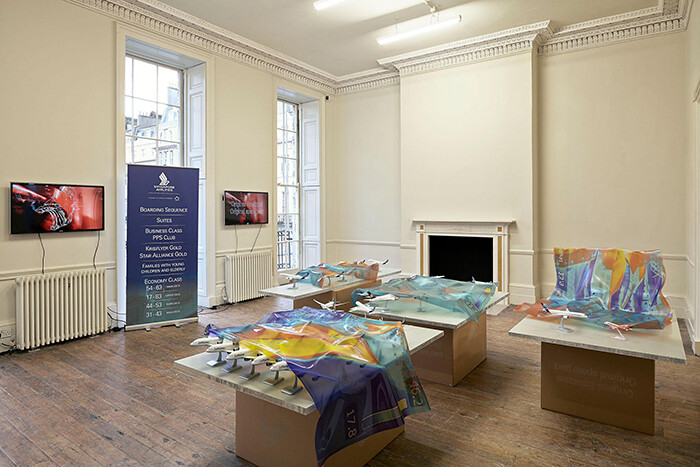
On a recent long-haul flight, I caught myself consumed by a scene on the little screen in front of me. In addition to the in-flight entertainment program and the animated map view, the interface offered a live feed from a camera attached to the bottom of the plane, tracking a vista down to Earth surrounded by the night sky. It was a curious deferral of information that—despite communicating live footage of my trip—felt artificial and removed. The images did not seem to match the view from my window and instead offered a glance at a different reality, as if I were looking at another Earth and tracking someone else’s travel, not my own.
The kind of alienation we develop towards our immediate surroundings—driven by radical social and technological changes and their resulting consolidation and internalization—is central to Yngve Holen’s work. The Norwegian artist’s first gallery show with Modern Art, which takes place in their interim space, an eighteenth-century townhouse in London’s Fitzrovia district, continues his investigation of the physical and psychological makeup of commodities and the spaces in which we encounter them—notwithstanding the irony that it is through the objects we create that we comprehend ourselves and our surroundings. Holen is …
January 17, 2014 – Review
Akram Zaatari’s “On Photography People and Modern Times”
Shama Khanna
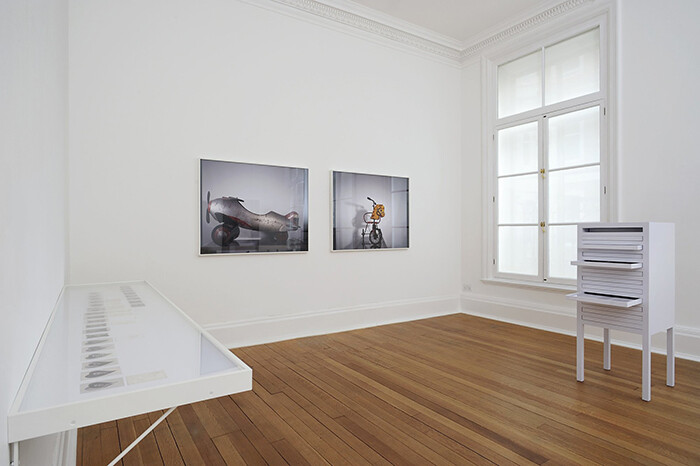
In his latest exhibition, Akram Zaatari offers a way of reading images collectively by looking at the lives and motivations of the photographers who made them. Assuming the role of curator, the artist selects photographs and materials from the Arab Image Foundation (AIF)—which he co-founded with Walid Raad and others in Beirut in 1997—and exhibits them alongside video recorded testimonies of the photographers themselves.
The project’s primary focus is on the archive of photographer Hashem el Madani, as well as Studio Sheherazade, which el Madani established in 1953 in the Southern Lebanese city of Saida, Zaatari’s hometown. A short interview with the photographer is part of the first installation On Photography People and Modern Times (2010), which includes a two-channel video. On one side, an AIF archivist is filmed in stop-motion as she handles materials from the collection; on the other, the photographers tell the stories behind the images. El Madani, whose father was Sheikh, explains that only after checking that photography was not a sin was he able to support his son’s choice of profession. Other interviewees from Cairo, Alexandria, and Jerusalem discuss their individual relationship to photographic practice: a wedding photographer remembers scolding young brides for letting curls fall …
November 27, 2013 – Review
Aura Satz’s “Color Opponent Process”
Morgan Quaintance
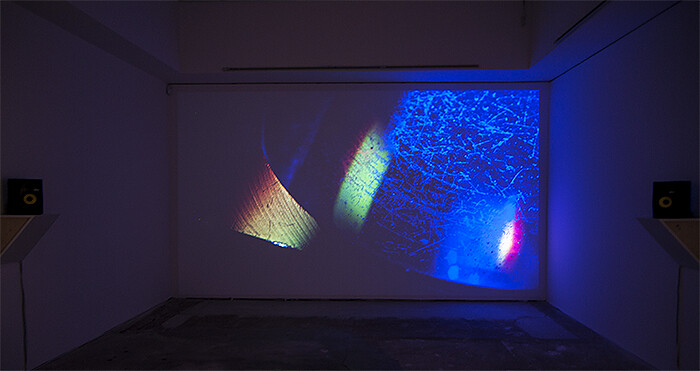
Joan of Arc in flames, women and technological innovation, and the retinal quirks of color perception—there is a complex swirl of ideas and images in the current exhibition by London-based artist Aura Satz at Paradise Row. Collectively, they present a kind of shadowy gestalt, using the cover of darkness to draw links between dreamily polychromatic, and strangely muted, photographic and moving image work. Up close it is a different story. Beyond the formal cohesiveness of color content and abstraction, each work is a different take on Satz’s historically rich subject matter, which includes the story of Natalie Kalmus—a color adviser on the majority of Hollywood’s Technicolor films from 1934–49—as well as a general account of the use of color in early twentieth-century film.
The exhibition’s centerpiece is the eight-minute, high-definition video Doorway for Natalie Kalmus (2013), a lyrical dedication to the color expert, in which the interior of a functioning 35mm color printer is captured with finely detailed, macro-lens close-ups. The effect is quite surprising. Rather than a series of lackluster, mechanics-in-motion images, footage of the printer’s workings looks like amorphous, telescopic photographs of outer space, or the strange, cellular landscapes of the human body. Progressing from slow details to a …
November 1, 2013 – Review
Hannah Sawtell’s “RE PETITIONER IN ZERO TIME”
JJ Charlesworth

An aerial view, computer-generated, of a bleak, barren plain, improbably square in shape and bounded by undulating mountains, under a sunless grey sky. The view circles, then sweeps slowly down the speckled grey ground, gaining resolution as we begin to make out a terrain of grayish rocks, stones, gravel, and dust. Half submerged in this lifeless rubble, we catch sight of human artifacts: the spokes of alloy-wheel car tires, and other less distinct bits of bodywork—wing mirrors, fragments of fenders, wheel arches, and so on—shiny and brightly colored against the drab surroundings. Something that looks like the black slab of a computer keyboard, and a more indistinct, curved object that may be the chassis of a Mac Pro are also poking out of the dirt. Identical forms appear elsewhere as our view tracks around the plain. Then, without any hurry, the point-of-view slides up and away, back to a higher altitude, before the cycle begins again.
This video sequence loops on a big, freestanding, curved projection screen in the darkness of Hannah Sawtell’s solo show at Vilma Gold. A half-attentive, possibly uninformed viewer, who might not be familiar with Sawtell’s previous work, could probably still figure out that the artist has …
July 12, 2013 – Review
Jack Lavender’s "Dreams Chunky"
Lorena Muñoz-Alonso
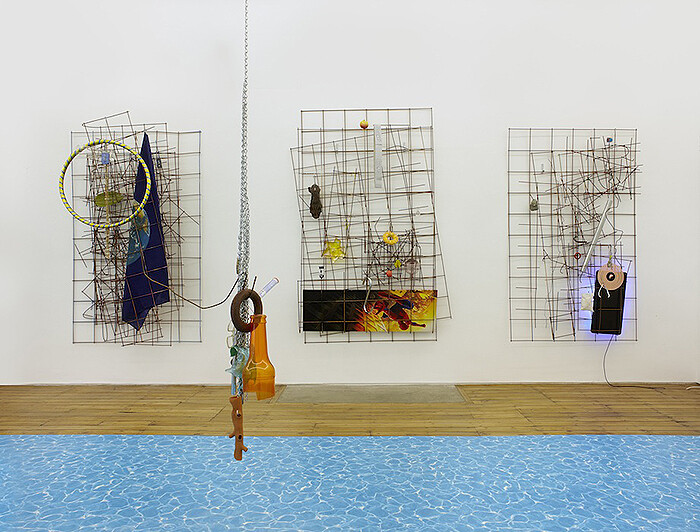
The group of sculptures gathered here feel like the remnants of some stranded explorer’s dedicated toil, the evidence of an island-bound prisoner bent on making the most of his imposed yet paradisiacal isolation. And it’s this placid, oceanic mood that dominates “Dreams Chunky,” Jack Lavender’s first solo show at The approach, amplified by the sunlit water pattern of the laminate mat that covers most of the floor of the first gallery. A suitably aqueous soundtrack fills the room unobtrusively, emanating from a retro-futuristic ghetto blaster that hangs from a metal chain, hovering over the plastic floor like a strange totem (Falling Waters, all works 2013).
There is an ethnographic quality to the young London-based artist’s work, and a slight nod towards the supernatural properties bestowed upon the material traces of foreign cultures, like in Melanesian cargo cults. An assembly of nimble assemblages of found objects, like flotsam washed up on the seashore. Yet on closer inspection, there’s a logic to their organization. Consider Dreams Chunky 3, for example, where a series of elements—including hooks, a paint tube, a glass leaf and glass bottle, plastic fruit, a dog toy, a crystal pineapple, and a Spiderman-printed canvas—appear ensnared in a metallic grid, like …
June 27, 2013 – Review
Thomson & Craighead’s “Never Odd or Even”
Daniella Rose King
“Never Odd or Even” seamlessly traverses the twenty-year trajectory of Jon Thomson and Alison Craighead’s practice, marked by their explorations of the World Wide Web and the (mis-)information it creates and disseminates. In their video games and installations, they present a set of narratives that, one imagines, might resemble the results as displayed to an extraterrestrial who has tapped into planet Earth’s search engines.
Installed in the basement of Carroll / Fletcher’s gallery in London’s upmarket West End, Belief (2012) marks the end of the artists’ Flat Earth Trilogy. Sourced from YouTube, Google Earth, and Flickr, this video triptych ponders the effect the proliferation of online content has had on perceived reality. For the artists, the overwhelming catalog of opinions, speculations, rants, and manifestoes for which the internet provides a platform has resulted in a flattened, collapsed perception of faith or religion. Belief presents a series of clips posted on YouTube by self-anointed prophets. A young Christian woman proclaims the Fukushima earthquake as a message from God to the atheists, having shaken the shoulders of Japan and said, “Hey listen, I’m here.” A surprisingly sober Satanist in San Diego tells us that “most Satanists are really atheists: we don’t believe in …
April 4, 2013 – Review
Jeff Keen
Filipa Ramos
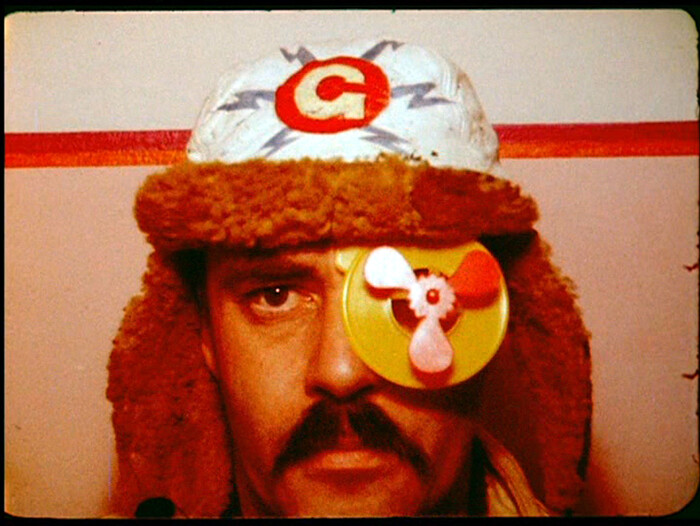
There is a morbid fascination in observing cinema’s material world. That world which stands still, which is not affected by the transience of the moving image; which can be observed for the desired time and angle, and which steadily reveals itself upon our eyes. This possibility is the revenge of the fetishistic spectator, who desires to go beyond the threshold of the fleeting cinematic image, and see, touch, or even possess those things that appeared in it.
It can be awkward to have access to such concrete reality because the pleasure of watching films is often more related to the gaze of the ephemeral than with the extended observation of a fixed object. These ambiguous feelings cohabit at Kate MacGarry gallery, whose current exhibition presents a series of drawings, paintings, and objects related to the film works of Jeff Keen, a cult figure of British experimental cinema.
Keen (b. 1923), who passed away in 2012 after having made over seventy short films and videos, could well be considered a pioneer of the postmodernist imaginary. Keen’s films present an intricate (and often excruciating) babble of images, sounds, and gestures that are combined, distorted, and corrupted at a very accelerated speed—some of them being …
March 18, 2013 – Review
Nora Schultz’s “Rug Import”
Anna Gritz
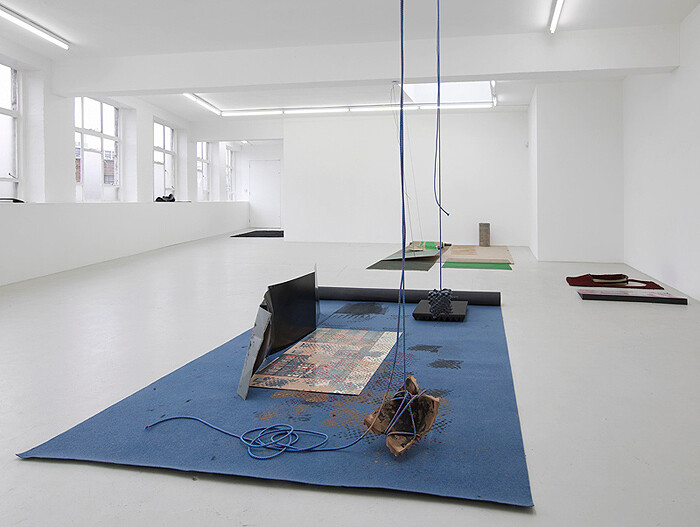
Hovering somewhere between a mini-golf course and a rug emporium, Nora Schultz’s solo exhibition at Campoli Presti is a peculiar presentation. It is a quiet show, filled with careful arrangements of office carpets and rubber mats, partially hung from strings and paired with found objects. The space serves at once as showroom, production plant, parcour, and storage unit. Despite the apparent order there is the suggestion of disturbance, as if the works were caught in flagrante, interrupted in the act of producing themselves—something they will surely continue to do so just as soon as one turns one’s back.
The works are suspended in treatments, folded, layered, cut apart, dipped into paint, and even imprinted onto one another, doubling both as stencil and canvas. They occupy an interesting middle ground between artwork, material, and medium—apparatus and outcome. Schultz’s artworks are inclusive production sites, vertically integrated scenarios incorporating setting, media, and production method. For this show, the artist succeeds through taking herself out of the equation, that is, the performative stunts for which Schultz is known for are missing. She appears here rather as an invisible engineer who has orchestrated the infrastructure that allows the materials (forgive me) to produce themselves. Knowing her …
March 4, 2013 – Review
George Barber’s “The Freestone Drone”
Omar Kholeif
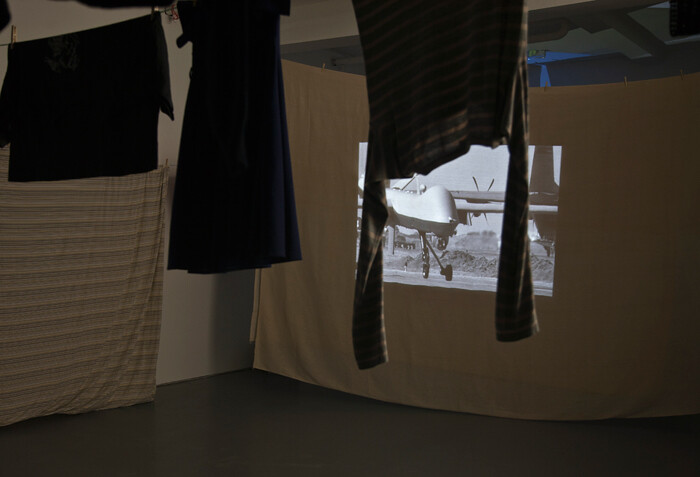
George Barber, the pioneering British video artist influential in defining the Scratch Video movement, launched his first solo show at Waterside Contemporary with “The Freestone Drone”—an installation that resembled a domestic yard-cum-war zone. As one entered, strung up across the gallery walls were numerous washing lines, covered with sheaths of clothing, creating a soft and comforting architecture, which was quickly punctured by the piercing noise of Unmanned Aerial Vehicles (UAVs) in the periphery. UAVs, more commonly known as drones, have become synonymous with modern warfare, replacing human air fighters in small-scale or covert combat situations.
The current U.S. administration has reportedly been responsible for increasing deployments of drones to Afghanistan, Pakistan, and Yemen to the tune of tens of thousands of aircraft, a six-fold increase to what it was under Bush. Accordingly, the drone has also become a phenomenon that occupies a number of contemporary artists. James Bridle’s Drone Shadow 002 (2012) and Dronestagram are two projects that consider the cultural impact of drones across different media. The former seeks to make visible the shadows of drones by publically marking out physical representations of these UAVs on public floors and spaces, while the latter uses social media to highlight …
January 16, 2013 – Review
John Skoog’s “Sent på Jorden and Förår”
Laura McLean-Ferris
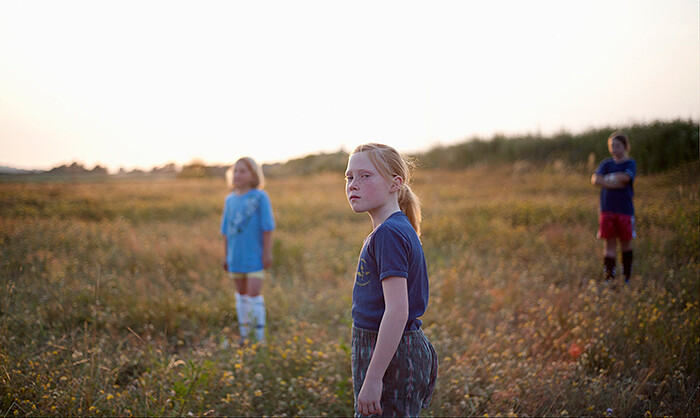
This darkened period following the new year, with only slim pickings of sunlight, is habitually described in the northern hemisphere by one succinct word: depressing. With the celebrations around the winter equinox to keep spirits up now over, people trudge glumly back to work, cheerless. Still, beyond existential gloom, this is a part of a natural cycle relating to our position on the planet, and we tend to accept it, along with all its rituals and associations. Dismal feelings, that is, are permitted.
John Skoog’s exhibition of two films at Pilar Corrias gallery in London transports viewers to two less depressing seasonal moments. The artist’s first film on show here, Sent på Jorden (2011), sends us hurtling to the days following the other equinox in midsummer. Its title translates as “late on Earth” and is taken from the surrealist work of the Swedish poet Gunnar Ekelöf. It is this sense of lateness, of impending gloom, which is powerfully conveyed in Skoog’s strung together series of short, speechless vignettes filmed in the artist’s birth place, the small rural Swedish town of Kvidinge (population 900). Each exquisitely constructed scene was filmed at dusk, with darkness continually threatening to close in, sending that unmistakable …
November 27, 2012 – Review
Pilvi Takala’s “Random Numbers”
Anna Gritz
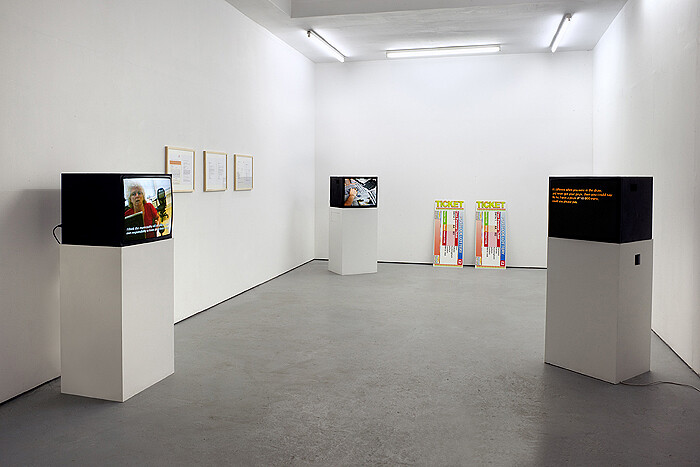
Long before Ali G’s Borat, Andy Kaufman was touring the East Coast with his stand-up comedy character Foreign Man, an ambiguous entertainer from a fictional island in the Caspian Sea, who, with his overtly strong accent, inept punch lines, and naïve questions, created awkward moments on stage of almost unparalleled dimensions. With staple lines like “T’ank you veddy much,” he cradled his audience in a faux security that made them simultaneously cry with laughter and far more receptive to his messages and hidden criticisms.
The all-too-familiar figure of the jester embraced by comedians and artists alike is cleverly reworked in Pilvi Takala’s farcical fables about social conditioning. Through a combination of homemade reportage, hidden-camera recordings, and absurdist situational humor, Takala promotes a technique of rudimentary interaction based on deliberate confusion, misreadings, and the insertion of subtle, subversive gestures into everyday settings. In doing so, she creates characters—such as the woman dressed in a Snow White costume who is denied access to Disneyland—whose mere presence undermine modern codes of conduct. Often the artist’s body functions as a questioning presence, her gestures as subtle stumbling stones that force the people she encounters to question the logic behind their actions—causing small cracks in the …
October 26, 2012 – Review
Theaster Gates’s "My Labor Is My Protest"
Gil Leung
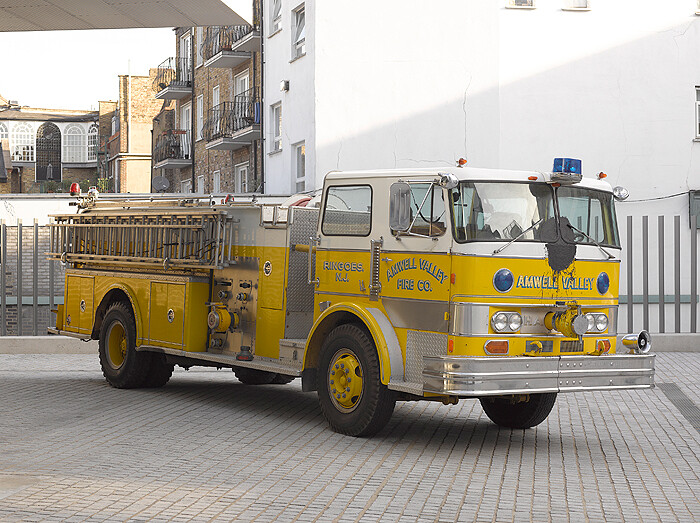
In 1973, Hollis Frampton sent a letter of protest to the curator of MoMA who had asked him about the possibility of doing a retrospective of his work, “for love and honor and no money.”(1) The working conditions of artists may not have changed much today, but perhaps there has been a shift in the way the problem is approached. Theaster Gates’s “My Labor Is My Protest” at White Cube, Bermondsey, is less about protest as strike, or critique via deconstruction, than the positive production of social change through work: that is, labor as protest.
This notion of labor as a form of protest is perhaps most evident in the exhibition’s reference to Johnson Publishing Company, Chicago, most specifically in the works Johnson Editorial Library (2012) and On Black Foundations (2012). JPC is the largest African-American-owned publishing firm in the United States; they are the publishers of Ebony and JET magazines (2) as well as the owners of Fashion Fair Cosmetics, a cosmetic line created in 1973 and now the largest Black-owned cosmetics company globally. (3) Founded by John H. Johnson and Eunice W. Johnson in 1942, JPC combined humanitarian and industrial affinities, utilizing entrepreneurial business as a means to reinstate …
September 12, 2012 – Review
Natascha Sadr Haghighian
JJ Charlesworth
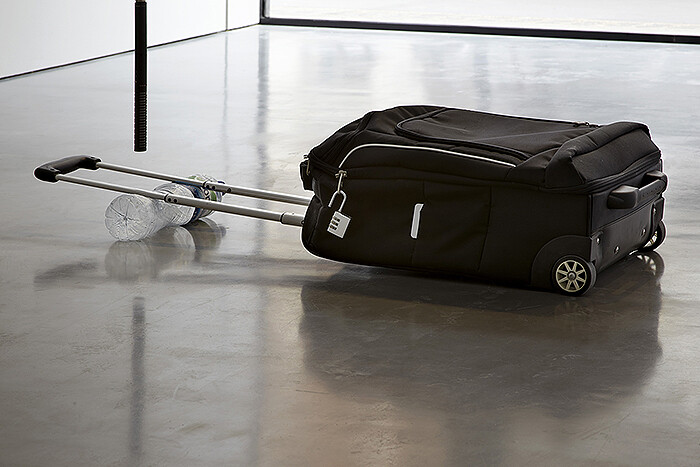
Berlin-based Natascha Sadr Haghighian’s exhibition at Carroll / Fletcher might appear visually spare, but with each work, Haghighian draws you further into a game of institutional hide-and-seek, in which visibility and invisibility, the act of remaining hidden and being revealed, are played out as Machiavellian manipulations of the conventions of spectatorship and exhibition, where voyeurism plays a critical role.
You are, in other words, being messed with, and it starts as you step into the first, storefront gallery space, occupied by what looks like typical contemporary art “sculpture” (de paso, 2012)—a wheel-on suitcase has been motorized, and it slides slowly back and forth on its belly, propped up slightly by the empty mineral water bottle over which the case’s handlebars rest. A dangling microphone picks up and amplifies the crackling of the plastic bottle.
So far, so mysterious. A little adjacent gallery presents a set of associated works that extrapolate this weird sculpture: a set of printed maps and notes outline the history of the expansion of intra-European flight paths in the wake of the deregulation of the European air industry; alongside these are notes and letters sent to an English municipal council, which has agreed to 100-year licensing rights with Nestlé …
July 12, 2012 – Review
"We Love You"
Anna Gritz
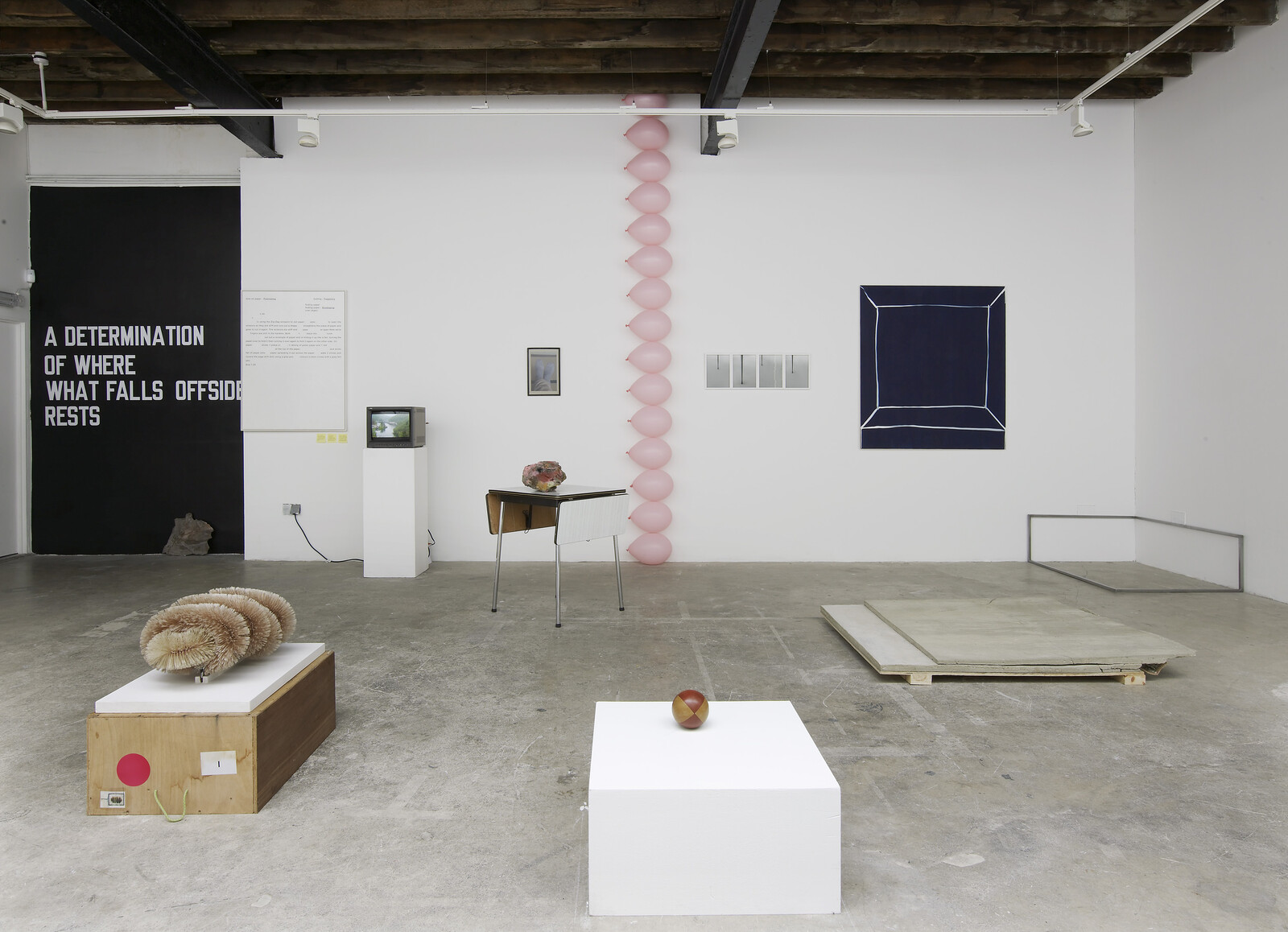
With Vanessa Billy, Cathy Wilkes, Karin Lehmann, Alice Browne, Phyllida Barlow, Joanna Slusarczyk, Lucy Clout, James L. Mathewuse, Rehana Zaman, Sean Edwards, Lawrence Weiner, An Endless Supply, Matt Golden, John Frankland, Natsue Ikeda, Matthew Richardson, Chris Evans, Rachal Bradley, Matthew Smith, Carl Plackman, James Torble, Jack Strange, Fischli & Weiss, Esmeralda Valencia Lindström, Santo Tolone, Pino Pascali, Mauro Vignando, Yonatan Vinitsky, Rupprecht Geiger, and Antal Biro
The pithy press release of Limoncello’s exhibition “We Love You” promises “an exhibition in which each Limoncello artist has chosen an artist who has influenced them and an artist they would put money on for the future.” Not a boundary-breaking concept by any means as it could have easily been replaced by the phrase “artists artists like,” and yet not a bad way to open a new space if you are out to establish influences, trace legacies, and test out some new names along the way.
The gallery, which succeeded the year-long project Associates founded by artist Ryan Gander, recently left the former East London hotspot Hoxton for a larger space up the road in the new East London hotspot Dalston. Remaining from its “Associates” days is a selection of the artists and an appreciation …
June 4, 2012 – Review
Yto Barrada’s "Mobilier Urbain"
JJ Charlesworth
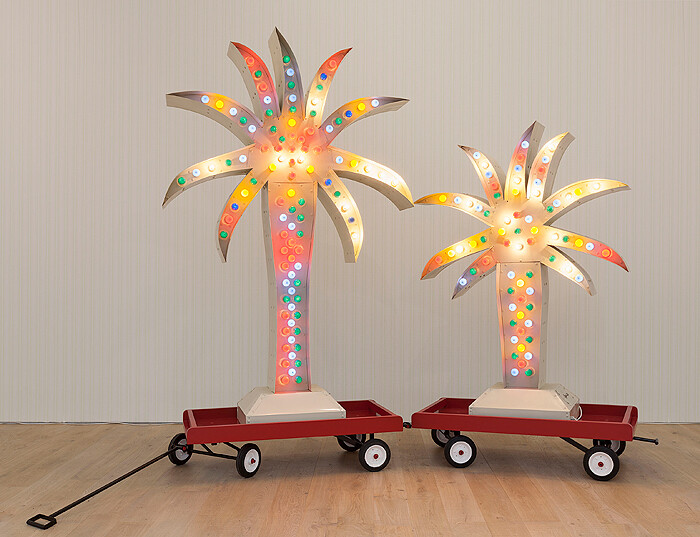
There are artworks that work on the viewer’s apprehension of an implied absence, and then there are artworks that simply stand there waiting for that apparent lack to be filled in by contextualizing talk. The former has something to do with aesthetic experience, the latter with a loss of interest in it, and standing among Yto Barrada’s work at Pace Gallery London, I get the feeling the talk wins.
Paris-born, French-Algerian Barrada lives in works in Tangier. Barrada is a lot of things: artist, filmmaker, photographer, cultural activist, and, since 2006, director and co-founder of the Cinémathèque de Tanger, now a vibrant art cinema and cultural center. The persistent focus of Barrada’s work is the cultural and social predicament of Morocco and its people—the vagaries of its political history, the impact of migration and globalization—and Barrada’s earlier education in political science informs works that mix bleak humor and a melancholic sense of stasis with an attention to the narratives of power.
This Pace Gallery London show of older and newer work recaps some of Barrada’s ongoing concerns. The brightly colored geometric forms of the “Autocar” photographic series (2004) turn out to be the logos of the buses that traverse the Straits of …
May 11, 2012 – Review
Gabriel Kuri’s “Classical Symmetry, Historical Data, Subjective Judgement”
Lorena Muñoz-Alonso

Contingency and probability are long-standing conceptual interests for Mexican artist Gabriel Kuri. His 2011 exhibition at South London Gallery was titled “Before Contingency After the Fact,” for example. His current show at Sadie Coles is titled “Classical Symmetry, Historical Data, Subjective Judgement,” which, according to statistician David Spiegelhalter, are the three essential considerations for calculating the probability of an event. Still, the contingencies Kuri might be concerned with remain elusive and unspecified here, and the sculptures gathered in this show successfully convey that sense of impermanence and open-endedness.
In the room upstairs, six wall sculptures made of gilded insulating foam form a sequence of self-portraits where genre is also mutable or provisional. Some of them remind me of Hannah Wilke’s famous vaginal sculptures from the 1970s, made of chewing gum folded onto itself. Kuri’s larger and brighter sculptures, however, depart from Wilke’s feminist politics to revel in their own theatricality. In Recurring Flat Line Chart (all works 2012), for example, a plastic bag containing liquid bearing an uncanny likeness to urine hangs from what looks like the torso and upper legs of an overweight creature. In Double Self Portrait (Two Point Crossed Section Chart) that same shape becomes a face by …
April 11, 2012 – Review
Nina Beier’s "Shirts vs Skins"
Anna Gritz
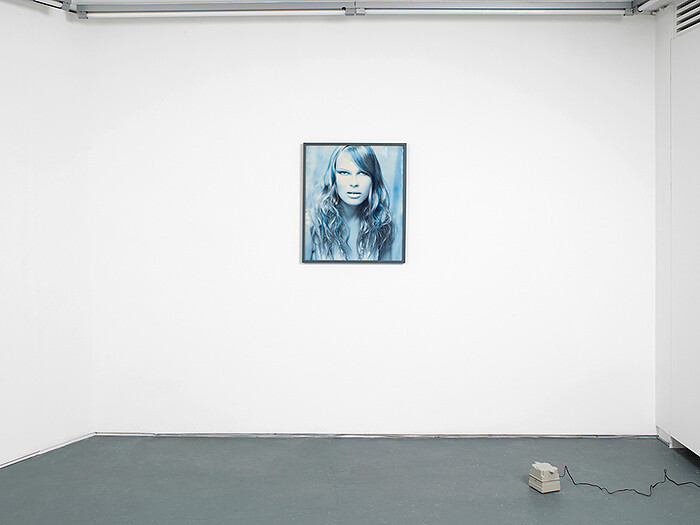
These days nothing fades quicker than a trend. Who would like to be caught dead in the haircut Jennifer Aniston sported as Rachel in the 1990s television series “Friends.” Hairstyles are not meant to last, and yet some of their advertisements have found a small niche of survival in outmoded hair salons. Fading in the display windows, they enter a curiously frozen state, that is, they fade so slowly so as only to be barely recognized as fleeting leftovers from another season.
In her series “The Blues” (2012) Nina Beier presents these found advertisement photographs she discovered in salons in Denmark. Now faded to grey and left with a cold bluish tint, the photographs appear dated and futuristic at the same time. Framed behind window glass, Beier does not attempt to delay the aging progress but accepts it as something intrinsic to the nature of this type of image. Like a developing process in reverse, the images are left to grow increasingly fainter and outmoded until they will eventually disappear, just like the trends did they are sporting.
In her current show “Shirts vs Skins” at Laura Bartlett Gallery, Nina Beier stages a confrontation between the objects that we create to outlast …
March 26, 2012 – Review
Raqs Media Collective’s “Guesswork”
JJ Charlesworth
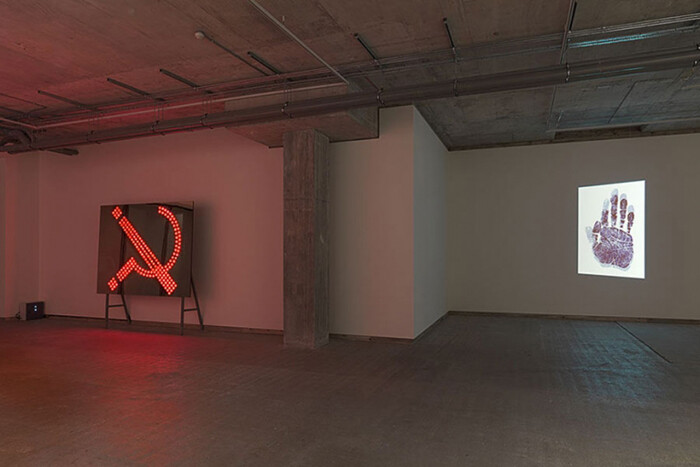
The crossed hammer-and-sickle insignia of the Bolshevik revolution has a sense of certainty to it. But it’s an old design, and a lot has happened since it first declared the coming triumph of the proletariat. So Marks (2011) the first work you see on entering Frith Street Gallery, has a sort of shock-value to its reworking of the symbol, opening up an idea that had seemed relegated to history. Set into a large mirrored rectangle is an array of red lights in the shape of an exclamation mark (standing in for the hammer) and a question mark (for the sickle), with the two forms lighting up in slow sequence. No longer the herald of the revolutionary momentum of 1917, in the hands of New Delhi-based Raqs Media Collective the hammer-sickle form becomes a brilliantly succinct visual pun, which crystalizes the acute sense of uncertainty that courses through the current turmoil of the global political present. It’s a mix of exclamation and confusion that knows what it rejects but cannot define what it wishes to claim. There’s an urgency in the demands for something new, but what?
These recent works by the collective aren’t agitprop, however. Rather, they variously express the group’s …
February 16, 2012 – Review
Andrea Büttner’s “Moos/Moss”
Laura McLean-Ferris
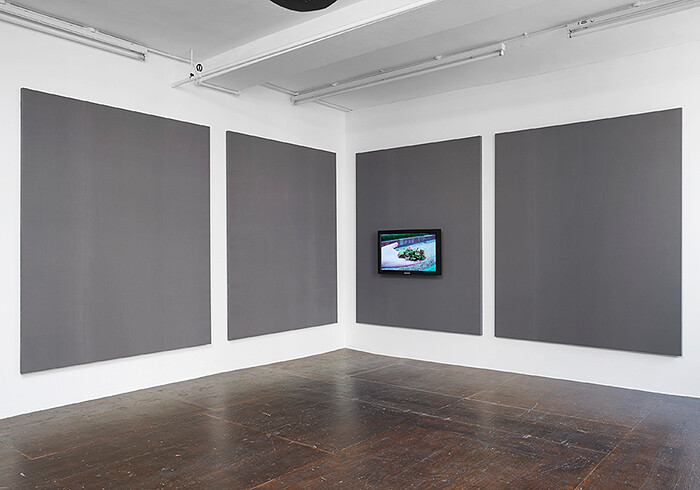
Andrea Büttner’s second show at Hollybush Gardens is a study in humility, painted in a shade of don’t-look-at-me grey. The dominant color in the exhibition is that particular commonplace grey of worker’s uniforms—the cheap, mass-produced pencil skirts of hotel workers and public servants, or school uniform blazers. It’s the fabric used to make such clothing that Büttner has stretched over canvas to create several large “fabric paintings.” One immediately thinks of Gerhard Richter’s Grey painting series (1967–1986), yet the varyingly placed stitched seams running vertically down each of Büttner’s panels nod quietly to the “zips” of Barnett Newman’s paintings. Nowhere does this dull fabric look more like a uniform than down this line, which immediately brings to mind the long seam on a pair of trousers. Unlike Newman’s zips, however, these fabric paintings could, theoretically, be physically ripped apart—split down those long seams, as though one might be able to liberate a gloriously fleshy expanse of hips or thighs beneath. But, for now, everything is covered over, modestly.
Though the seams create an unlikely point of tension, such interpretational inflections are accentuated if one is made aware of Büttner’s interest in humility and shame. For her previous exhibition here she painted …
January 17, 2012 – Review
Anselm Kiefer’s “Il Mistero delle Cattedrali”
JJ Charlesworth
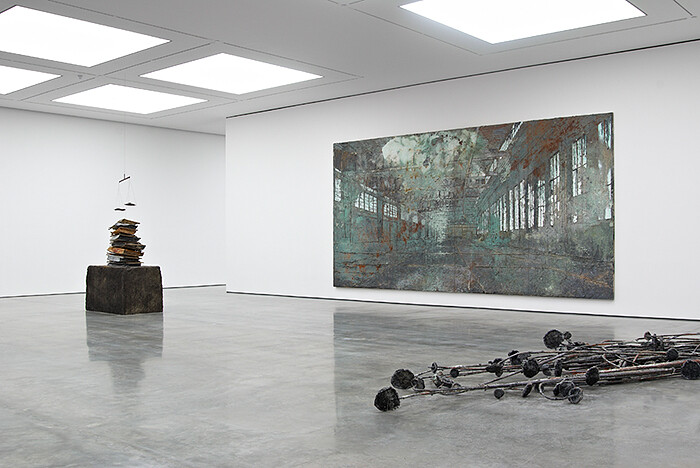
Commenting on new work by a “great” artist is always difficult. The task is fraught with paradoxes. After all, the moment you’re faced with recent work from an artist who has long ago been elevated to the canon of contemporary art history, what is there left to say? The work is a bit better than before? It’s a bit worse? It’s completely changed but the new stuff is still OK too? In essence, the more provisional, fleeting act of criticism grinds up against the massive gears of institutional validation—all the scholarship, the essays, the catalogues, the market values… the sheer sense of reputation that is at stake. And, of course, great artists nowadays no longer do us the courtesy of dying young, but carry on, being relentlessly great, making new work, for decade after decade after decade. Like Mick Jagger.
Now, if any artist’s work bears down on you in these terms, it’s that of Anselm Kiefer. Here in the huge, museum-scale galleries of White Cube’s newest branch, Kiefer presents six typically enormous paintings, and a host of sculptures, mostly from the last two years, but with a few dating back to the end of the 1980s. Winding through them is …
December 21, 2011 – Review
"The Mystery of Appearance"
Laura McLean-Ferris
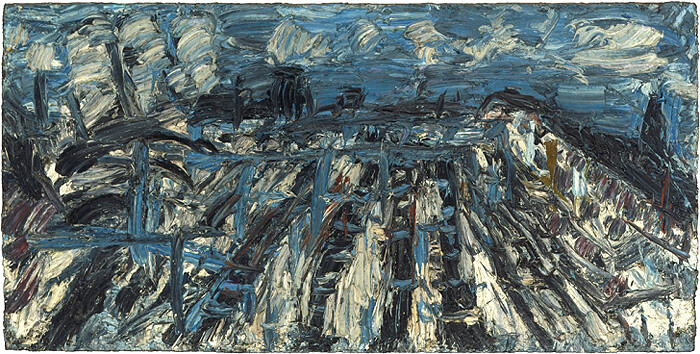
Willesden Junction, London, is not a particularly pretty place. It wasn’t in 1966, when Leon Kossoff painted Willesden Junction, Summer No. 1, and it’s not now. Overwhelmingly brown—a sprawling intersection of converging train tracks into a vast expanse of metal, rust, stones, and dirt—it is industrial and unlovely. Kossoff, however, his brush loaded with paint, rendered this place strangely beautiful and thick with optimism. The impasto has the tactile qualities of physical handling which gives a strong sense of the built environment, but it is also the screaming peacock blueness of the sky, on a warm summer’s day, which the artist has rendered as a physical presence too. Surprising blue dashes and stripes come down from the sky to mingle with the mess of drab blacks and browns below, a melange of trains, tracks, and platforms at the city’s fringe.
“The Mystery of Appearance” at Haunch of Venison, curated by Catherine Lampert, is a “conversational” exhibition between ten British post-war painters. The show is a subtle repositioning of what was in 1976—to some negative effect—proclaimed a “School of London,” by R.B. Kitaj, to corral together a set of painters who concentrated on figuration while minimalism and abstraction dominated critical attention. It …
November 6, 2011 – Review
Moyra Davey’s "Les Goddesses"
Gareth Bell-Jones

Black-and-white images of young androgynous women illustrate the introduction to Moyra Davey’s video Les Goddesses (2011). Wearing tight white t-shirts and cropped black hair, they stare directly into the lens. Davey speaks over the images in monotone, and introduces the female lead of the film, the protofeminist philosopher Mary Wollstonecraft, as well as her children and her lovers. Various shots of the same four figures, together or paired in front of a white colorama, individually on turf, against a brick wall: the characters Davey tells us of become the young women that we see.
Davey’s new video is just over an hour long and is served in chapters. Title screens herald each section and footage alternates from close detail of photographs and books, static shots of Davey’s loft apartment, and shots from her windows. It’s unclear if she has just moved to the place. The apartment feels like a lonely Sunday afternoon. Quiet and contemplative, melancholic even. Bookshelves are half empty and frames packed in bubble-wrap.
Davey paces the apartment carrying a handheld recorder. One white headphone is held to her ear, the other lies dangling. She is determined and concentrated as she speaks, making sure she follows the recording. Unpaid …
March 31, 2011 – Review
Ben Rivers’s, "Slow Action" at Matt’s Gallery, London
Anna Gritz
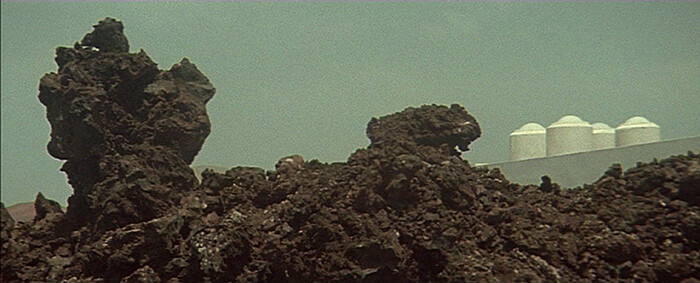
On Saturday September 30th 1967, Robert Smithson boarded the number 30 Inter-City bus to Passaic, carrying with him a copy The New York Times, a spiral notebook, a paperback of Brian Aldiss’s Earthworks and his instamatic camera. This kit of the modern day explorer was most likely not so different to that used by Ben Rivers when he set out in 2010 to shoot his most recent film Slow Action. Smithson explored Passaic, New Jersey, identifying new monuments in the suburban post-industrial landscape and discovering the ruins of an alien prehistoric society. In Slow Action, Rivers created an island biogeography in four chapters. Narrated in the neutral tone and scientific language of 1950s ethnographic documentaries, the history, ecosystem, and inhabitants’ of each of the four isolated landmasses unfold from the register of the ‘great encyclopedia’—as the narrator describes the source.
Two narrators negotiate the utopian potential of the four islands, channeling the perspective of an unspecified ‘curator.’ Film critic Ilona Halberstadt’s alluring, yet slightly metallic voice was intentionally chosen by Rivers for this role to reference Werner Herzog’s collaboration with film critic Lotte Eisner in his film Fata Morgana (1971). The voice-over narrative was written by Mark von Schlegell independently to …
January 24, 2011 – Review
Peter Coffin’s "Cosmolology + 1" at Herald St, London
Anna Gritz
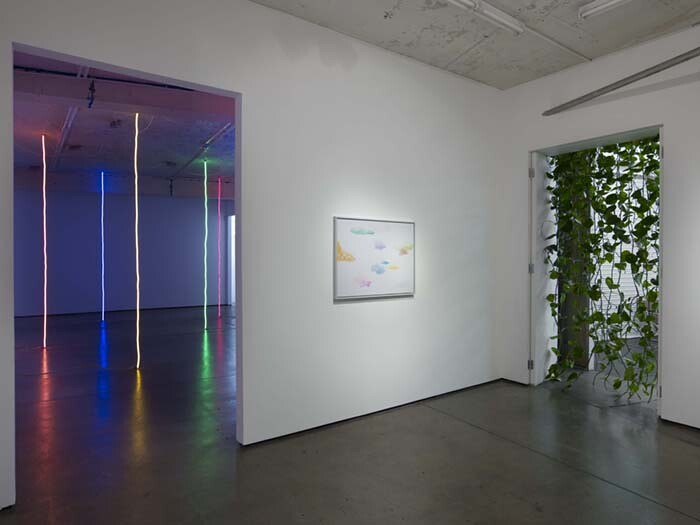
There is something theatrical about Peter Coffin’s recent exhibition at Herald St. The scene is set for what appears to be a science-play consistent of three main set components: clouds, hanging plants, and neon wires—backdrops, curtains, and stage lighting. The gallery/stage functions as a cosmic model, or rather a rehearsal of the cosmic process as Antonin Artaud would call it—the study of the study of the study of the Cosmos.
Like in any exploration, the subject reveals itself bit-by-bit, reliant on the point of view of the visitor, which slowly takes shape through the act of conquering space. That is, the visitor turned actor performs this play collectively with the works on view. In the first room, in the midst of an arrangement of seven thin neon tubes that wriggle in erratic, vertical lines from ceiling to floor, Untitled (Lines), 2011, look like jungle lianas, each flickering in a different color taken from the Newtonian color spectrum. Yet there is something materially unstable and slightly unnerving about these solid glass tubes and the way they reflect every move in a multifarious shadow play onto the gallery walls. Whoever meanders through the colonnade of light is engulfed in a light therapy of …
December 4, 2010 – Review
Jimmie Durham’s "Arts, Media, and Sports" at Sprovieri, London
Colin Chinnery

One enters the modest exhibition space of Sprovieri through what looks like a homemade security gate. The title of the show, “Arts, Media, and Sports,” hails from atop of this eponymous work, throwing visitors into a realm of Durhamian logic. What do these three realms—art, media, and sport—have in common, and what connects the title to the objects in the show? The show is dominated by two groups of colorful oil drums, Spring Fever (all works 2010) and Crude Oil, with multi-colored spills emanating from them. Another reoccurring motif in the show is the golf club, an object that appears in three sculptures, After ‘The Prize of the Silver Golf’, Second Life, and Some Of These People Are Dead.
The components of this exhibition form a matrix of meanings within the framework of Durham’s concerns, but there’s a sense that something is missing for it to come together as a whole. (Like the marriage of divisions in the British government’s Department for Culture, Media, and Sport.) To be fair, the works in this show were originally created for the Tatton Park Biennial (2010), and Durham’s solo show at the Glasgow Sculpture Studios (April 2010) called “Universal Miniature Golf (The Promised Land).” …
November 1, 2010 – Review
Angus Fairhurst at Sadie Coles HQ, London
Karen Archey
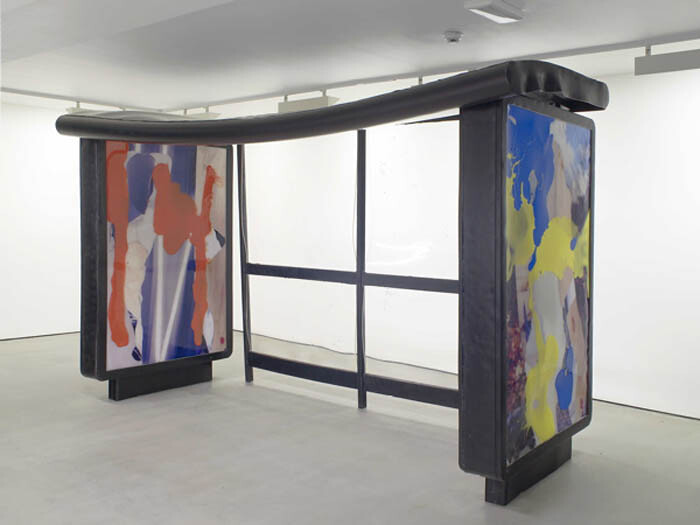
Beyond the overwhelming personal tragedy, one of the many unfortunate consequences of suicide is that a life’s work is often mitigated through the lens of it. For Angus Fairhurst’s first gallery exhibition since his 2008 suicide, it is at once impossible to elide this tragedy yet simultaneously a disservice to let the artist’s death supersede his work’s autonomy. Curated and installed by artists Rebecca Warren and Urs Fischer at Sadie Coles HQ in London, the exhibition seeks to join key works in Fairhurst’s career, ranging from intimate graphite drawings to various sculptures to a larger installation downstairs. Most compellingly on display are Fairhurst’s iconic bronze gorillas supported by newly constructed plinths in tribute to the artist. Commissioned by Warren and Fischer, the plinths range from a hefty, inscribed cast iron totem (designed by Damien Hirst) to castoff cardboard banana boxes, all created by sundry fellow Young British Artists.
Fairhurst, a lesser-known contemporary of YBAs Sarah Lucas, Tracey Emin, and Gary Hume, rose to prominence in the early 1990s exhibiting throughout England and Europe. His infamous 1991 prank commenting on the insularity of the art world, “Gallery Connections,” put confused attendants of London art museums and galleries unwittingly in touch with one …
July 21, 2010 – Review
Fiona Banner’s "Harrier and Jaguar" at Tate Britain
Aoife Rosenmeyer
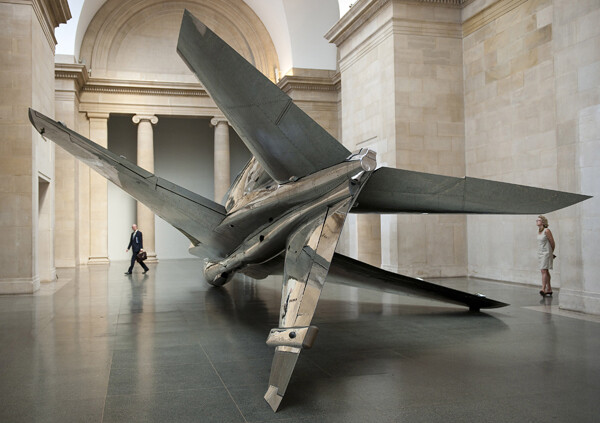
Plucked from the sky, a Sea Harrier and a Sepecat Jaguar jet have fallen to earth in Tate Britain. It’s the work of Fiona Banner, and in an average summer critics would be busy drawing tidy parallels between the work and the UK’s ongoing military involvement in overseas conflicts. But these current affairs were overshadowed instead by a kerfuffle sparked when arts practitioners criticised the Tate’s sponsorship by BP in the Guardian newspaper on the day of the opening. As I approached the galleries a few days later, the high-pitched argument was ringing in my ears: critic Jonathan Jones had written that given impending cuts in cultural funding, ‘if they [museums] can get money from Satan himself, they should take it’; ‘art will sell its soul, surrender all moral integrity’ countered artist activist John Jordan the next.
As it turns out, Banner’s machines are so seductive it is well nigh impossible to feel any self-righteous anger, be it directed toward BP, activists or tub-thumping columnists. In one gallery, the entire Sea Harrier is suspended from its tail, nose hovering above the floor. By painting a dark beak onto the nose and light feather markings on its wings Banner has changed its …
Load more
